Master Gardener Plant Sale 2025

Saturday, April 26
9am to 2pm
Pontotoc Farmers Market
25 West Jefferson Street
Pontotoc MS



2025 Plant List
ANNUALS
AGERATUM, BLUE MINK
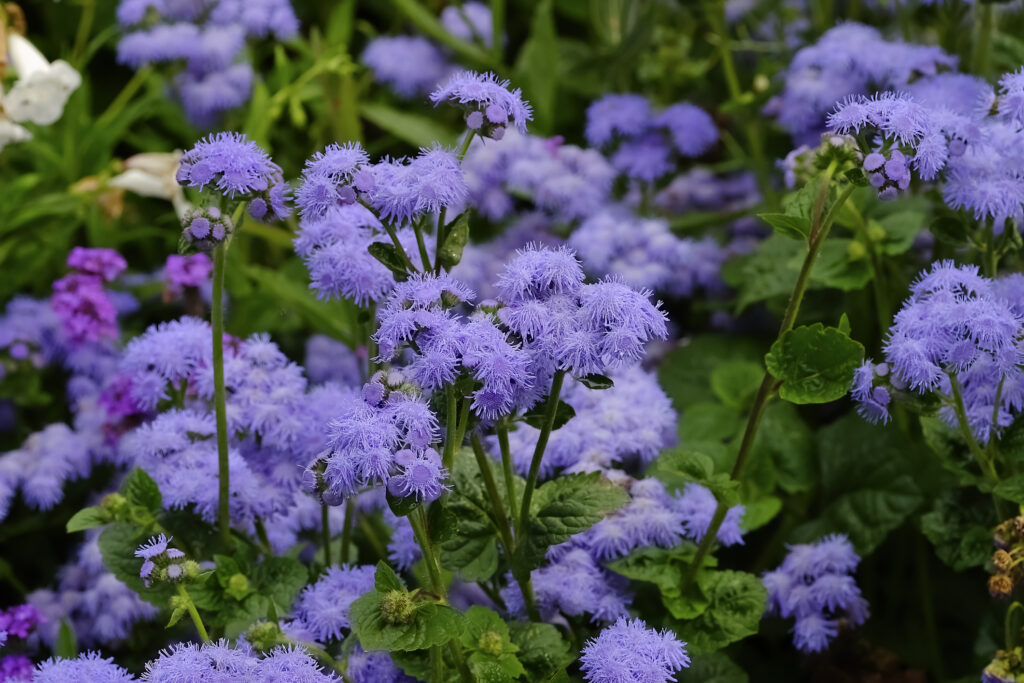
| Common Names | Sweet alyssum, alyssum, carpet flower |
| Botanical Name | Lobularia maritima |
| Family | Brassicaceae |
| Plant Type | Herbaceous perennial |
| Mature Size | 3–10 in. tall, 2–4 in. wide |
| Sun Exposure | Full or partial |
| Soil Type | Moist but well-drained |
| Soil pH | Neutral to acidic |
| Bloom Time | Spring, fall |
| Flower Color | White, pink, purple |
| Hardiness Zones | 5–9 (USDA) |
| Native Areas | Europe |
ALYSUUM
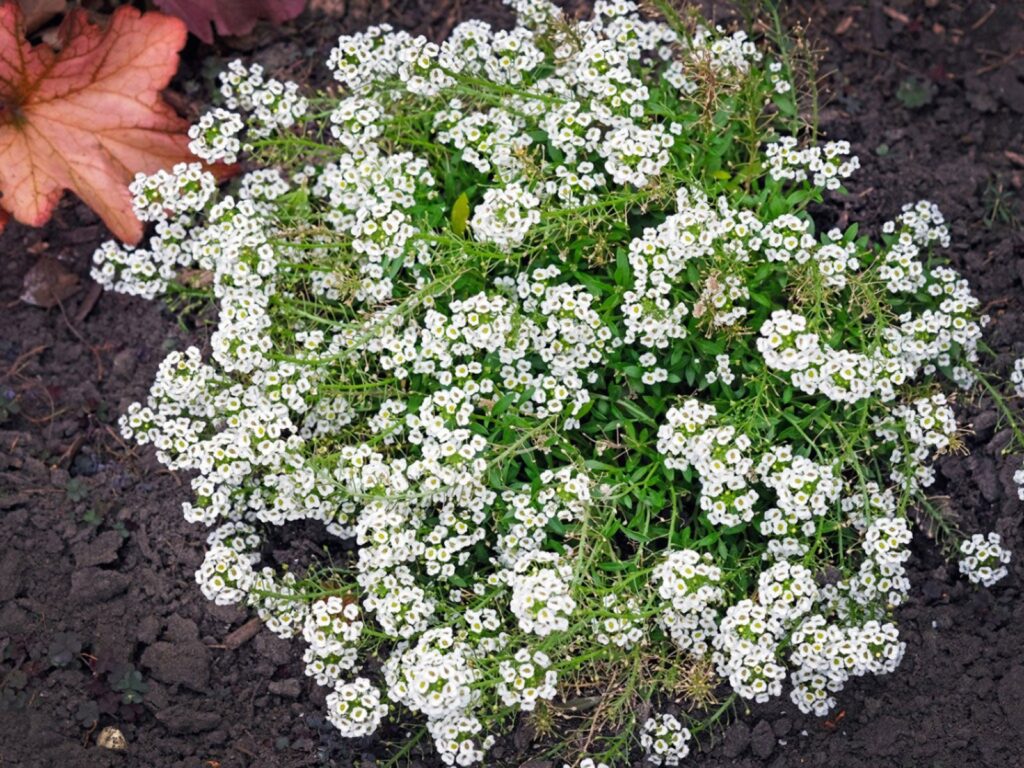
| Common Names | Sweet alyssum, alyssum, carpet flower |
| Botanical Name | Lobularia maritima |
| Family | Brassicaceae |
| Plant Type | Herbaceous perennial |
| Mature Size | 3–10 in. tall, 2–4 in. wide |
| Sun Exposure | Full or partial |
| Soil Type | Moist but well-drained |
| Soil pH | Neutral to acidic |
| Bloom Time | Spring, fall |
| Flower Color | White, pink, purple |
| Hardiness Zones | 5–9 (USDA) |
| Native Areas | Europe |
AMARANTH, GLOBE, Gomphrena, Perpetua
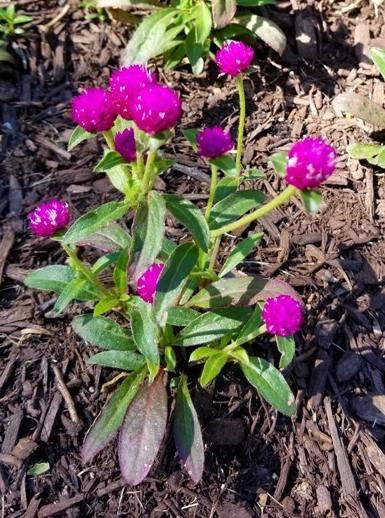
| Life cycle: | Annual |
| Sun Requirements: | Full Sun |
| Minimum cold hardiness: | Zone 2 -45.6 °C (-50 °F) to -42.8 °C (-45°F) |
| Maximum recommended zone: | Zone 11 |
| Plant Height: | 1- 2 feet |
| Plant Spread: | 6-12 inches |
| Flowers: | Showy |
| Flower Color: | Pink Purple Red White Other: Bright magenta |
| Flower Time: | Late spring or early summer Summer Late summer or early fall |
AMARANTH, JOSEPH’S COAT
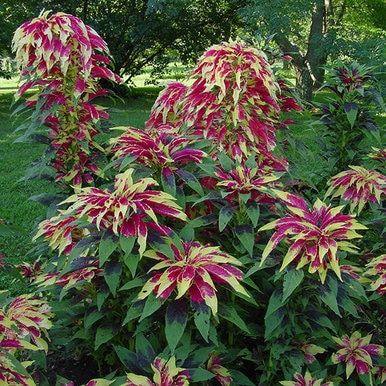
| Common Names | Amaranth, amaranthus, love lies bleeding, tassel flower |
| Botanical Name | Amaranthus spp. |
| Family | Amaranthaceae |
| Plant Type | Annual |
| Mature Size | 2–4 ft. tall, 1-2 ft. wide |
| Sun Exposure | Full, partial |
| Soil Type | Moist but well-drained |
| Soil pH | Neutral, acidic |
| Bloom Time | Summer, fall |
| Flower Color | Red |
| Hardiness Zones | 2-11 (USDA) |
| Native Area | North America, South America |
AMARANTH, LOVE LIES BLEEDING

| Common Name | Love-lies-bleeding, lovelies bleeding, tassel flower, foxtail amaranth |
| Botanical Name | Amaranthus caudatus (synonyms: Amaranthus edulis, Amaranthus leucocarpus, Amaranthus mantegazzianus) |
| Family | Amaranthaceae |
| Plant Type | Annual, herbaceous |
| Mature Size | 2 to 5 ft. tall, 1 to 2 ft. wide |
| Sun Exposure | Full sun to part shade |
| Soil Type | Moist, average, well-drained, or poor |
| Soil pH | Acidic, neutral |
| Bloom Time | July to frost |
| Flower Color | Red, purple, green, gold |
| Hardiness Zones | 2 to 11, USDA |
AMARANTH, RED
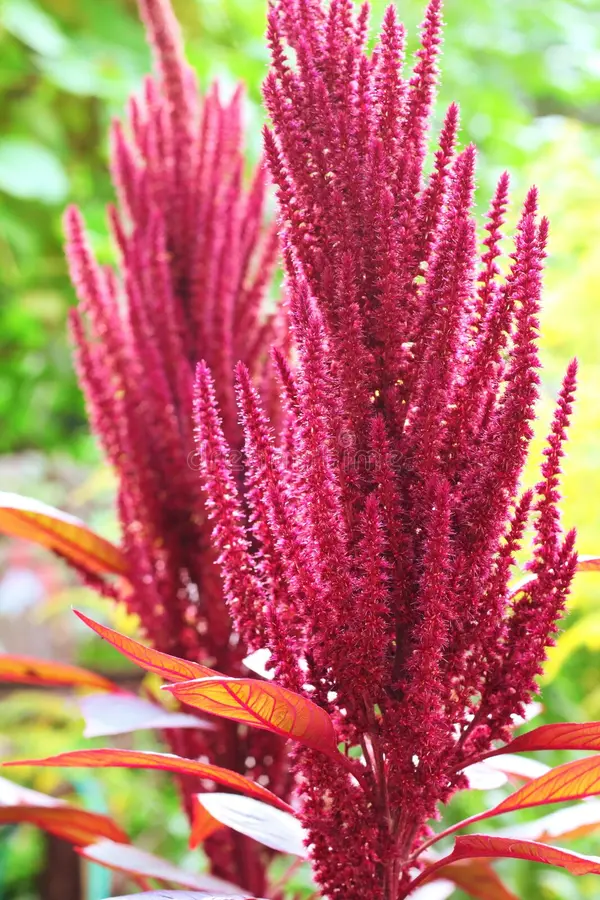
| Common Name | Amaranth, Red |
| Botanical Name | Amaranthus cruentus |
| Family | Amaranthaceae |
| Plant Type | Annual |
| Mature Size | 2–4 ft. tall, 1-2 ft. wide |
| Sun Exposure | Full, partial |
| Soil Type | Moist but well-drained |
| Soil pH | Neutral, acidic |
| Bloom Time | Summer, fall |
| Flower Color | Red |
| Hardiness Zones | 2-11 (USDA) |
| Native Area | North America, South America |
ASPARAGUS FERN
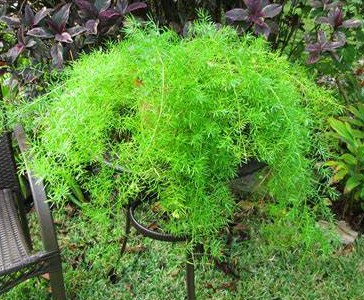
| Common Name | Asparagus fern |
| Botanical Name | Asparagus aethiopicus, A. densiflorus |
| Family | Asparagaceae |
| Plant Type | Herbaceous perennial |
| Mature Size | Up to 3 ft. tall, 4 ft. wide |
| Sun Exposure | Partial (outdoor); bright, indirect light (indoors) |
| Soil Type | Well-drained potting mix |
| Soil pH | Slightly acidic (6.5-6.8) |
| Bloom Time | Spring to fall |
| Flower Color | White; flowers are insignificant |
| Hardiness Zones | 9-11 (USDA) |
| Native Area | South Africa |
ASTER, CALLISTEPHUS TALL PAEONY DUCHESS

Lorem ipsum dolo
| Common Names | Asters, New England asters, frost flowers |
| Botanical Name | Symphyotrichum spp. |
| Family | Asteraceae |
| Plant type | Herbaceous, perennial |
| Mature Size | 1–6 ft. tall, 1–4 ft. wide |
| Sun Exposure | Full |
| Soil Type | Loamy, well-drained |
| Soil pH | Neutral, acidic |
| Bloom time | Summer, fall |
| Flower Color | Purple, pink, blue, white |
| Hardiness Zones | 3-8 (USDA) |
| Native Area | North America |
r sit amet, consectetur adipiscing elit. Ut elit tellus, luctus nec ullamcorper mattis, pulvinar dapibus leo.
BABY’S BREATH

| Common Name | Baby’s breath |
| Botanical Name | Gypsophila spp. |
| Family | Caryophyllaceae |
| Plant Type | Perennial, annual |
| Mature Size | 2–3 ft. tall, 2–3 ft. wide |
| Sun Exposure | Full |
| Soil Type | Well-drained |
| Soil pH | Alkaline, neutral |
| Bloom Time | Summer, fall |
| Flower Color | White, pink |
| Hardiness Zones | 3–9 (USDA) |
| Native Area | Europe |
BACHELOR BUTTON
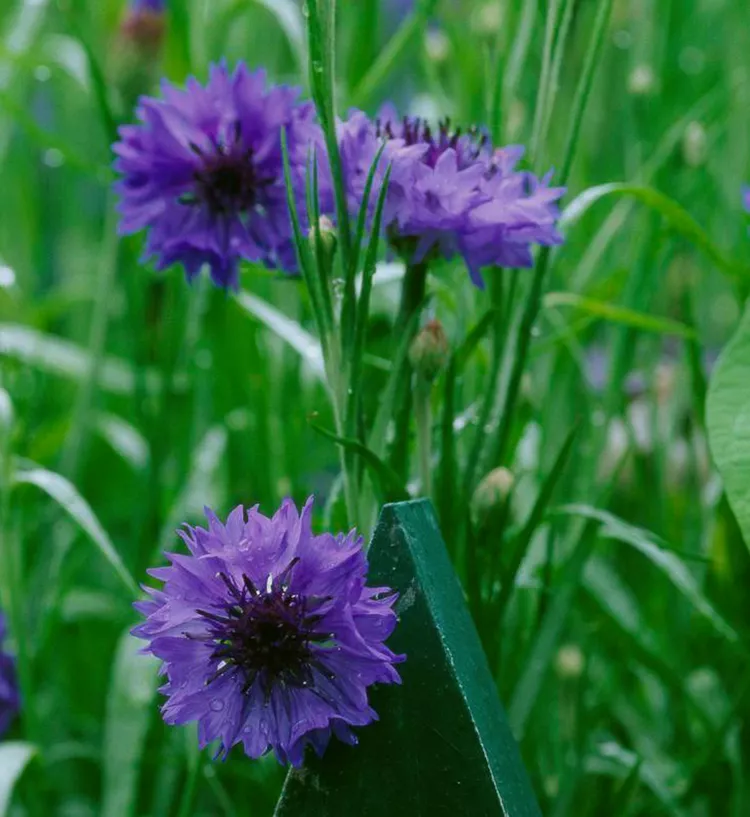
| Genus Name | Centaurea cyanus |
| Common Name | Bachelor’s Button |
| Plant Type | Annual |
| Light | Part Sun, Sun |
| Height | 1 to 3 feet |
| Width | 1 to 2 feet |
| Flower Color | Blue, Pink, Purple, White |
| Foliage Color | Blue/Green, Gray/Silver |
| Season Features | Fall Bloom, Spring Bloom, Summer Bloom |
| Special Features | Cut Flowers, Good for Containers, Low Maintenance |
| Zones | 10, 11, 2, 3, 4, 5, 6, 7, 8, 9 |
| Propagation | Seed |
BALSAM, INPATIENS, TOUCH-ME-NOTS

| Common Name | Garden balsam, rose balsam, touch-me-not |
| Botanical Name | Impatiens balsamina |
| Family | Balsaminaceae |
| Plant Type | Annual |
| Mature Size | 6–30 in. tall, 6–12 in. wide |
| Sun Exposure | Full, partial |
| Soil Type | Loamy, moist, well-drained |
| Soil pH | Acidic, neutral |
| Bloom Time | Spring, summer, fall |
| Flower Color | Purple, pink, red, white, bicolors |
| Hardiness Zones | 2–11 (USDA); true annual |
BELLS OF IRELAND
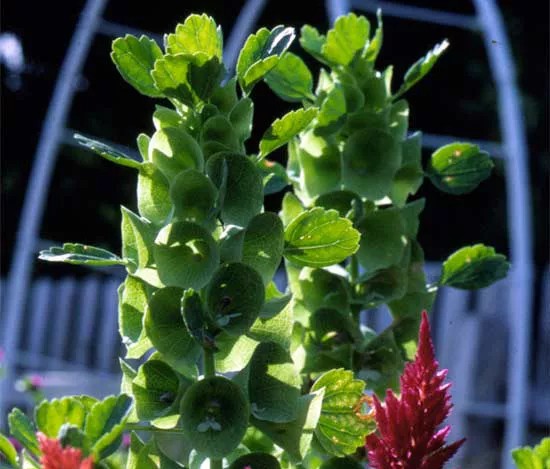
| Genus Name | Moluccella laevis |
| Common Name | Bells of Ireland |
| Plant Type | Annual |
| Light | Sun |
| Height | 1 to 3 feet |
| Width | 12 to 18 inches |
| Flower Color | White |
| Foliage Color | Blue/Green |
| Season Features | Fall Bloom, Summer Bloom |
| Special Features | Cut Flowers, Fragrance, Good for Containers |
| Zones | 10, 11, 2, 3, 4, 5, 6, 7, 8, 9 |
| Propagation | Seed |
| Problem Solvers | Deer Resistant |
BILLY BUTTON, Craspedia
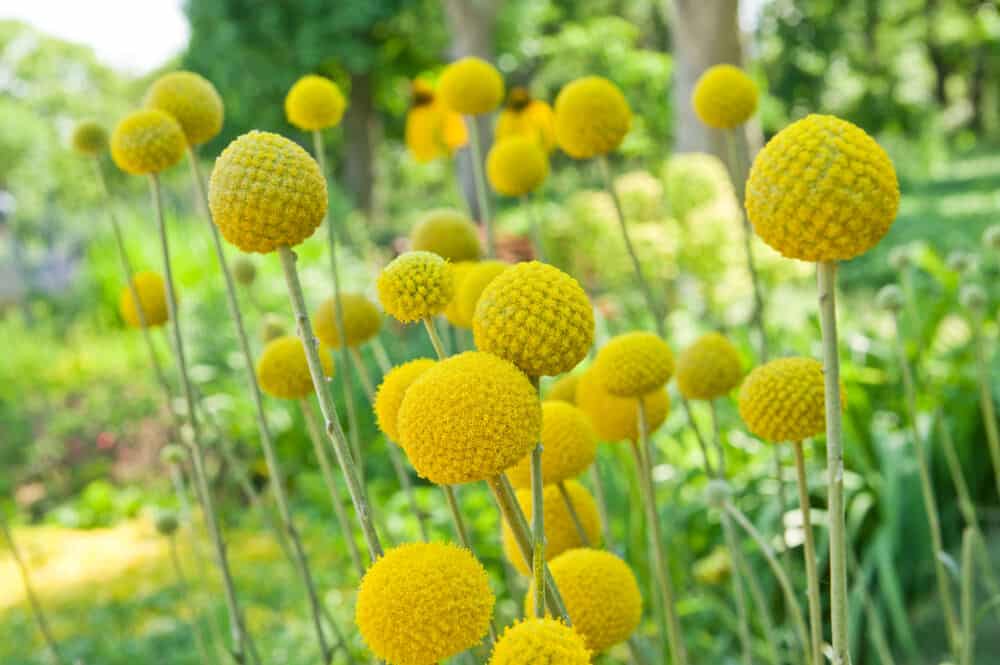
BORAGE, BLUE STAR

| Genus Name | Borago officinalis |
| Common Name | Borage |
| Additional Common Names | Bee bread, Starflower, Ox’s tongue, Common bugloss, Cool tankard |
| Plant Type | Annual, Herb |
| Light | Part Sun, Sun |
| Height | 1 to 3 feet |
| Width | 1 to 2 feet |
| Flower Color | Blue, White |
| Foliage Color | Blue/Green |
| Season Features | Reblooming, Spring Bloom, Summer Bloom |
| Special Features | Attracts Birds, Good for Containers, Low Maintenance |
| Propagation | Seed, Stem Cuttings |
| Problem Solvers | Deer Resistant, Drought Tolerant |
BLANKET FLOWER
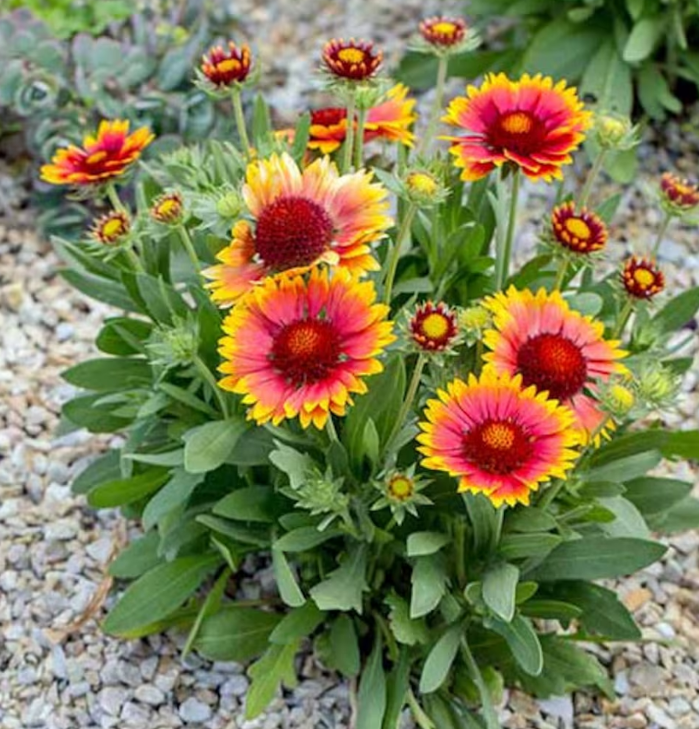
| GENUS NAME | Gaillardia |
| COMMON NAME | Blanket Flower |
| PLANT TYPE | Perennial |
| LIGHT | Sun |
| HEIGHT | 1 to 3 feet |
| WIDTH | 1 to 2 feet |
| FLOWER COLOR | Orange, Purple, Red, White, Yellow |
| FOLIAGE COLOR | Blue/Green, Gray/Silver |
| SEASON FEATURES | Fall Bloom, Summer Bloom |
| SPECIAL FEATURES | Cut Flowers, Good for Containers, Low Maintenance |
| ZONES | 10, 3, 4, 5, 6, 7, 8, 9 |
| PROPAGATION | Division, Seed, Stem Cuttings |
| PROBLEM SOLVERS | Deer Resistant, Drought Tolerant, Groundcover |
CANTERBURY BELLS

| Common Name | Canterbury bells, cups and saucers |
| Botanical Name | Campanula medium |
| Family | Campanulaceae |
| Plant Type | Annual, biennial |
| Mature Size | 20-26 in. tall, 12-18 in. wide |
| Sun Exposure | Full, partial |
| Soil Type | Moist but well-drained, loamy, sandy |
| Soil pH | Neutral, acidic, alkaline |
| Bloom Time | Summer |
| Flower Color | Pink, white, purple, blue |
| Hardiness Zones | 5-8 (USDA) |
| Native Area | Europe |
CARDINAL CLIMBER VINE
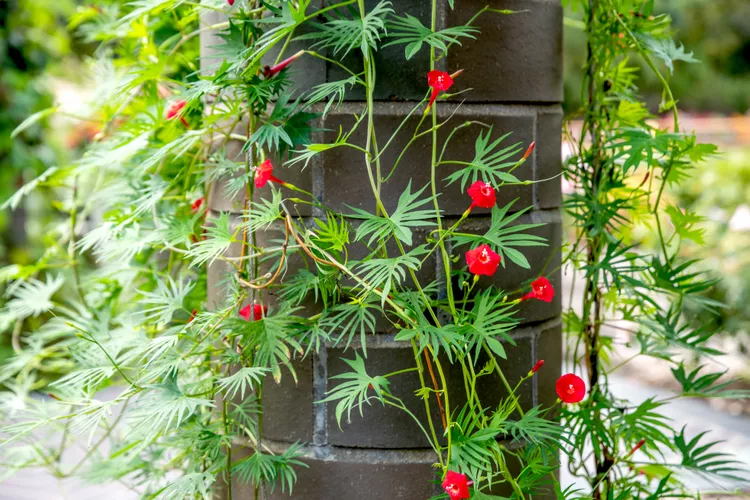
| Common Name | Cardinal climber |
| Botanical Name | Ipomoea × multifida |
| Family | Convolvulaceae |
| Plant Type | Annual, vine |
| Mature Size | 6-15 ft. long, 9-2 in. wide |
| Sun Exposure | Full sun, partial sun |
| Soil Type | Well-drained |
| Soil pH | Neutral |
| Bloom Time | Summer thru fall |
| Flower Color | Red |
| Hardiness Zones | 10-12 (USDA); annual in colder zones |
| Native Area | Hybrid plant, no native range |
CAROLINA JASMINE

Carolina jessamine (Gelsemium sempervirens) is one of the most beautiful vines of the South. It covers fences and trees in open woodlands and along roadsides throughout the Southeast with its slender vines and bright yellow flowers. It is the state flower of South Carolina.
Carolina jessamine (Gelsemium sempervirens) is South Carolina’s state flower.
Mature Height/Spread
Carolina jessamine grows to 20 feet or more when grown as a vine. It can also be grown as a ground cover, maintained with a yearly cutting in late spring after flowering to 3 feet or less.
Growth Rate
This vine’s growth rate is moderate, growing rapidly once established or with rich soil and adequate water.
Ornamental Features
Sweetly scented, golden yellow flowers cover the cascading, fine textured foliage from February to April. The trumpet-shaped blooms have 5 lobes, are 1 to 1½ inches long, and are attractive to butterflies. The shiny evergreen leaves are 1 to 3 inches long on 10-to-20-foot tall vines.
Landscape Use
Carolina jessamine is easy to grow. It is attractive on an arbor where the slender branches hung with yellow flowers can be seen from below. This plant will stay in scale and can be used on decks and porches and near patios and entryways. It is good in containers and as a ground cover along steep banks to help control erosion.
Carolina jessamine tolerates either full sun or partial shade. Flowering is more prolific and foliage growth is denser in full sun.
This vine is very adaptable and will grow in a variety of conditions. For best results, plant it in rich, well-drained soil. Moist soil is ideal, but the vine is able to withstand periods of drought once established. Carolina jessamine grows well in USDA Zones 6 to 9.
Plant from containers during cool fall weather; space plants 3 feet apart as a ground cover, and 4 to 8 feet apart for fence or trellis climbers.
Fertilize while the plant is actively growing with moderate amounts of a slow-release, balanced fertilizer, such as a 12-6-6. Do not overfeed, since excessive fertilizer can reduce flowering.
Older vines that become top heavy or sparse can be pruned back to a few feet above ground level after flowering. Remove dead or broken branches and shape the plant each year after bloom. Mow groundcovers every few years to maintain density.
CELOSIA, SYLPHID
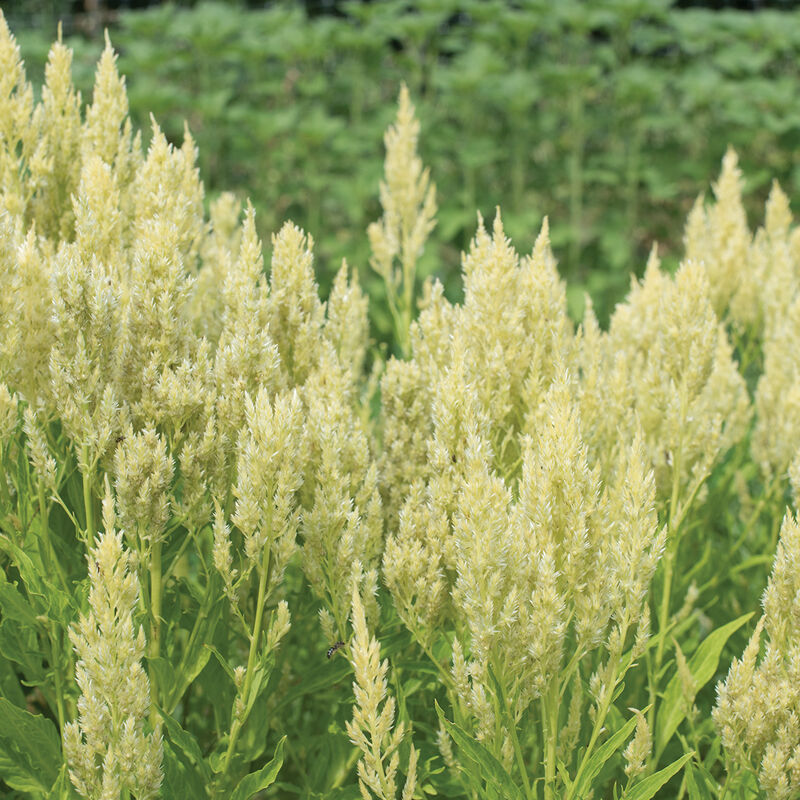
| Common Name | Cockscomb, woolflowers, celosia |
| Botanical Name | Celosia spp. |
| Family | Amaranthaceae |
| Plant Type | Annual |
| Mature Size | 30-40 in. tall, 12-24 in. wide |
| Sun Exposure | Full |
| Soil Type | Well drained |
| Soil pH | Acidic, neutral, alkaline |
| Bloom Time | Summer, fall |
| Flower Color | Purple, pink, white, yellow, red, orange |
| Hardiness Zones | 3-11 (USDA) |
| Native Areas | Africa, North America, South America |
CELOSIA, VINTAGE ROSE
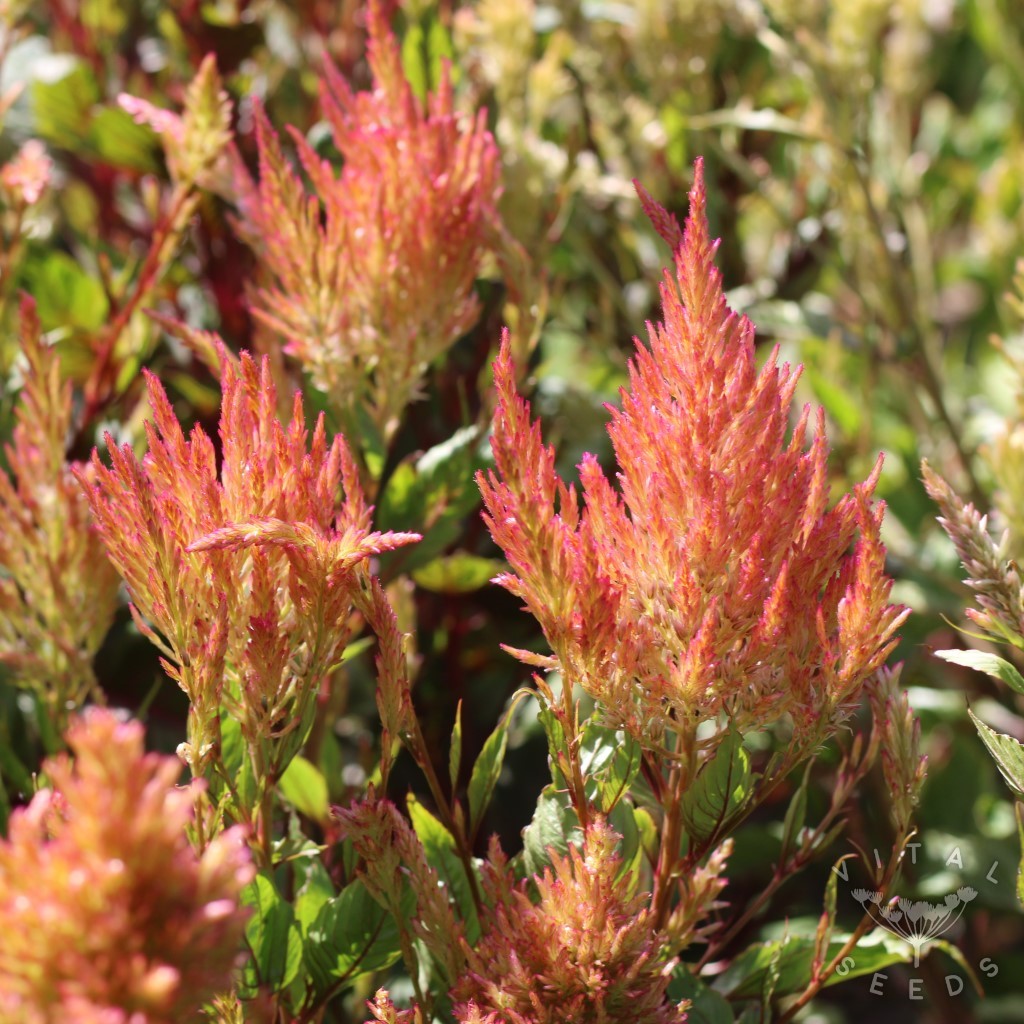
| Common Name | Cockscomb, woolflowers, celosia |
| Botanical Name | Celosia spp. |
| Family | Amaranthaceae |
| Plant Type | Annual |
| Mature Size | 36-48 in. tall, 12-24 in. wide |
| Sun Exposure | Full |
| Soil Type | Well drained |
| Soil pH | Acidic, neutral, alkaline |
| Bloom Time | Summer, fall |
| Flower Color | Purple, pink, white, yellow, red, orange |
| Hardiness Zones | 3-11 (USDA) |
| Native Areas | Africa, North America, South America |
CHAMOMILE, GERMAN
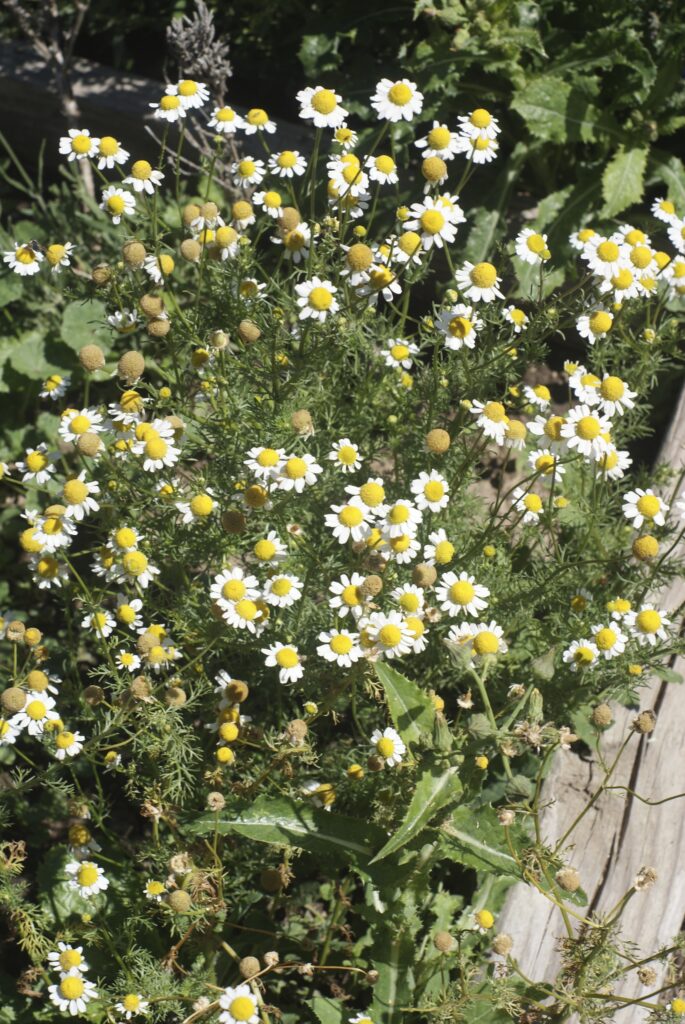
| GENUS NAME | Matricaria recutita |
| COMMON NAME | Chamomile, Germain |
| PLANT TYPE | Annual, Herb |
| LIGHT | Part Sun, Sun |
| HEIGHT | 3 to 24 inches |
| WIDTH | 10 to 12 inches |
| FLOWER COLOR | White |
| SEASON FEATURES | Spring Bloom, Summer Bloom |
| SPECIAL FEATURES | Attracts Birds, Fragrance, Good for Containers, Low Maintenance |
| ZONES | 4, 5, 6, 7, 8, 9 |
| PROPAGATION | Division, Seed |
| PROBLEM SOLVERS | Deer Resistant, Drought Tolerant, Groundcover, Slope/Erosion Control |
CHRYSANTHAMUM, CLARA CURTIS
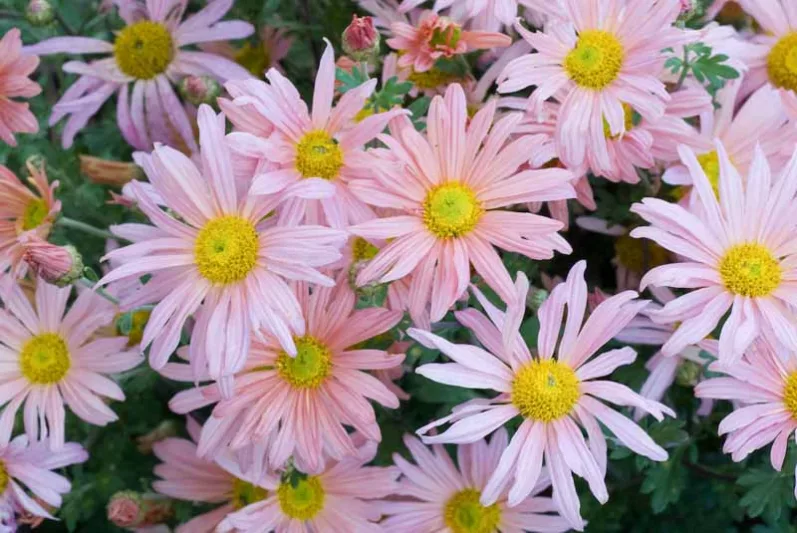
| Genus Name | Ageratum houstonianum |
| Common Name | Ageratum |
| Additional Common Names | Floss flower |
| Plant Type | Annual |
| Light | Part Sun, Sun |
| Height | 6 to 12 inches |
| Width | 6 to 18 inches |
| Flower Color | Blue, Pink, Purple, White |
| Foliage Color | Blue/Green |
| Season Features | Fall Bloom, Spring Bloom, Summer Bloom |
| Special Features | Good for Containers, Low Maintenance |
| Propagation | Seed |
CLEOME, ROSE QUEEN (SPIDER FLOWERS, KITTY WHISKERS)
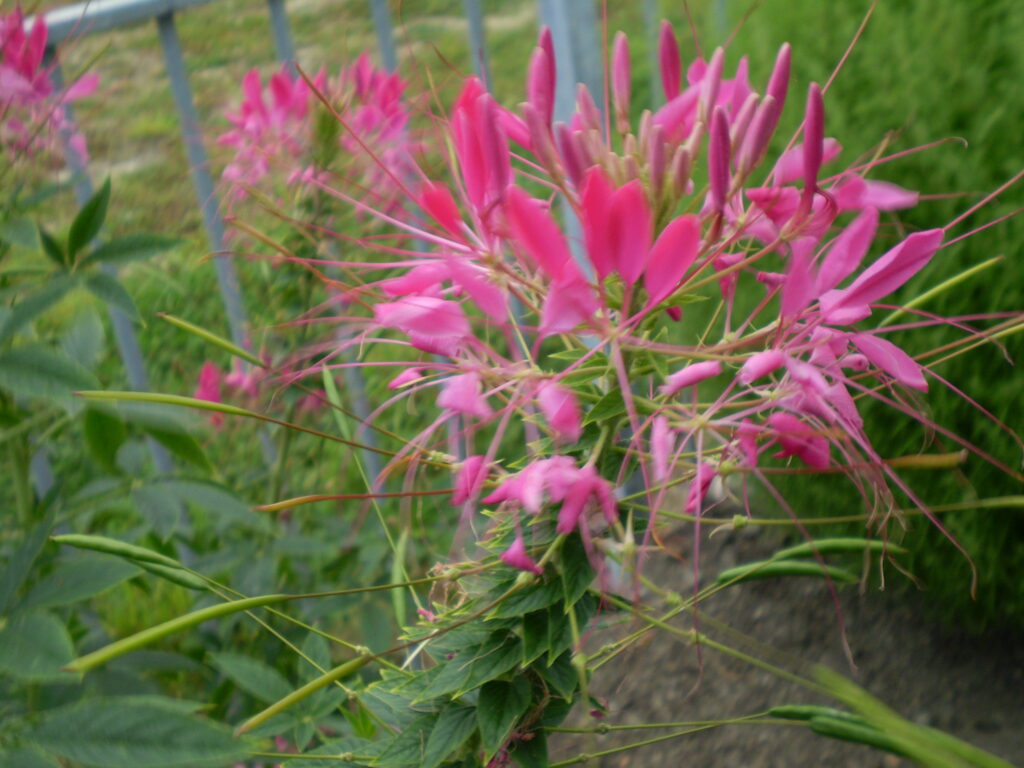
| Common Name | Cleomes, spider flower, Rocky Mountain bee plant, stinking clover |
| Botanical Name | Cleome hassleriana |
| Family | Cleomaceae |
| Plant Type | Annual |
| Mature Size | 1.5 to 5 feet tall and 1 to 2 feet wide |
| Sun Exposure | Full sun, part sun |
| Soil Type | Average, well-drained |
| Soil pH | Acidic to neutral |
| Bloom Time | Summer |
| Flower Color | White, pink, lavender, rose |
| Hardiness Zones | 10, 11 |
| Native Area | South America |
COLEUS, RAINBOX MIX
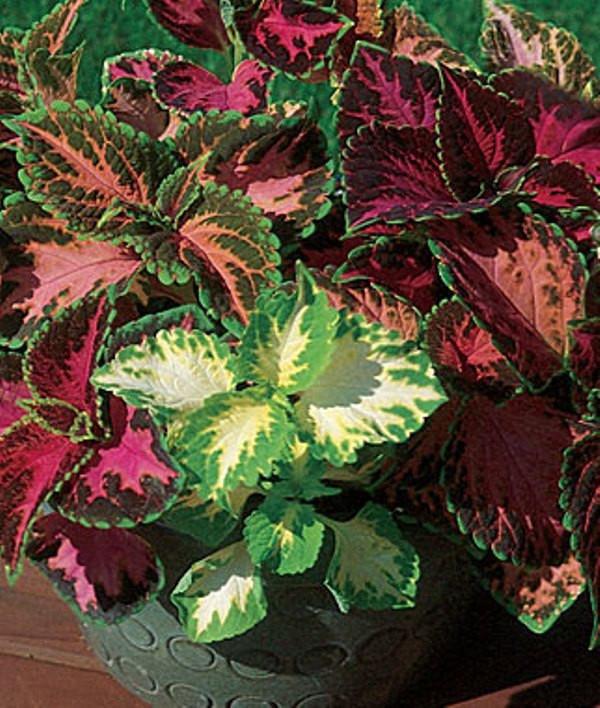
| Common Name | Coleus |
| Botanical Name | Plectranthus scutellarioides |
| Family | Lamiaceae |
| Plant Type | Herbaceous perennial (usually grown as an annual) |
| Mature Size | 6-36 in. tall and wide |
| Sun Exposure | Part shade to full shade |
| Soil Type | Rich, moist, loose soil, well-drained |
| Soil pH | Slightly acidic to neutral (6.0 to 7.0) |
| Bloom Time | Seasonal |
| Flower Color | Blue to white |
| Hardiness Zones | 10-11 (USDA); grown as an annual everywhere |
| Native Area | Asia |
| Toxicity | Toxic to animals |
COLEUS
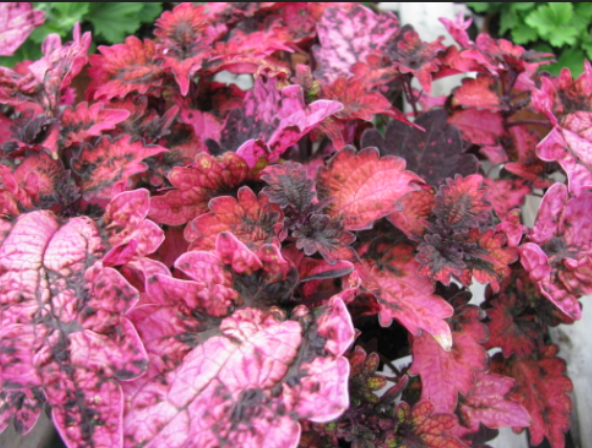
| Common Name | Coleus |
| Botanical Name | Plectranthus scutellarioides |
| Family | Lamiaceae |
| Plant Type | Herbaceous perennial (usually grown as an annual) |
| Mature Size | 6-36 in. tall and wide |
| Sun Exposure | Part shade to full shade |
| Soil Type | Rich, moist, loose soil, well-drained |
| Soil pH | Slightly acidic to neutral (6.0 to 7.0) |
| Bloom Time | Seasonal |
| Flower Color | Blue to white |
| Hardiness Zones | 10-11 (USDA); grown as an annual everywhere |
| Native Area | Asia |
| Toxicity | Toxic to animals |
COLEUS
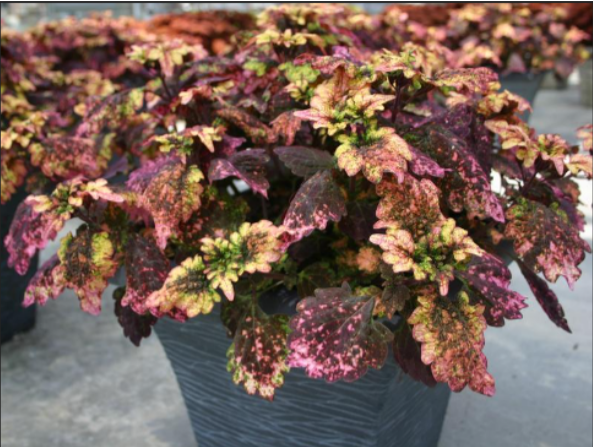
| Common Name | Coleus |
| Botanical Name | Plectranthus scutellarioides |
| Family | Lamiaceae |
| Plant Type | Herbaceous perennial (usually grown as an annual) |
| Mature Size | 6-36 in. tall and wide |
| Sun Exposure | Part shade to full shade |
| Soil Type | Rich, moist, loose soil, well-drained |
| Soil pH | Slightly acidic to neutral (6.0 to 7.0) |
| Bloom Time | Seasonal |
| Flower Color | Blue to white |
| Hardiness Zones | 10-11 (USDA); grown as an annual everywhere |
| Native Area | Asia |
| Toxicity | Toxic to animals |
COSMOS, Sensation
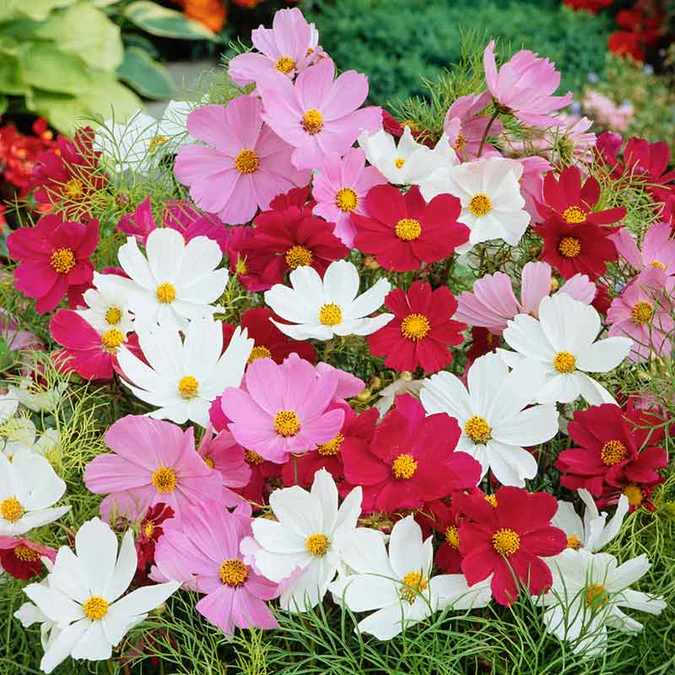
| Common Name | Cosmos, Mexican aster, cut-leaf cosmos |
| Botanical Name | Cosmos sulphureus, Cosmos bipinnatus |
| Family | Asteraceae |
| Plant Type | Annual |
| Mature Size | 1-6 ft. tall, 1-3 ft. wide |
| Sun Exposure | Full |
| Soil Type | Well-draining soil |
| Soil pH | Acidic |
| Bloom Time | Summer, fall |
| Flower Color | Yellow, white, pink, orange, red |
| Hardiness Zones | 2–11 (USDA) |
| Native Area | South America, Central America, North America |
CYPRESS VINE

| Common Name | Cypress vine, red cypress vine, Indian pink, star glory, hummingbird vine |
| Botanical Name | Ipomoea quamoclit |
| Family | Convolvulaceae |
| Plant Type | Annual vine |
| Mature Size | 6-15 ft. in length, 3-6 ft. spread |
| Sun Exposure | Full sun |
| Soil Type | Fertile, well-drained, evenly moist |
| Soil pH | Neutral, slightly acidic, slightly alkaline |
| Bloom Time | Summer into Fall (June to October) |
| Flower Color | Red; less commonly, pink or white |
| Hardiness Zones | 11-12 (USDA) |
| Native Area | Tropical America |
DAISY, AFRICAN BLUE
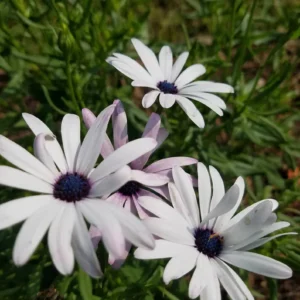
| Common Name | African daisy, cape daisy, osteospermum |
| Botanical Name | Osteospermum spp. |
| Family | Asteraceae |
| Plant Type | Perennial, annual |
| Mature Size | 1–3 ft. tall, 1–2 ft. wide |
| Sun Exposure | Full |
| Soil Type | Moist, well-drained |
| Soil pH | Acidic |
| Bloom Time | Spring, summer, fall |
| Flower Color | Purple, pink, yellow, orange, white |
| Hardiness Zones | 10–11 (USDA) |
| Native Area | Africa, Asia |
DAYLILY, STELLA D’ORO
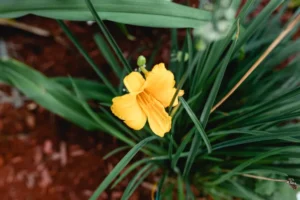
| Common Name | Stella d’Oro daylily |
| Botanical Name | Hemerocallis ‘Stella d’Oro’ |
| Family | Hemerocallidaceae |
| Plant Type | Herbaceous perennial |
| Mature Size | 9-12 inches tall, 10-12 inches wide |
| Sun Exposure | Full sun |
| Soil Type | Moist, well-drained |
| Soil pH | Acidic, neutral, alkaline |
| Bloom Time | Spring, summer |
| Flower Color | Golden yellow |
| Hardiness Zones | 3-10 (USDA) |
| Native Area | Cultivar, no native range |
DUSTY MILLER
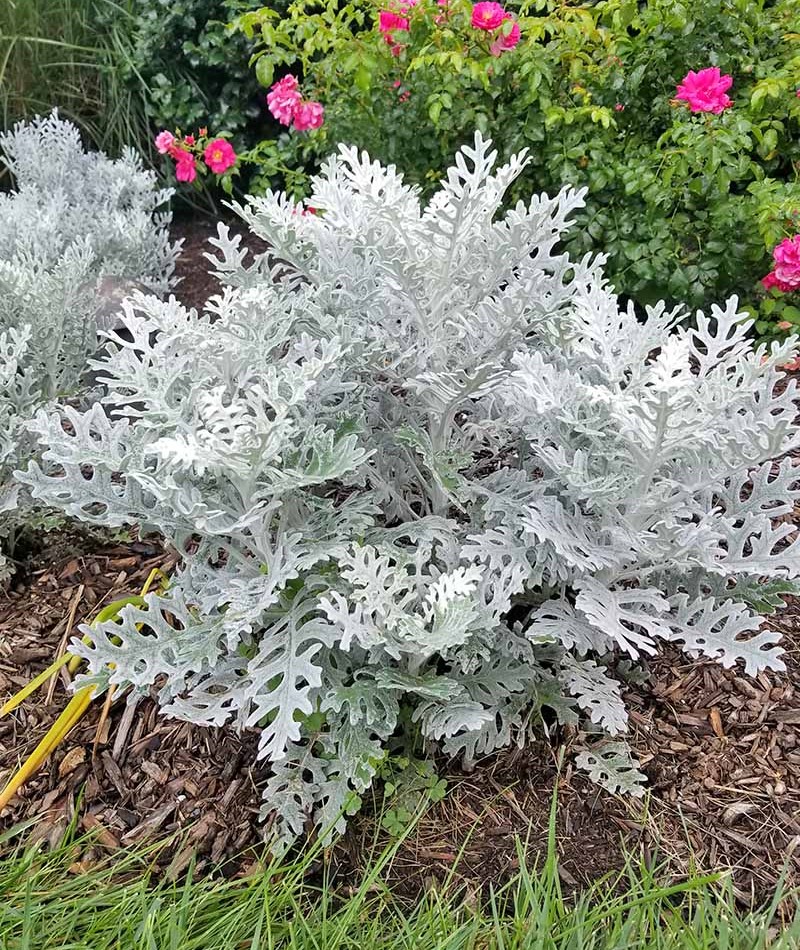
| Common Name | Dusty miller, silver dust, silver ragwort |
| Botanical Name | Jacobaea maritima |
| Family | Asteraceae |
| Plant Type | Perennial, annual |
| Mature Size | 1-2 ft. tall, 1-2 ft. wide |
| Sun Exposure | Full |
| Soil Type | Well-drained |
| Soil pH | Acidic |
| Bloom Time | Summer |
| Flower Color | Yellow |
| Hardiness Zones | 8–11 (USDA) |
| Native Area | Mediterranean |
GOBPHRENA, Audray Mix
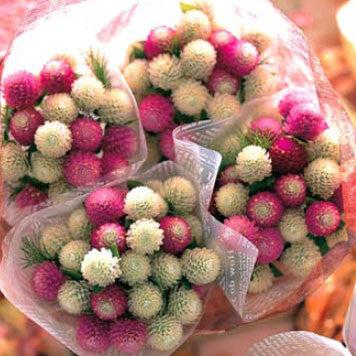
| Life cycle: | Annual |
| Sun Requirements: | Full Sun |
| Minimum cold hardiness: | Zone 2 -45.6 °C (-50 °F) to -42.8 °C (-45°F) |
| Maximum recommended zone: | Zone 11 |
| Plant Height: | 1- 2 feet |
| Plant Spread: | 6-12 inches |
| Flowers: | Showy |
| Flower Color: | Pink Purple Red White Other: Bright magenta |
| Flower Time: | Late spring or early summer Summer Late summer or early fall |
GOMPHRENA, WHITE
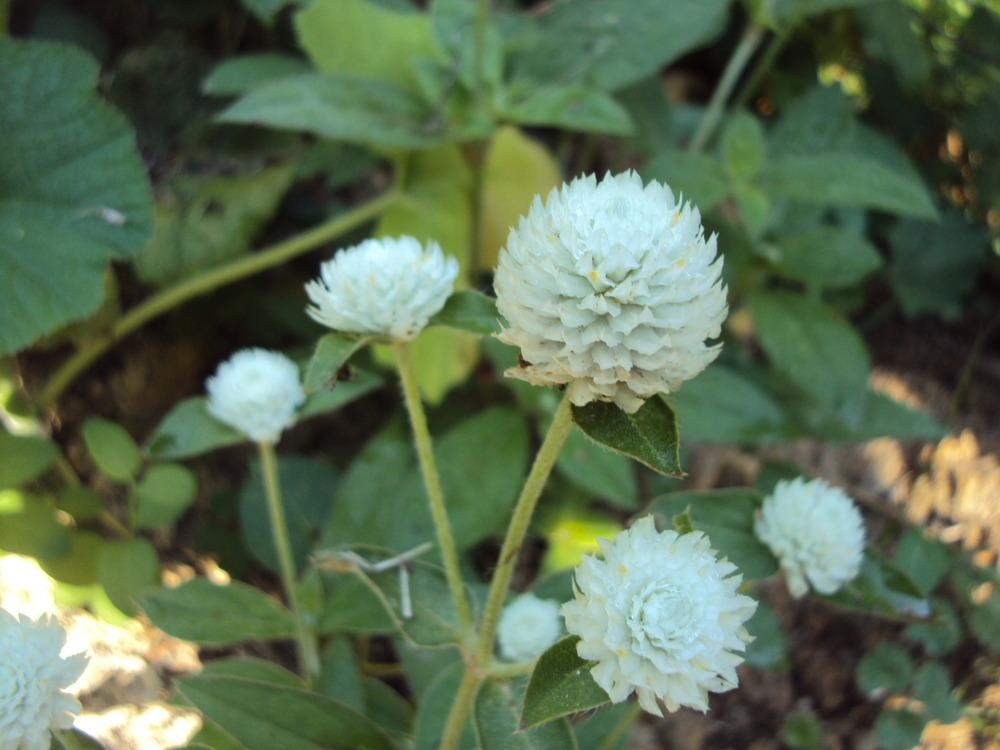
| Plant Habit: | Herb/Forb |
| Life cycle: | Annual |
| Sun Requirements: | Full Sun |
| Water Preferences: | Mesic |
| Plant Height: | 20 – 24 inches |
| Plant Spread: | 12 – 24 inches |
| Flowers: | Showy |
| Flower Color: | White |
| Bloom Size: | 1″-2″ |
| Flower Time: | Late spring or early summer Summer Late summer or early fall Fall |
LARKSPUR, GIANT IMPERIAL

| Common Name | Larkspur, giant larkspur |
| Botanical Name | Delphinium (sometimes considered Consolida ajacis) |
| Family | Ranunculaceae (buttercup) |
| Plant Type | Perennial (sometimes considered hardy annual) |
| Mature Size | 1-7 ft. depending on type |
| Sun Exposure | Full |
| Soil Type | Moist, well-drained |
| Soil pH | Slightly alkaline |
| Bloom Time | Spring and summer |
| Flower Color | Purple, blue, white, pink, or lavender |
| Hardiness Zones | 2-9 (USDA) |
| Native Areas | Northern Hemisphere |
LARKSPUR, KALEIDOSCOPE MIXED COLORS
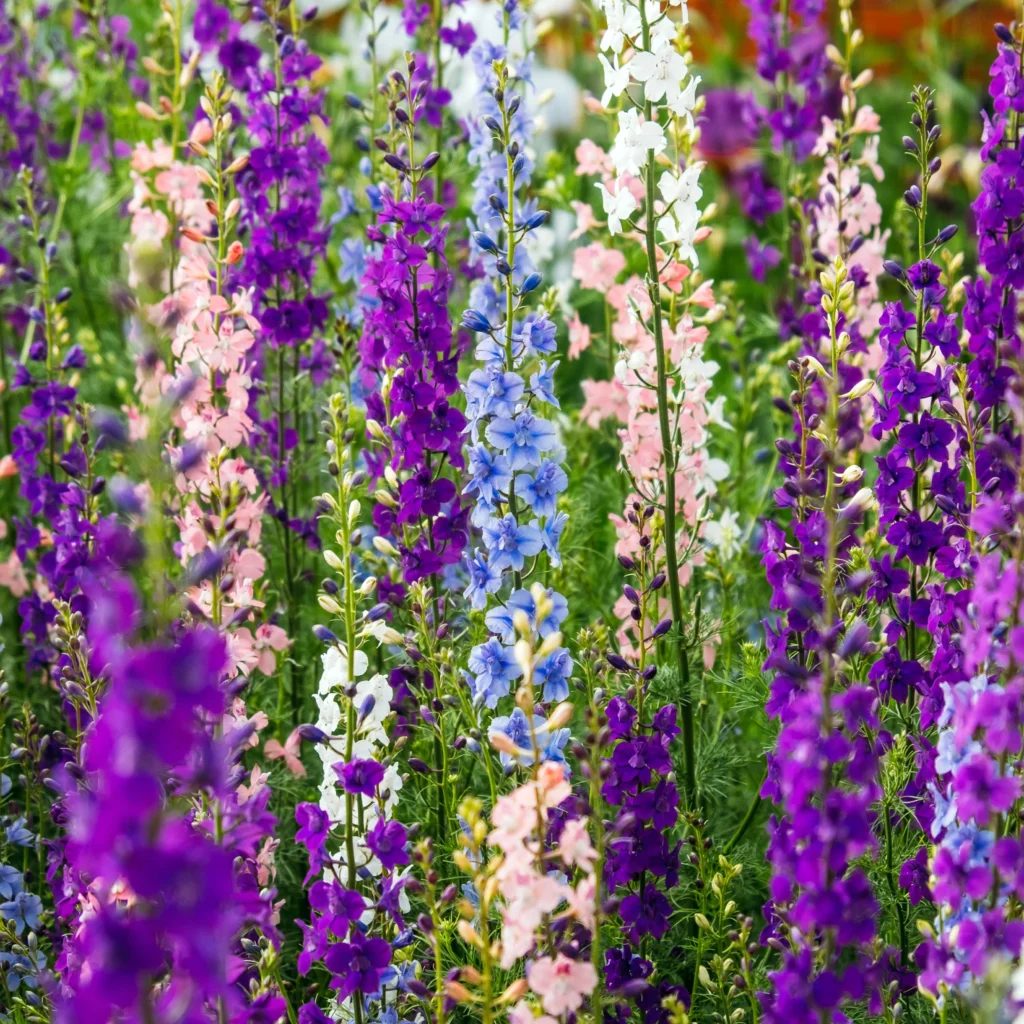
| Common Name | Larkspur, giant larkspur |
| Botanical Name | Delphinium (sometimes considered Consolida ajacis) |
| Family | Ranunculaceae (buttercup) |
| Plant Type | Perennial (sometimes considered hardy annual) |
| Mature Size | 1-7 ft. depending on type |
| Sun Exposure | Full |
| Soil Type | Moist, well-drained |
| Soil pH | Slightly alkaline |
| Bloom Time | Spring and summer |
| Flower Color | Purple, blue, white, pink, or lavender |
| Hardiness Zones | 2-9 (USDA) |
| Native Areas | Northern Hemisphere |
LOBELIA

| Common Name | Lobelia, annual lobelia, edging lobelia, laguna flower |
| Botanical Name | Lobelia erinus |
| Family | Campanulaceae |
| Plant Type | Annual |
| Mature Size | 6-9 in. tall, 9-10 in. wide |
| Sun Exposure | Full, partial |
| Soil Type | Moist but well-drained |
| Soil pH | Acidic, neutral |
| Bloom Time | Summer, fall |
| Flower Color | Blue, pink, purple, white, red |
| Hardiness Zones | 10-11 (USDA) |
| Native Area | Africa |
MARIGOLD, AFRICAN

| Common Name | African marigold, Mexican marigold, Aztec marigold, American marigold |
| Botanical Name | Tagetes erecta |
| Family | Asteraceae |
| Plant Type | Annual |
| Mature Size | 1–4 ft. tall, 1–2 ft. wide |
| Sun Exposure | Full |
| Soil Type | Sandy, loamy, well-drained |
| Soil pH | Acidic, neutral |
| Bloom Time | Summer, fall |
| Flower Color | Orange, yellow, white |
| Hardiness Zones | 2–11 (USDA) |
| Native Area | North America, Central America |
MARIGOLD, FRENCH
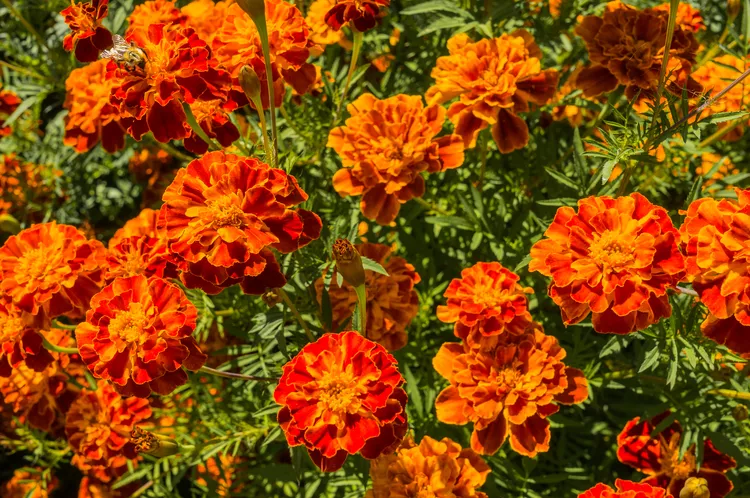
| Common Name | French marigold, Marigold |
| Botanical Name | Tagetes patula |
| Family | Asteraceae |
| Plant Type | Annual |
| Mature Size | 6″ to 12″ tall and 6″ to 8″ wide |
| Sun Exposure | Full sun |
| Soil Type | Moist, well-drained, clay, sand, loam |
| Soil pH | 6 to 7 |
| Bloom Time | Early summer through autumn |
| Flower Color | Red, oranges, yellows, mixed |
| Hardiness Zones | USDA 2 to 11 |
| Native Area | Mexico, Central America |
MARIGOLD, SUNSET GIANT
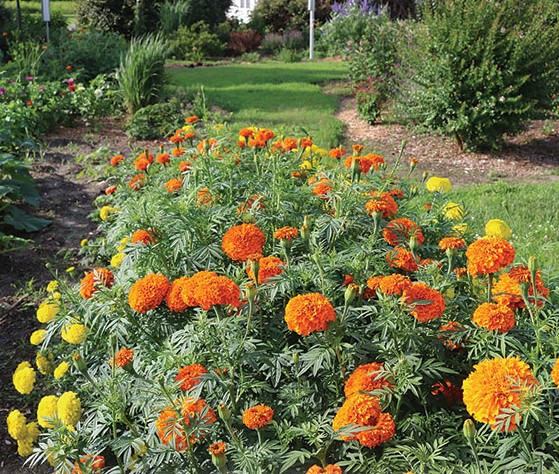
| Common Name | Sunset Giant Marigold |
| Botanical Name | Tagetes erecta |
| Family | Asteraceae |
| Plant Type | Annual |
| Mature Size | 26″ tall |
| Sun Exposure | Full sun |
| Soil Type | Moist, well-drained, clay, sand, loam |
| Soil pH | 6 to 7 |
| Bloom Time | Early summer through autumn |
| Flower Color | Red, oranges, yellows, mixed |
| Hardiness Zones | USDA 2 to 11 |
| Native Area | Mexico, Central America |
MEXICAN SUNFLOWER
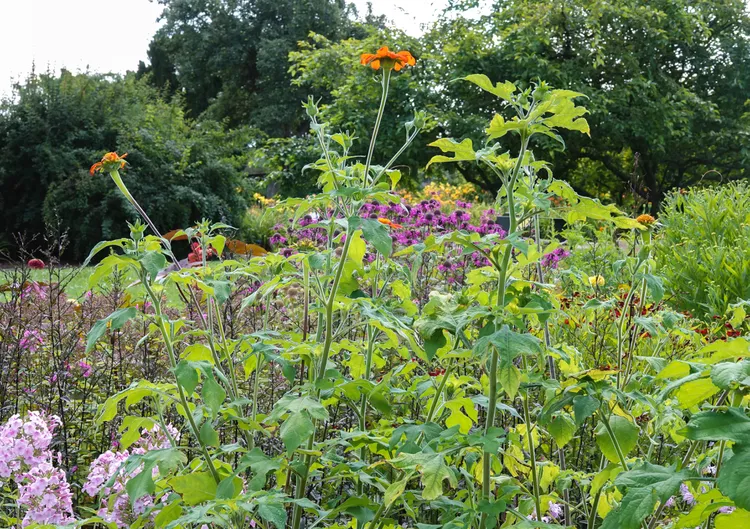
| Common Name | Mexican Sunflower, tree marigold |
| Botanical Name | Tithonia rotundifolia |
| Family | Asteraceae |
| Plant Type | Annual, perennial |
| Mature Size | 3-6 ft. tall, 2-3 ft. wide |
| Sun Exposure | Full |
| Soil Type | Well-drained |
| Soil pH | Neutral to acidic |
| Bloom Time | Summer, fall |
| Flower Color | Orange, red, yellow |
| Hardiness Zones | 9-11 (USDA) |
| Native Area | Central America |
MOONFLOWER (MORNING GLORY VARIETY)

| GENUS NAME | Ipomoea alba |
| COMMON NAME | Moonflower Vine |
| PLANT TYPE | Annual, Perennial, Vine |
| LIGHT | Sun |
| HEIGHT | 8 to 20 feet |
| WIDTH | 3 to 6 feet |
| FLOWER COLOR | White |
| FOLIAGE COLOR | Blue/Green |
| SEASON FEATURES | Fall Bloom, Summer Bloom |
| SPECIAL FEATURES | Fragrance, Good for Containers, Low Maintenance |
| ZONES | 10, 11, 9 |
| PROPAGATION | Seed, Stem Cuttings |
| PROBLEM SOLVERS | Deer Resistant |
NASTURTIUM, PAPAYA CREAM MIX

| Common Name | Nasturtium |
| Botanical Name | Tropaeolum spp. |
| Family | Tropaeolaceae |
| Plant Type | Annual, perennial |
| Mature Size | 1-10 ft. tall, 1-3 ft. wide |
| Sun Exposure | Full |
| Soil Type | Moist but well-drained |
| Soil pH | Acidic, neutral, alkaline |
| Bloom Time | Spring, summer, fall |
| Flower Color | Red, orange, pink, yellow, white |
| Hardiness Zones | 9-11 (USDA) |
| Native Area | Central America, South America |
ORLAYA
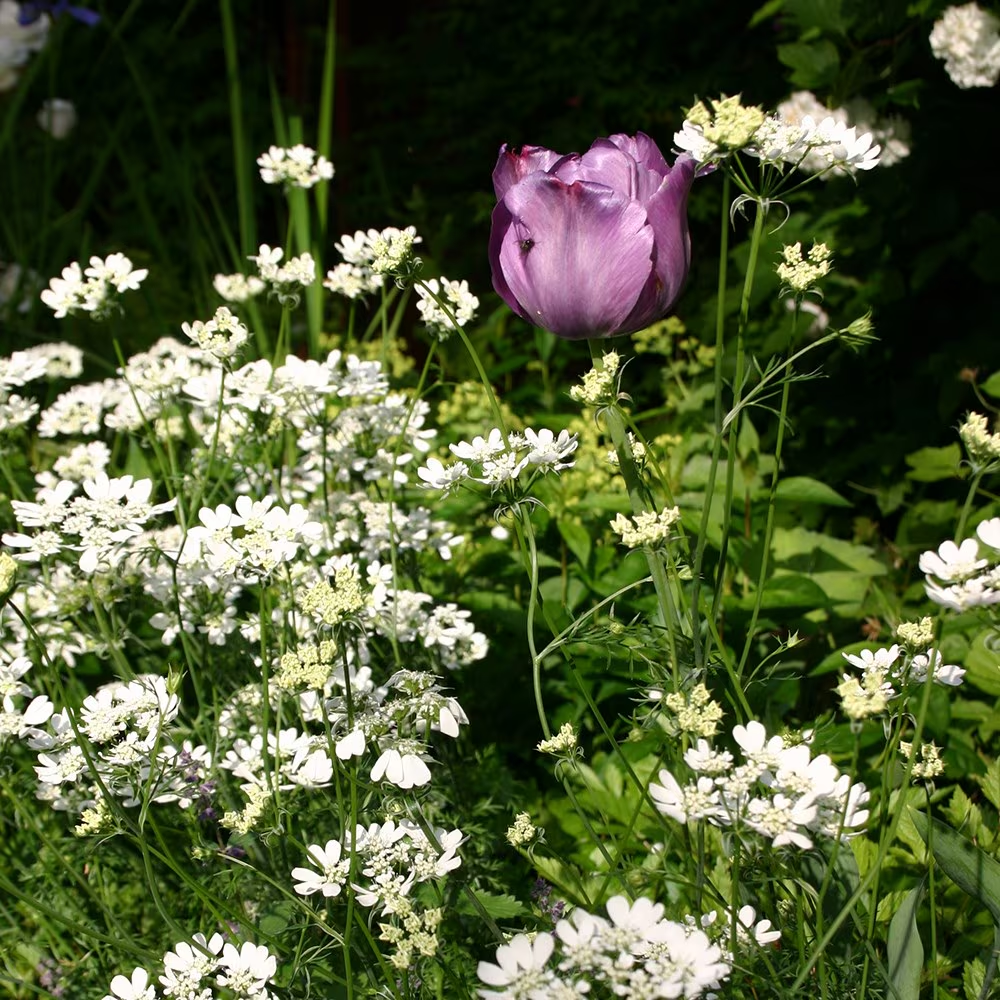
| Common Name | Orlaya |
| Genus | Orlaya |
| Species | O. grandiflora |
| Family | Apiaceae |
| Life Cycle | Half-hardy Annual |
| Format | Plugs |
| Plug Care | Harden off and plant out or bump up soon after receiving. Being in the carrot family, Orlaya has a tap root and does not like to get rootbound. Transplant carefully to avoid excessive root disturbance, and keep moist until plants acclimate to their new bed. |
| Netting / Staking | Not necessary. |
| Temperature Range | These plants can tolerate some frost when young. They prefer cooler weather and will start to decline when the temperature is consistently at or above 80F. |
| Spacing | 6-12″ |
| Soil Preference | Loose, fertile, well draining soil. Apply a granular fertilizer before transplanting or feed lightly with a liquid fertilizer until buds start to develop. |
| Day Length | Long day plants; will flower mid summer through to frost. Plant in full sun. |
| When to Plant | In zones 7 and up, fall plant your plugs into prepared beds. They will be happiest in a hoop or at least protected with agribon. Early spring plantings, a couple weeks before the last frost date, will also provide the plants with a long cool period to establish roots before the heat kicks in. Orlaya isn’t the longest flowering plant and you may need a couple successions, planted 2-3 weeks apart, to extend the blooming window. They will start to suffer when the temperature stays at 80F or above for an extended period of time. Fall plantings will give the longest stems, and the earliest bloom time out of all the plantings. |
PURPLE HYACYNTH BEAN
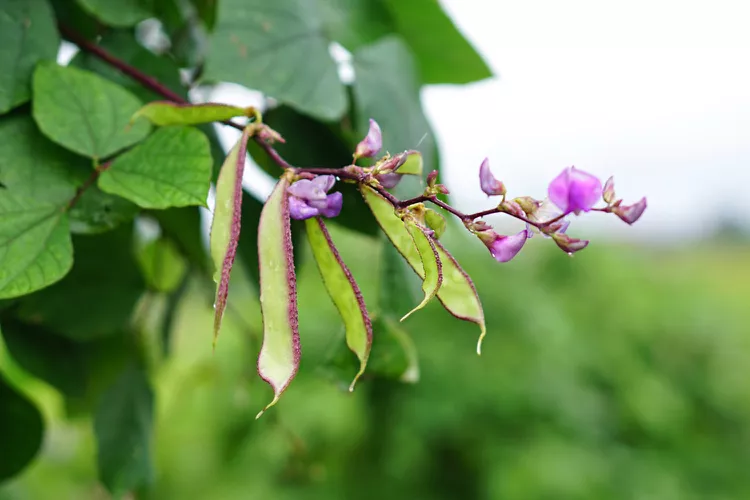
| Common Names | Purple hyacinth bean, Indian bean, Tonga bean, LabLab, tobacco vine |
| Botanical Name | Lablab purpureus |
| Family | Fabaceae |
| Plant Type | Annual, tender perennial |
| Mature Size | 10–15 ft. tall, 3–6 ft. wide |
| Sun Exposure | Full |
| Soil Type | Loamy |
| Soil pH | Neutral, acidic |
| Bloom Time | Summer, fall |
| Flower Color | Red, purple, pink, white |
| Hardiness Zones | 10–11 (USDA) |
| Native Area | Africa |
RUDBECKIA, MAXIMA (Giant Coneflower)
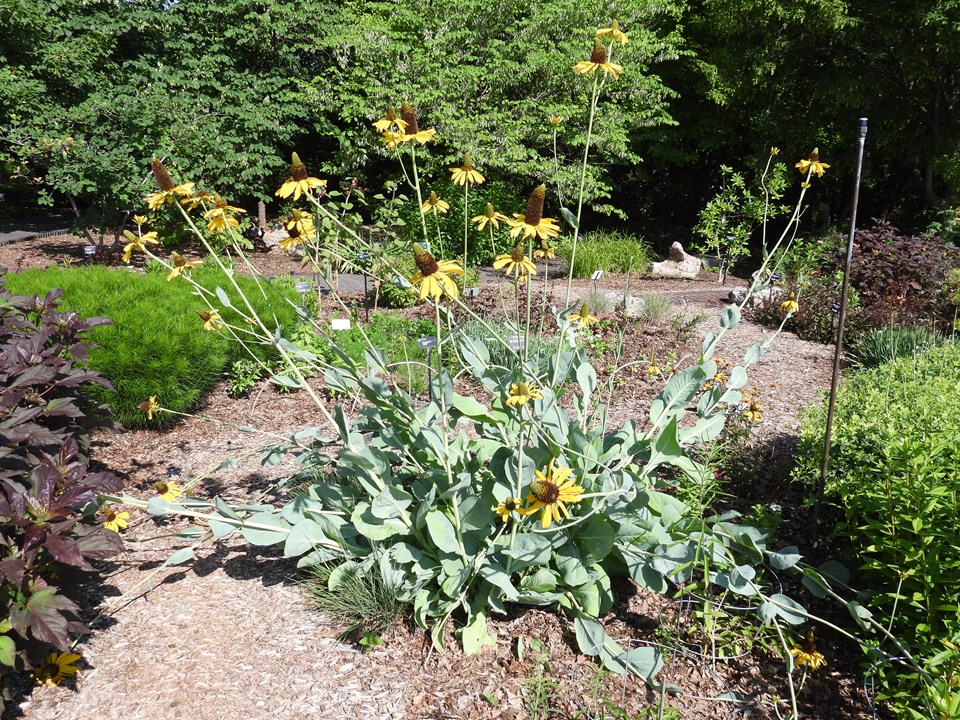
RUDBECKIA, PRAIRIE SUN

| Genus Name | Rudbeckia |
| Common Name | Prairie Sun Rudbeckia |
| Plant Type | Annual, Perennial |
| Light | Sun |
| Height | 1 to 5 feet |
| Width | 1 to 3 feet |
| Flower Color | Orange, Red, Yellow |
| Foliage Color | Blue/Green |
| Season Features | Fall Bloom, Summer Bloom |
| Special Features | Attracts Birds, Cut Flowers, Good for Containers, Low Maintenance |
| Zones | 10, 11, 3, 4, 5, 6, 7, 8, 9 |
| Propagation | Division, Seed, Stem Cuttings |
| Problem Solvers | Deer Resistant, Drought Tolerant |
RUDBECKIA, SAHARA
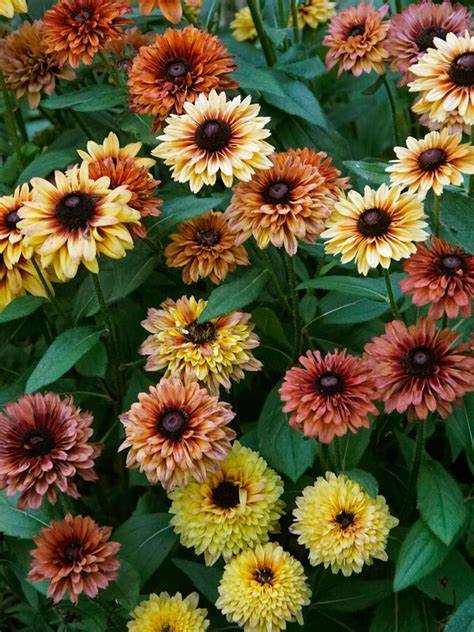
| Genus Name | Rudbeckia |
| Common Name | Sahara Rudbeckia |
| Plant Type | Annual, Perennial |
| Light | Sun |
| Height | 1 to 5 feet |
| Width | 1 to 3 feet |
| Flower Color | Orange, Red, Yellow |
| Foliage Color | Blue/Green |
| Season Features | Fall Bloom, Summer Bloom |
| Special Features | Attracts Birds, Cut Flowers, Good for Containers, Low Maintenance |
| Zones | 10, 11, 3, 4, 5, 6, 7, 8, 9 |
| Propagation | Division, Seed, Stem Cuttings |
| Problem Solvers | Deer Resistant, Drought Tolerant |
SUNFLOWERS, VARIOUS: Orange Excel, Procut Gold, Sunrich Orange, Velvet Queen, Evening Sun, Chianti Hybrid,
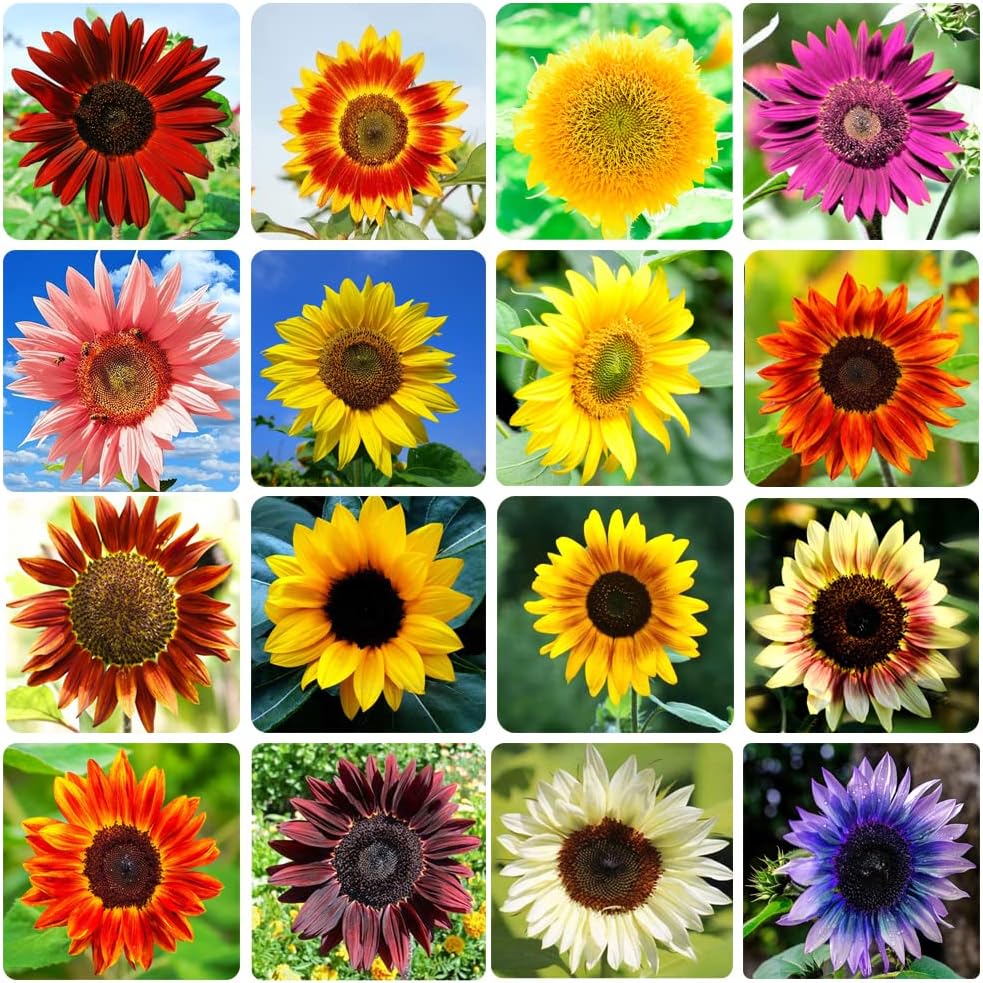
| Common Names | Sunflower, common sunflower |
| Botanical Name | Helianthus annuus |
| Family | Asteraceae |
| Plant Type | Annual |
| Mature Size | 3–10 ft. tall, 1.5–3 ft. wide |
| Sun Exposure | Full |
| Soil Type | Well-drained |
| Soil pH | Acidic, neutral, alkaline |
| Bloom Time | Summer, fall |
| Flower Color | Yellow, red, white, green |
| Hardiness Zones | 2–11 (USDA) |
| Native Area | North America |
SWEET POTATO VINE
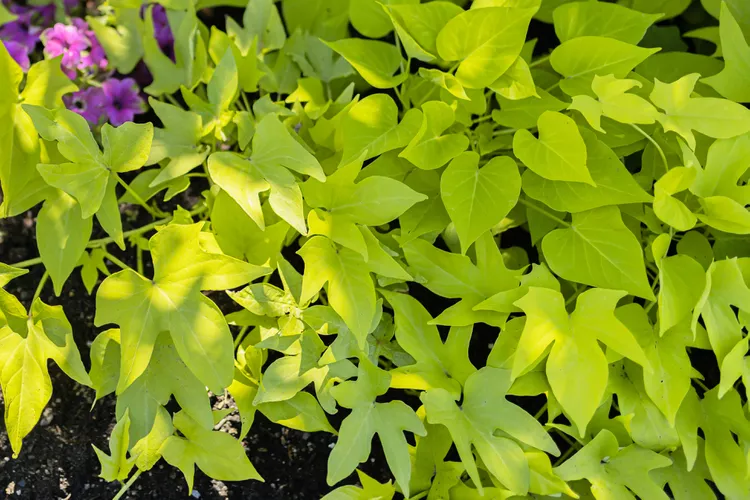
| Common Name | Sweet potato vine, ornamental sweet potato vine |
| Botanical Name | Ipomoea batatas |
| Family | Convolvulaceae |
| Plant Type | Herbaceous, perennial |
| Mature Size | 8–10 ft. long, 5–12 in. wide |
| Sun Exposure | Full |
| Soil Type | Moist, well-drained |
| Soil pH | Neutral, acidic |
| Bloom Time | Spring, summer |
| Flower Color | Pink, purple |
| Hardiness Zones | 9–11 (USDA) |
| Native Area | Central America, South America |
SWEET PEA
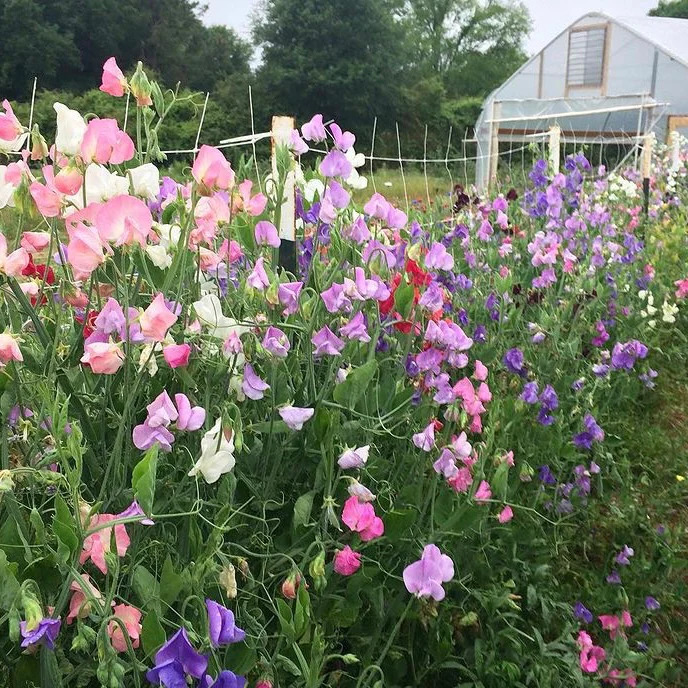
| Common Name | Sweet pea, perennial pea, everlasting pea |
| Botanical Name | Lathyrus odoratus |
| Family | Fabaceae |
| Plant Type | Annual, vine |
| Mature Size | 6-8 ft. tall |
| Sun Exposure | Full, partial |
| Soil Type | Well-drained |
| Soil pH | Alkaline |
| Bloom Time | Summer, Fall |
| Flower Color | Red, pink, blue, white, lavender |
| Hardiness Zones | 3-8 (USDA) |
| Native Area | Europe, Mediterranean |
TOOTHACHE PLANT
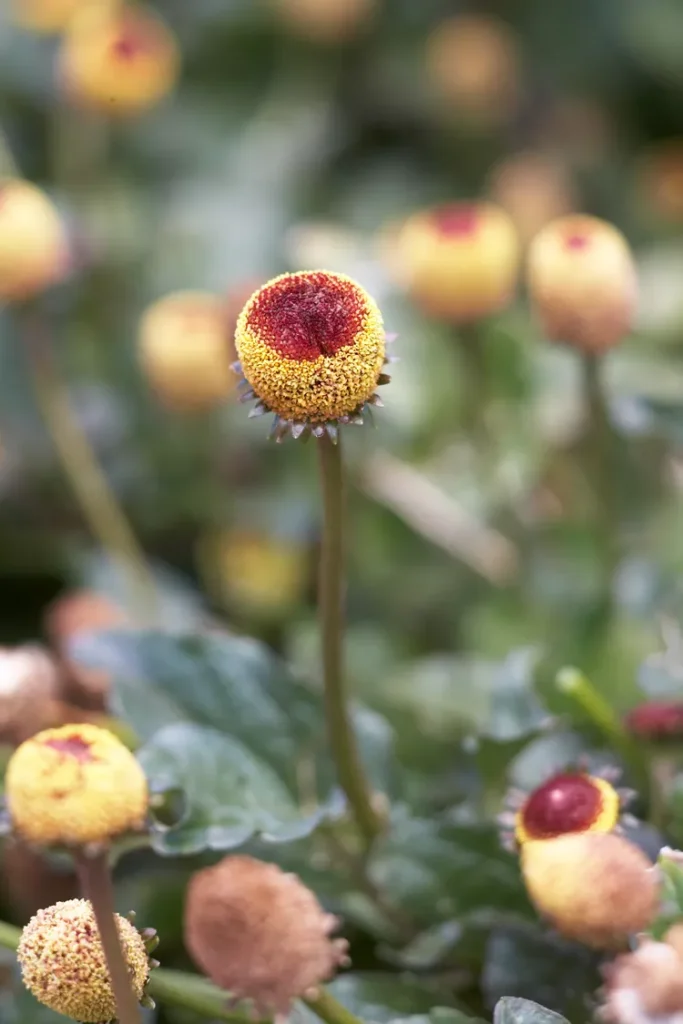
| Genus Name | Acmella oleracea, synonym Spilanthes oleracea |
| Common Name | Toothache Plant |
| Additional Common Names | Eyeball Plant, Paracress |
| Plant Type | Herb, Perennial |
| Light | Sun |
| Height | 12 to 15 Inches |
| Width | 12 to 20 Inches |
| Flower Color | Orange, Red, Yellow |
| Foliage Color | Blue/Green |
| Zones | 10, 11, 9 |
| Propagation | Seed, Stem Cuttings |
ZINNIA, MINI

| Common Name | Zinnia |
| Botanical Name | Zinnia elegans |
| Plant Type | Annual |
| Mature Size | 1-2 ft. tall, 6-18 in. wide |
| Sun Exposure | Full |
| Soil Type | Well-draining |
| Soil pH | Neutral |
| Bloom Time | Spring, summer, fall |
| Flower Color | Pink, purple, yellow, orange, white, red |
| Hardiness Zones | 3-10 (USDA) |
| Native Area | South America, North America |
ZINNIA, ENVY
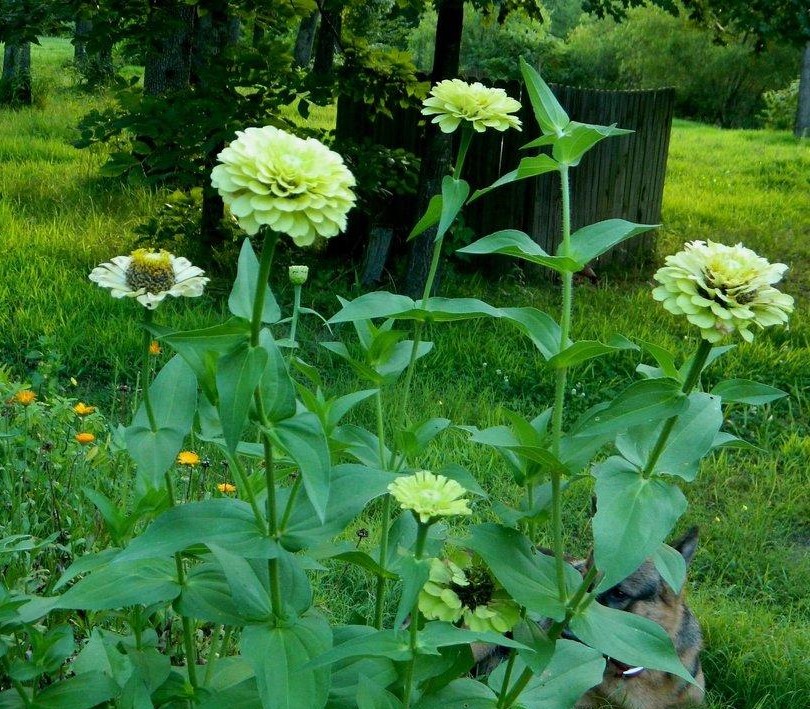
| Common Name | Zinnia |
| Botanical Name | Zinna elegans |
| Plant Type | Annual |
| Mature Size | 2-4 ft. tall, 6-18 in. wide |
| Sun Exposure | Full |
| Soil Type | Well-draining |
| Soil pH | Neutral |
| Bloom Time | Spring, summer, fall |
| Flower Color | Green |
| Hardiness Zones | 3-10 (USDA) |
| Native Area | South America, North America |
ZINNIA, VARIOUS: Cactus Flowered Mix, California Giants, Candy Cane, Cut-n-Come Again, Giant Double Violet Queen, Purple Prince, Queen Lime, California Giants
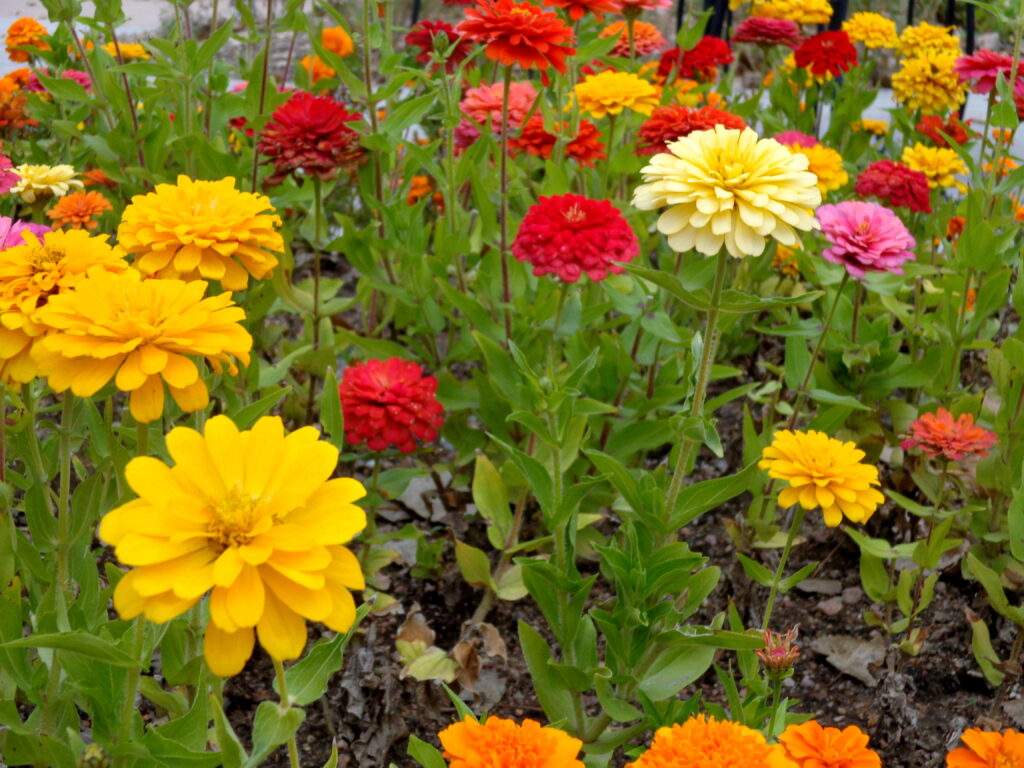
| Common Name | Zinnia |
| Botanical Name | Zinna elegans |
| Plant Type | Annual |
| Mature Size | 2-4 ft. tall, 6-18 in. wide |
| Sun Exposure | Full |
| Soil Type | Well-draining |
| Soil pH | Neutral |
| Bloom Time | Spring, summer, fall |
| Flower Color | Green |
| Hardiness Zones | 3-10 (USDA) |
| Native Area | South America, North America |
CANTERBURY BELLS
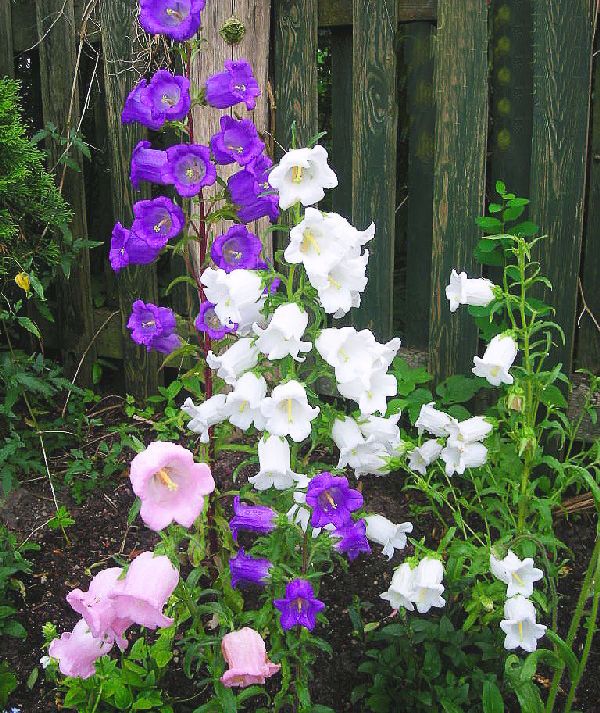
| Common Name | Canterbury bells, cups and saucers |
| Botanical Name | Campanula medium |
| Family | Campanulaceae |
| Plant Type | Annual, biennial |
| Mature Size | 20-26 in. tall, 12-18 in. wide |
| Sun Exposure | Full, partial |
| Soil Type | Moist but well-drained, loamy, sandy |
| Soil pH | Neutral, acidic, alkaline |
| Bloom Time | Summer |
| Flower Color | Pink, white, purple, blue |
| Hardiness Zones | 5-8 (USDA) |
| Native Area | Europe |
ROSE CAMPION, CROWN PINK
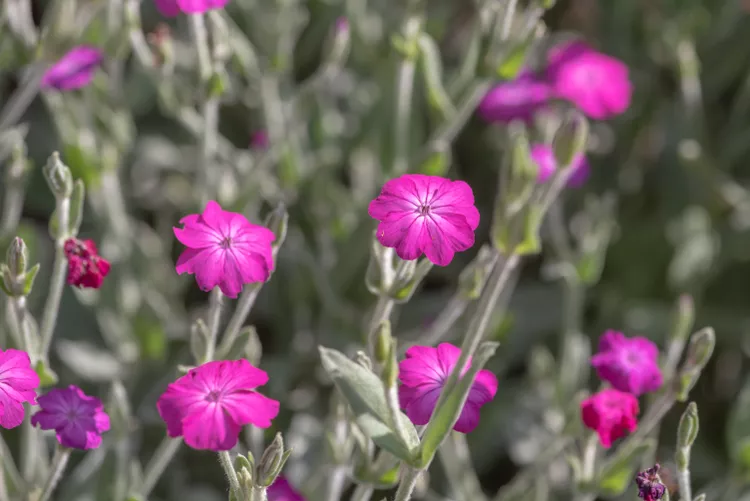
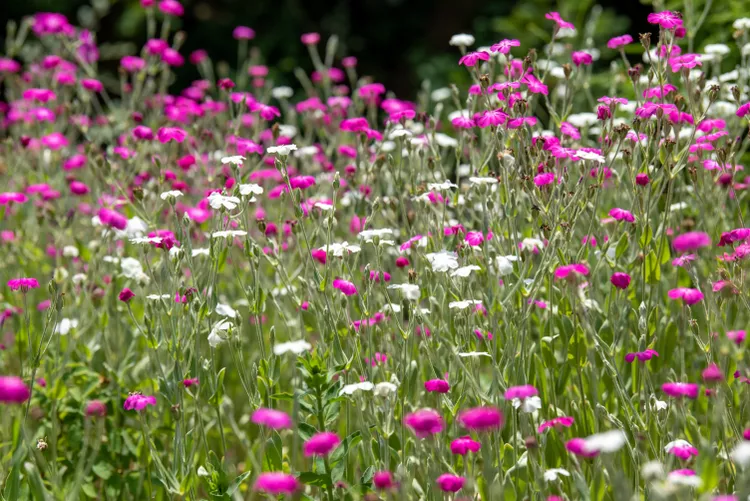
| Common Name | Rose Campion, Rabbit’s Ears, Crown Pink |
| Botanical Name | Lychnis coronaria |
| Family | Caryophyllaceae |
| Plant Type | Biennial, short-lived perennial |
| Mature Size | 12-18 in. high |
| Sun Exposure | Partial to full sun |
| Soil Type | Well-drained, tolerant of most soils |
| Soil pH | Neutral to partly acidic |
| Bloom Time | Early to mid summer |
| Flower Color | Magenta, pink, white |
| Hardiness Zones | 5-8 (USDA) |
| Native Areas | Europe |
PERENNIALS and BIENNIALS
BARREN STRAWBERRY
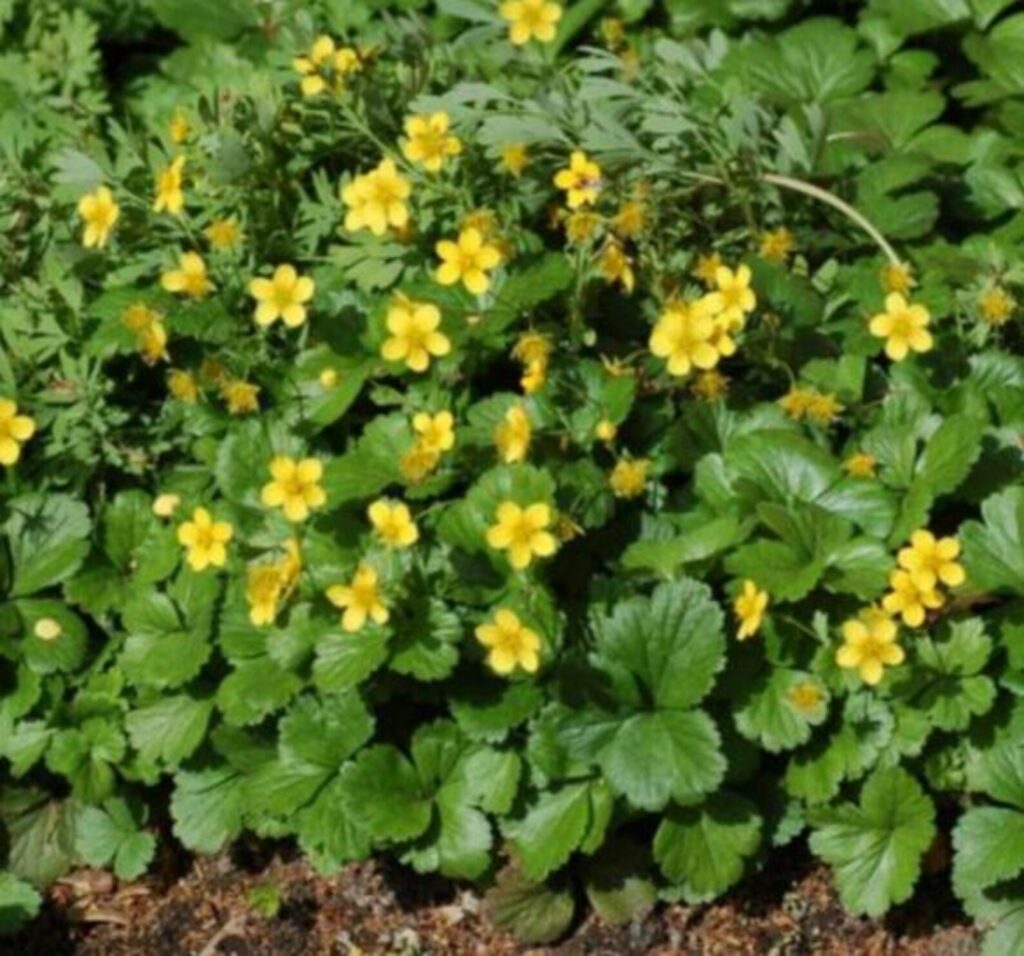
| Genus Name | Waldsteinia fragarioides |
| Common Name | Barren Strawberry |
| Plant Type | Perennial |
| Light | Part Sun, Sun |
| Height | 6 to 12 inches |
| Width | 8 to 24 inches |
| Foliage Color | Chartreuse/Gold |
| Season Features | Spring Bloom, Summer Bloom |
| Special Features | Good for Containers, Low Maintenance |
| Zones | 3, 4, 5, 6, 7, 8 |
| Propagation | Division, Seed |
| Problem Solvers | Drought Tolerant, Groundcover, Slope/Erosion Control |
BEE BALM, MONARDA
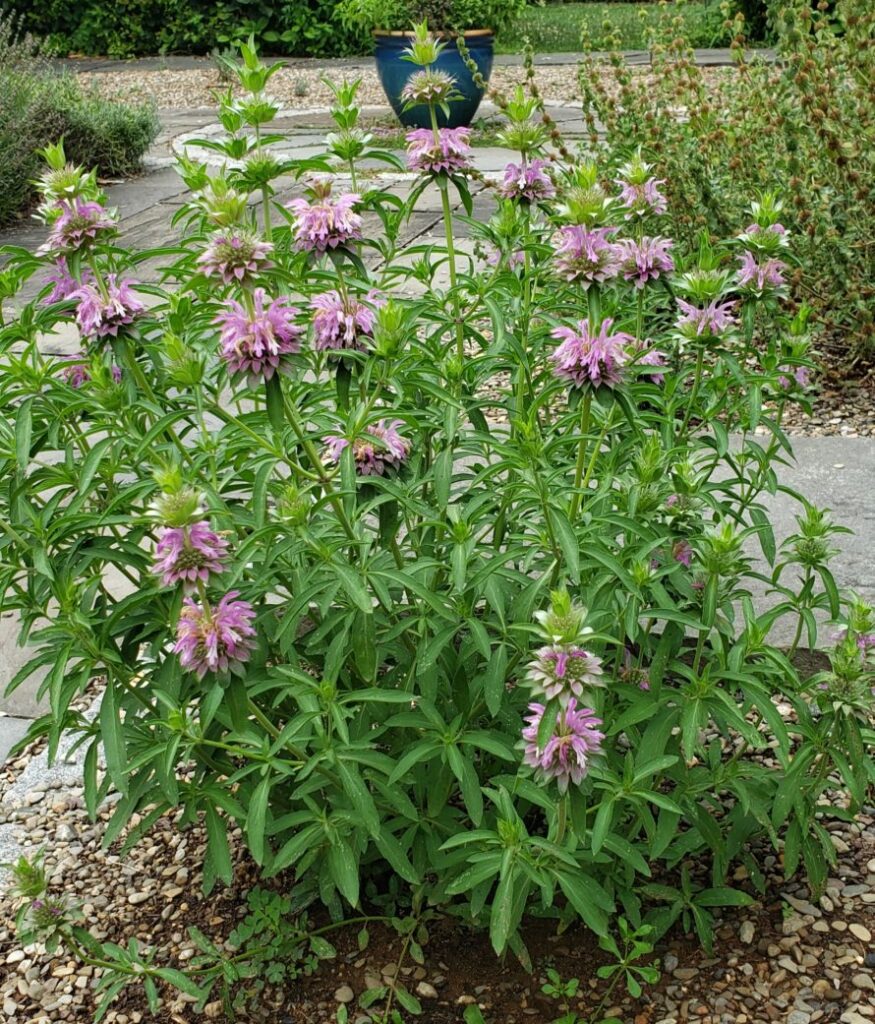
| Common Name | Bee balm, horsemint, monarda, bergamot, wild bergamot |
| Botanical Name | Monarda spp. |
| Family | Lamiaceae |
| Plant Type | Herbaceous, perennial |
| Mature Size | 10–48 in. tall, 10–36 in. wide |
| Sun Exposure | Full, partial |
| Soil Type | Rich, moist |
| Soil pH | Acidic, neutral |
| Bloom Time | Summer |
| Flower Color | Red, purple, pink, white, lavender |
| Hardiness Zones | 3–9 (USDA) |
| Native Area | North America |
BLACK EYED SUSAN VINE
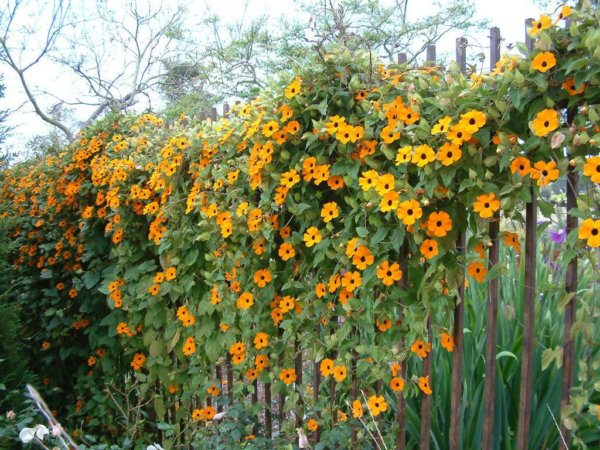
| Common Names | Black-eyed Susan vine, clockvine |
| Botanical Name | Thunbergia alata |
| Family | Acanthaceae |
| Plant Type | Perennial, annual, vine |
| Mature Size | 3–8 ft. tall, 3–6 ft. wide |
| Sun Exposure | Full, partial |
| Soil Type | Loamy, rich, well-draining |
| Soil pH | Neutral |
| Bloom Time | Spring, summer, fall |
| Flower Color | Red, rose, orange, yellow, white |
| Hardiness Zones | 10-11 (USDA) |
| Native Area | Africa |
BLUE EYED GRASS
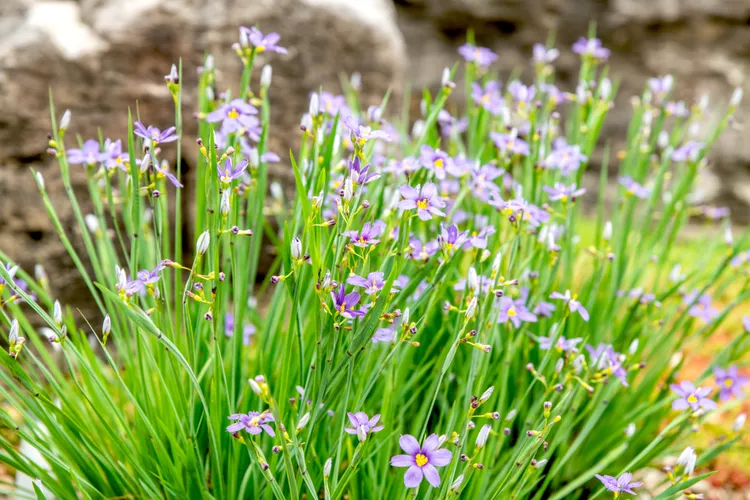
| Common Name | Blue-eyed grass, narrow-leaved blue-eyed grass |
| Botanical Name | Sisyrinchium angustifolium |
| Family | Iridaceae |
| Plant Type | Perennial |
| Mature Size | 8–20 in. tall, 6–12 in. wide |
| Sun Exposure | Full, partial |
| Soil Type | Moist, well-drained |
| Soil pH | Acidic, neutral |
| Bloom Time | Spring, summer |
| Flower Color | Blue, purple |
| Hardiness Zones | 4–9 (USDA) |
| Native Area | North America |
BUGLEWEED
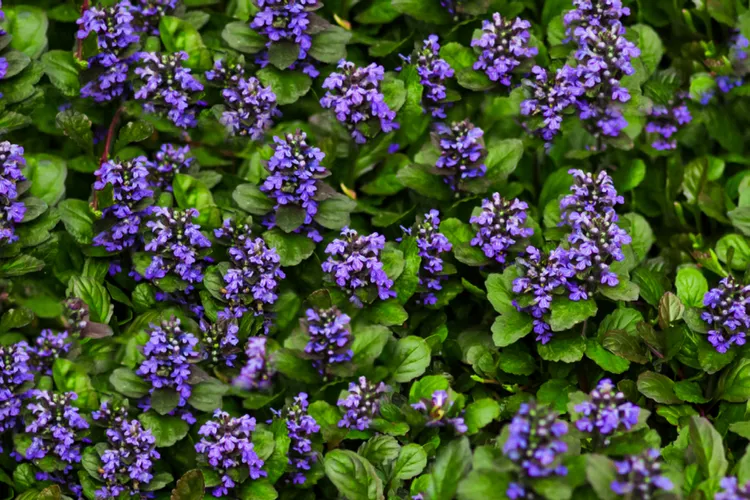
| Common Name | Bugleweed, common bugleweed, ajuga, carpet bugle, blue bugle, carpetweed, carpenter’s herb |
| Botanical Name | Ajuga reptans |
| Family | Lamiaceae |
| Plant Type | Herbaceous, perennial |
| Mature Size | 6-12 in. tall, 6-12 in. wide |
| Sun Exposure | Full, partial |
| Soil Type | Well-drained |
| Soil pH | Acidic |
| Bloom Time | Spring |
| Flower Color | Blue, violet |
| Hardiness Zones | 3-10 (USDA) |
| Native Area | Europe, Africa, Asia |
BUTTERFLY WEED
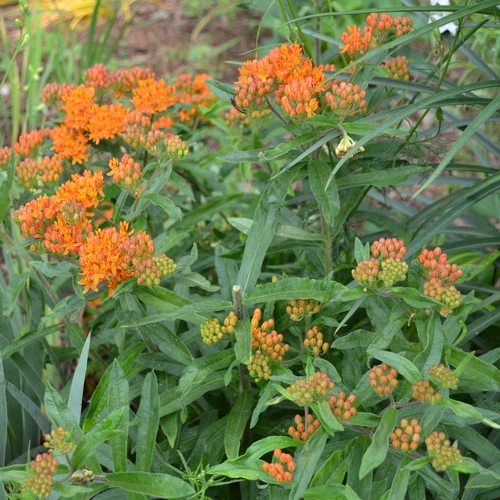
| Common Name | Butterfly weed, butterfly milkweed, pleurisy root, orange milkweed |
| Botanical Name | Asclepias tuberosa |
| Family | Asclepiadaceae |
| Plant type | Herbaceous, perennial |
| Mature size | 1–2 ft. tall, 12-18 in. wide |
| Sun exposure | Full |
| Soil type | Dry, well-drained |
| Soil pH | Acidic, neutral |
| Bloom time | Summer |
| Flower color | Orange, yellow |
| Hardiness zones | 3–9 (USDA) |
| Native area | North America |
COLUMBINE

| Common Name | Columbine |
| Botanical Name | Aquilegia spp. |
| Family | Ranunculaceae |
| Plant Type | Herbaceous perennial |
| Mature Size | 1-3 ft. tall, 1-2 ft. wide |
| Sun Exposure | Full or partial |
| Soil Type | Sandy, loamy, moist but well-drained |
| Soil pH | Neutral to slightly acidic |
| Bloom Time | Spring to summer |
| Flower Color | Red, orange, yellow, blue, purple, violet, pink, white |
| Hardiness Zones | Zones 3 to 8 |
| Native Area | North America, Europe, Asia |
COREOPSIS

| GENUS NAME | Coreopsis |
| COMMON NAME | Coreopsis |
| PLANT TYPE | Annual, Perennial |
| LIGHT | Sun |
| HEIGHT | 1 to 4 feet |
| WIDTH | 1 to 3 feet |
| FLOWER COLOR | Orange, Pink, Red, Yellow |
| FOLIAGE COLOR | Blue/Green, Chartreuse/Gold |
| SEASON FEATURES | Fall Bloom, Summer Bloom |
| SPECIAL FEATURES | Attracts Birds, Cut Flowers, Good for Containers, Low Maintenance |
| ZONES | 3, 4, 5, 6, 7, 8, 9 |
| PROPAGATION | Division, Seed, Stem Cuttings |
| PROBLEM SOLVERS | Deer Resistant, Drought Tolerant |
CONEFLOWER, GIANT
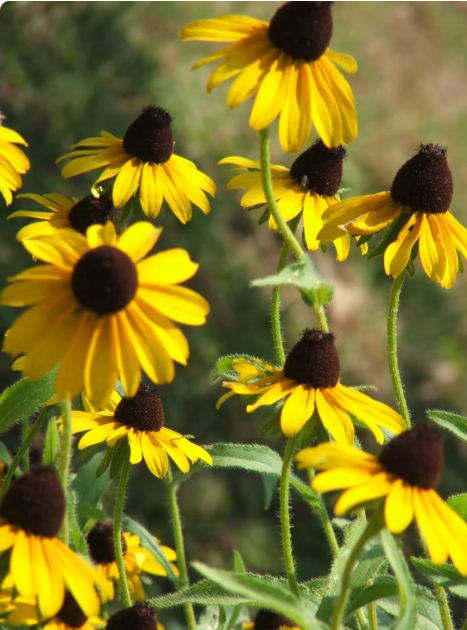
| Botanical Name | Redbuckia, Maxima |
| Common Name | Giant coneflower |
| Plant Type | Herbaceous perennial |
| Mature Size | 5′ – 7′ tall |
| Sun Exposure | Full sun |
| Soil Type | Well-drained |
| Soil pH | Neutral to acidic |
| Bloom Time | Summer |
| Flower Color | Yellow |
| Hardiness Zones | 3-8 (USDA) |
| Native Area | North America |
CREEPING JENNY
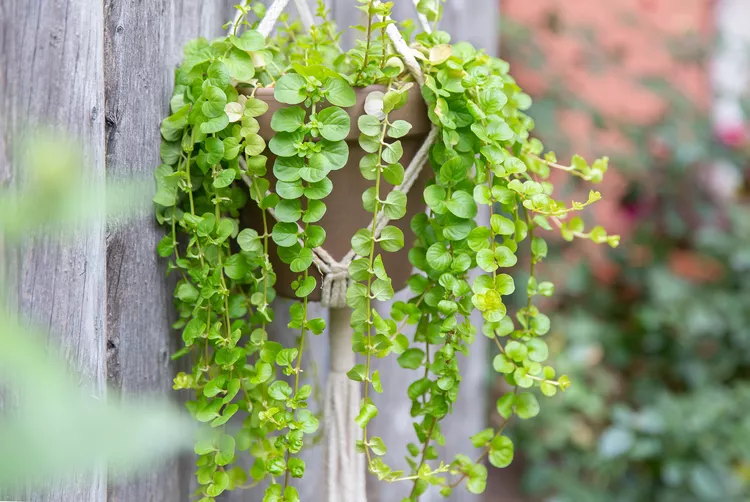
| Botanical Name | Lysimachia nummularia |
| Common Name | Creeping Jenny, moneywort, herb twopence, twopenny grass |
| Plant Type | Evergreen ground cover |
| Mature Size | 2-4 in. tall, 12-18 in. wide |
| Sun Exposure | Full sun |
| Soil Type | Well-draining sandy, loamy, or clay |
| Soil pH | Acid, alkaline, neutral |
| Bloom Time | Summer |
| Flower Color | Yellow |
| Hardiness Zones | 4-9 (USDA) |
| Native Area | Western Asia, and Europe |
CROCOSMIA
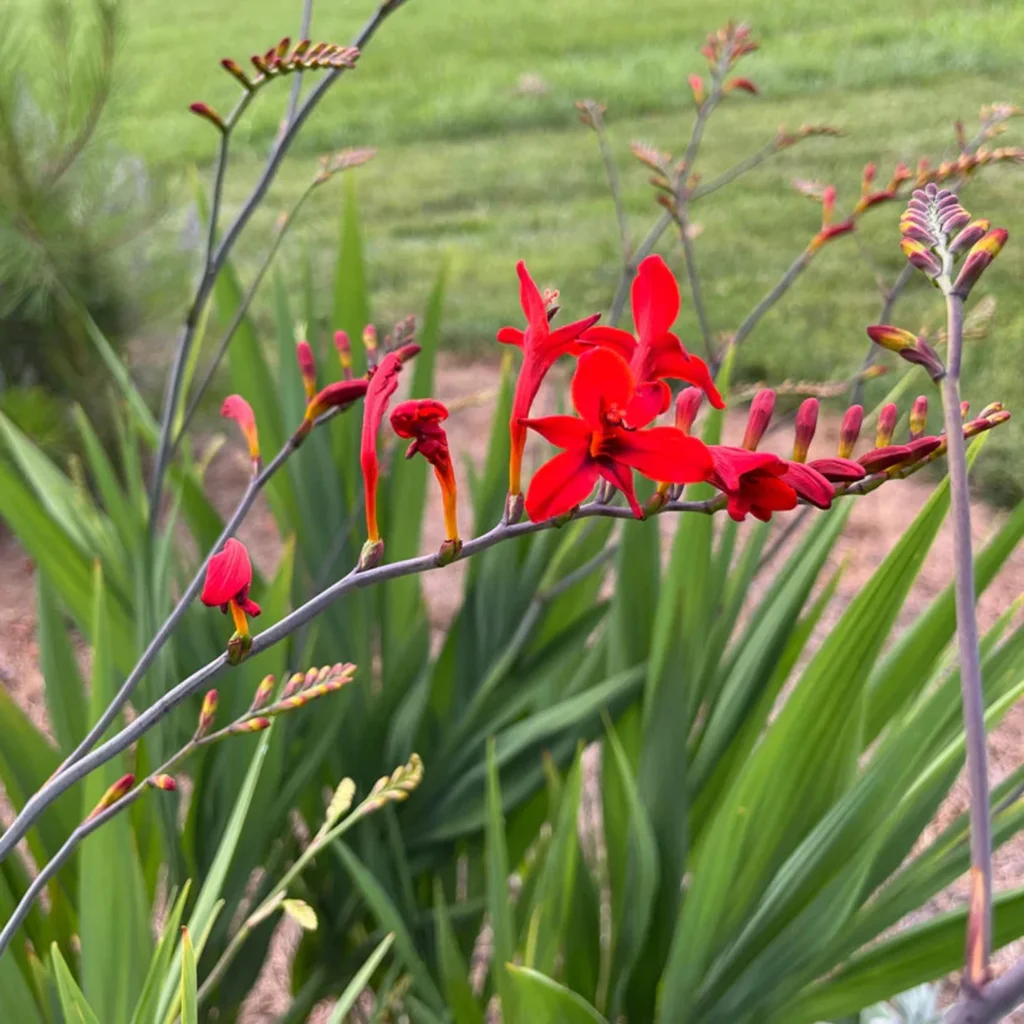
| Common Name | Crocosmia, coppertips, montbretia, falling stars |
| Botanical Name | Crocosmia spp. |
| Family | Iridaceae |
| Plant Type | Perennial |
| Mature Size | 2-3 ft. high, 1-2 ft. wide |
| Sun Exposure | Full, partial |
| Soil Type | Well-drained |
| Soil pH | Neutral, acidic |
| Bloom Time | Summer |
| Flower Color | Red, yellow, orange |
| Hardiness Zones | 6-10 (USDA) |
| Native Area | South Africa |
DAISY, ALASKA SHASTA
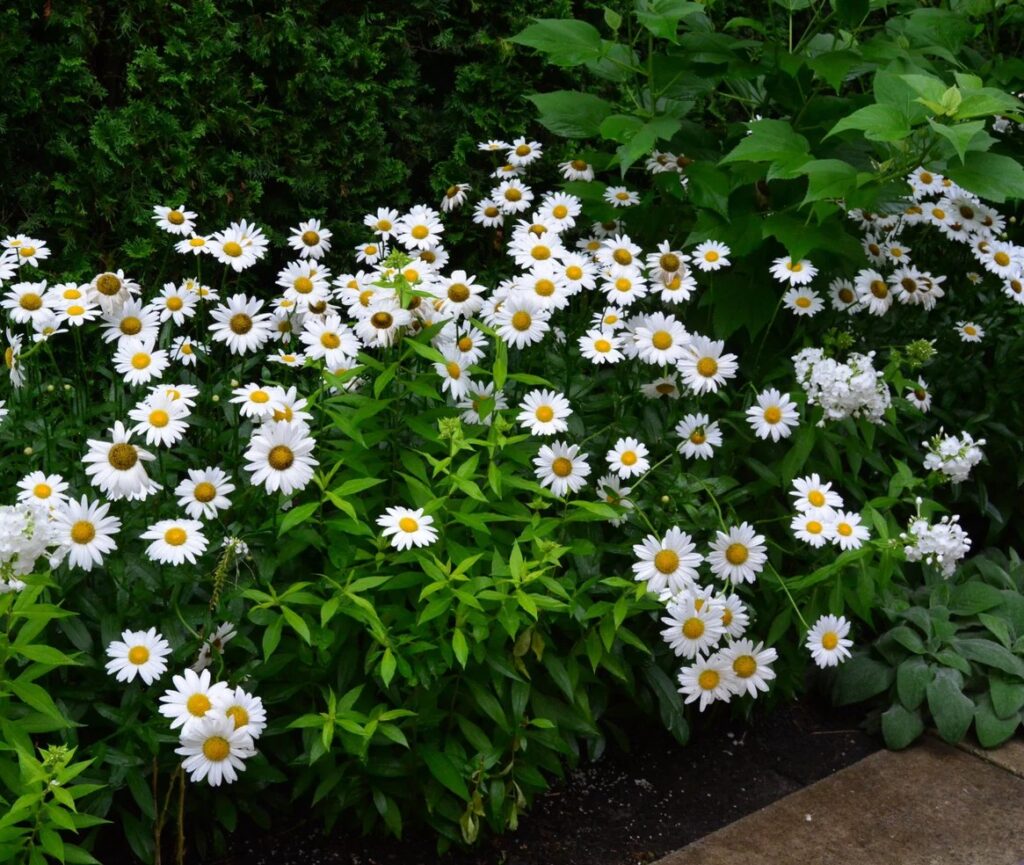
Appearance
- Flowers: Large, single blooms with pure white petals encircling a golden-yellow center.
- Height: Typically grows between 24 to 36 inches tall, making it an excellent choice for mid-height garden beds.
- Foliage: Dark green, lance-shaped leaves that provide a beautiful contrast to its bright flowers.
Blooming Season
- Blooms from early summer to late fall, offering months of vibrant color.
- Deadheading spent flowers encourages continuous blooming throughout the season.
Hardiness
- Withstands harsh winters and thrives in cooler climates, setting it apart from other daisy varieties.
- Resistant to common pests and diseases, ensuring long-lasting beauty.
DAISY, SHASTA
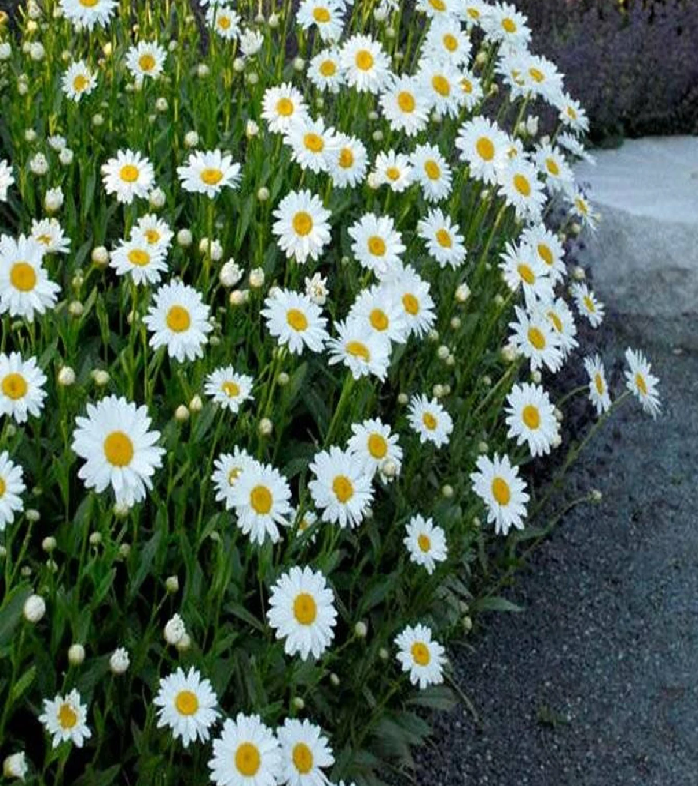
| Genus Name | Leucanthemum x superbum |
| Common Name | Shasta Daisy |
| Plant Type | Perennial |
| Light | Part Sun, Sun |
| Height | 6 to 48 inches |
| Width | 1 to 2 feet |
| Flower Color | White |
| Season Features | Fall Bloom, Summer Bloom |
| Special Features | Attracts Birds, Cut Flowers, Good for Containers, Low Maintenance |
| Zones | 5, 6, 7, 8, 9 |
| Propagation | Division, Seed |
| Problem Solvers | Drought Tolerant |
FERN, JAPANESE PAINTED
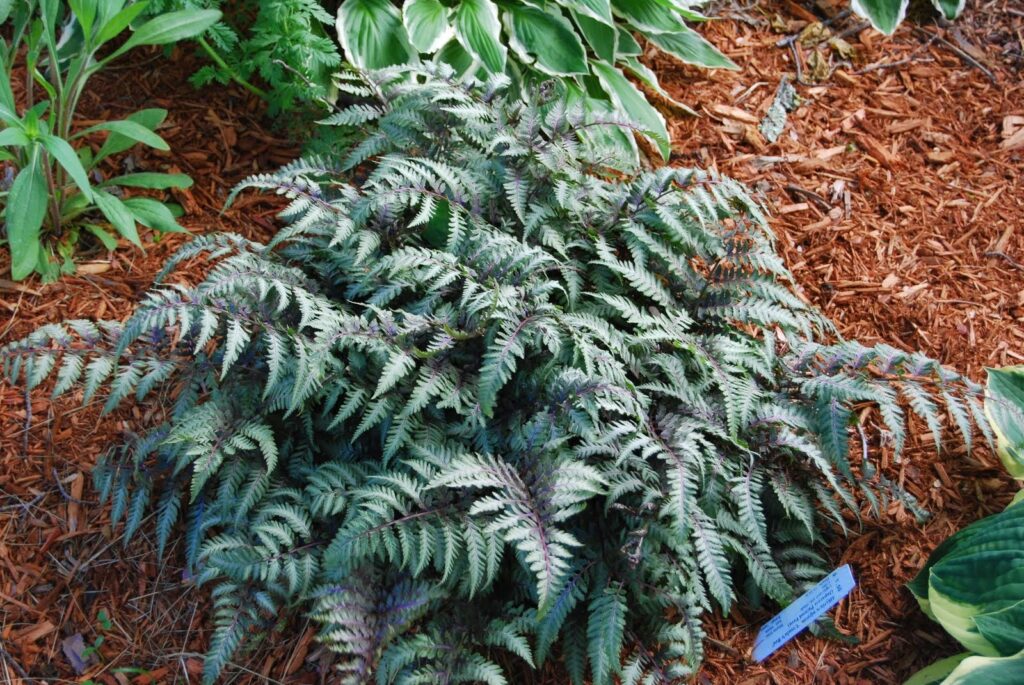
| Common Name | Japanese painted fern |
| Botanical Name | Athyrium niponicum |
| Family | Athyrium |
| Plant Type | Perennial |
| Mature Size | About 18 in. tall and wide |
| Sun Exposure | Partial, shade |
| Soil Type | Moist but well-drained |
| Soil pH | Neutral, acidic, alkaline |
| Hardiness Zones | 3, 4, 5, 6, 7, 8 |
| Native Area | Asia |
FERN, TURKEY FERN TAIL

| Plant Habit: | Fern |
| Life cycle: | Perennial |
| Sun Requirements: | Partial or Dappled Shade Partial Shade to Full Shade |
| Water Preferences: | Wet Mesic Mesic |
| Soil pH Preferences: | Moderately acid (5.6 – 6.0) Slightly acid (6.1 – 6.5) |
| Minimum cold hardiness: | Zone 9a -6.7 °C (20 °F) to -3.9 °C (25 °F) |
| Maximum recommended zone: | Zone 11 |
| Plant Height: | 18 to 24 inches |
| Plant Spread: | 18 to 36 inches |
FOUR O’CLOCKS

| Common Name | Four o’clock plant, marvel of Peru, garden jalap |
| Botanical Name | Mirabilis jalapa (synonym: Mirabilis lindheimeri) |
| Family | Nyctaginaceae |
| Plant Type | Herbaceous, perennial |
| Mature Size | 2–3 ft. tall and wide |
| Sun Exposure | Full, partial |
| Soil Type | Moist, well-drained |
| Soil pH | Acidic, neutral |
| Bloom Time | Summer, fall |
| Flower Color | Pink, red, yellow, white |
| Hardiness Zones | 9–11, USA |
| Native Area | South America |
HIBISCUS, TEXAS STAR
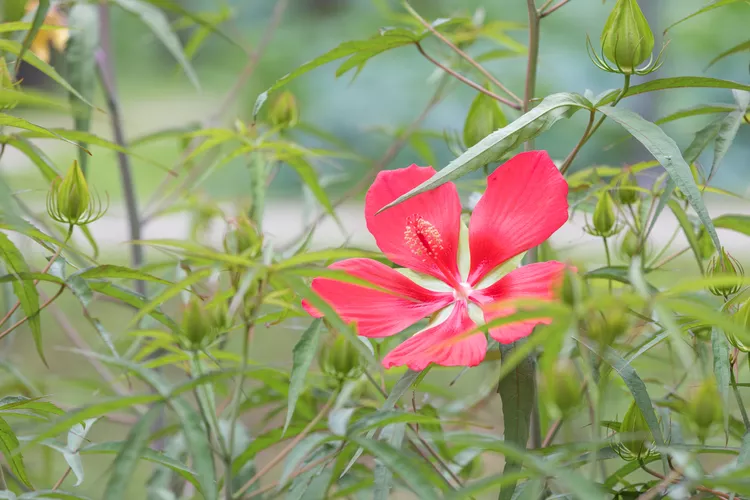
| Common Name | Texas Star Hibiscus, Scarlett Rose Mallow, Red Hibiscus |
| Botanical Name | Hibiscus coccineus |
| Family | Malvaceae |
| Plant Type | Perennial |
| Mature Size | 6-8 feet tall; 2-3 feet wide |
| Sun Exposure | Full sun, partial shade |
| Soil Type | Silt, loam, sand |
| Soil pH | Slightly acidic to neutral (between 6.0 and 7.0) |
| Bloom Time | Summer to early fall |
| Flower Color | Red |
| Hardiness Zones | 5b – 9b |
| Native Area | Georgia and Florida |
HOLLYHOCKS, MIXED COLORS
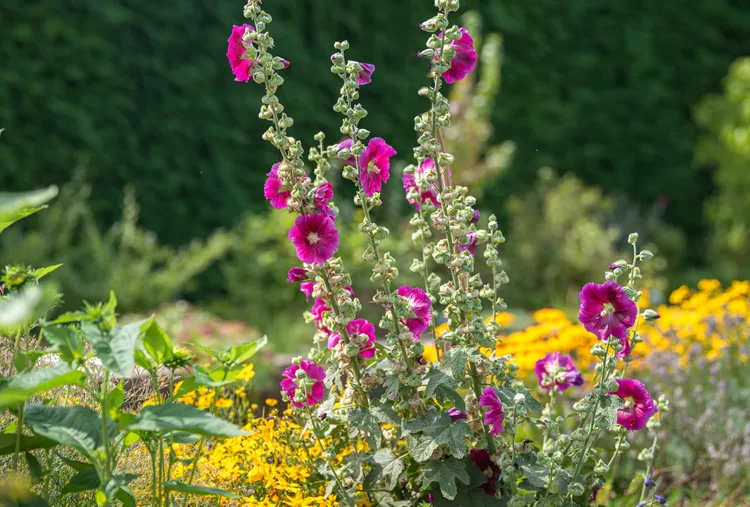
| Common Name | Hollyhocks |
| Botanical Name | Alcea spp. |
| Family | Malvaceae |
| Plant Type | Herbaceous, perennial, biennial |
| Mature Size | 4-8 ft. tall, 1-2 ft. wide |
| Sun Exposure | Full, partial |
| Soil Type | Moist, well-drained |
| Soil pH | Acid, neutral, alkaline |
| Bloom Time | Summer |
| Flower Color | White, pink, red, yellow, purple, orange |
| Hardiness Zones | 2-10 (USDA) |
| Native Area | Asia, Europe |
HOSTAS
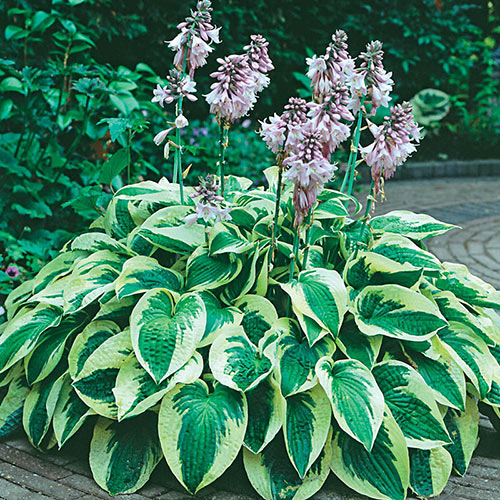
| Common Name | Hosta, plantain lily |
| Botanical Name | Hosta spp. |
| Family | Asparagaceae |
| Plant Type | Herbaceous, perennial |
| Mature Size | 6–48 in. tall, 10–60 in. wide |
| Sun Exposure | Shade, partial |
| Soil Type | Loamy, well-drained |
| Soil pH | Acidic |
| Bloom Time | Summer |
| Flower Color | White, purple, pink |
| Hardiness Zones | 3–9 (USDA) |
HOSTA, Plaintain Lily

| Common Name | Hosta, plantain lily |
| Botanical Name | Hosta spp. |
| Family | Asparagaceae |
| Plant Type | Herbaceous, perennial |
| Mature Size | 6–48 in. tall, 10–60 in. wide |
| Sun Exposure | Shade, partial |
| Soil Type | Loamy, well-drained |
| Soil pH | Acidic |
| Bloom Time | Summer |
| Flower Color | White, purple, pink |
| Hardiness Zones | 3–9 (USDA) |
IRIS, BEARDED, WHITE

| Common Name | Bearded iris |
| Botanical Name | Iris germanica |
| Family | Iridaceae |
| Plant Type | Herbaceous, perennial |
| Mature Size | 12–40 in. tall, 1 –2 ft. wide |
| Sun Exposure | Full |
| Soil Type | Average, well-draining |
| Bloom Time | Spring |
| Flower Color | Red, orange, yellow, blue, purple, brown, white, pink, many bicolors |
| Hardiness Zones | 3–9 (USDA) |
| Native Area | Southern Europe and the Mediterranean |
IVY, MINIATURE
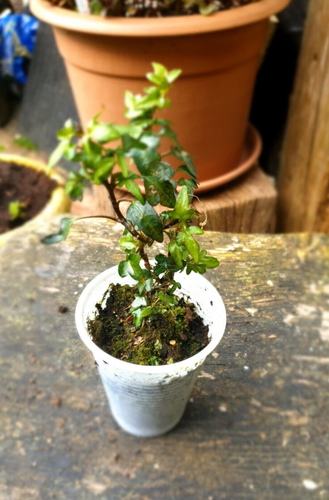
- Tiny ivy leaves
- Proper name: Hedera helix ‘Abundance’
- Zones 5-11 or indoors
- Easy to grow houseplant
- Terrarium, Fairy Garden or House Plant
JEWELWEED
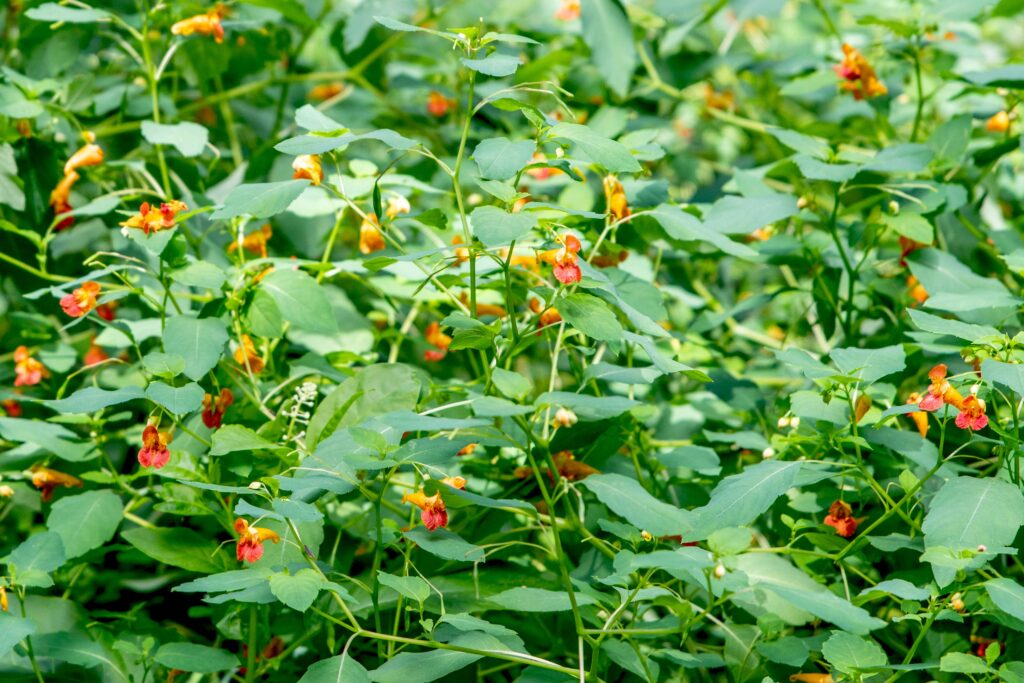
| Common Name | Jewelweed, orange jewelweed, spotted jewelweed, spotted touch-me-not |
| Botanical Name | Impatiens capensis |
| Family | Balsaminaceae |
| Plant Type | Annual |
| Mature Size | 2–5 ft. tall, 1.5–2.5 ft. wide |
| Sun Exposure | Partial, shade |
| Soil Type | Moist |
| Soil pH | Acidic, neutral |
| Bloom Time | Summer, fall |
| Flower Color | Orange, yellow |
| Hardiness Zones | 2–11 (USDA) |
| Native Area | North America |
LENTEN ROSE

| Common Name | Lenten rose |
| Botanical Name | Helleborus x hybridus |
| Family | Ranunculaceae |
| Plant Type | Perennial |
| Mature Size | 1-2 ft. tall, 1-2.5 ft. wide |
| Sun Exposure | Partial, shade |
| Soil Type | Moist but well-drained |
| Soil pH | Alkaline, neutral |
| Bloom Time | Spring, winter |
| Flower Color | Pink, purple, red, white, green, yellow |
| Hardiness Zones | 4–9 (USDA) |
| Native Area | Europe, Asia |
MALTESE CROSS, JERUSALEM CROSS
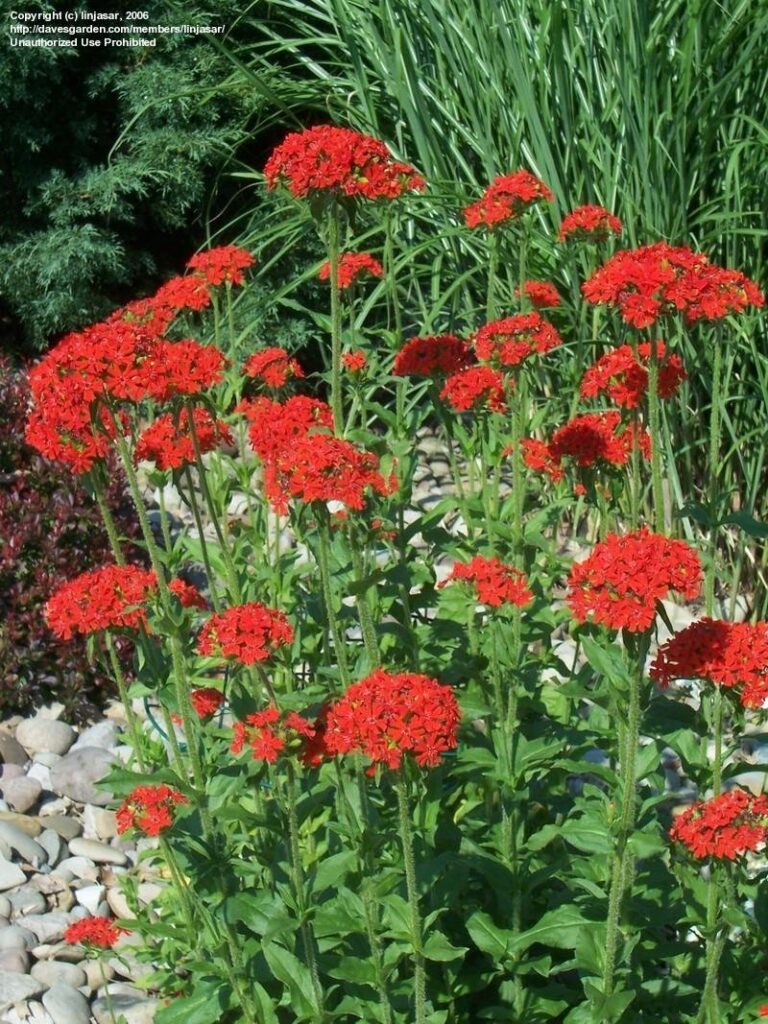
Maltese Cross, Scarlet Lychnis, Jerusalem Cross |
Lychnis chalcedonica |
Caryophyllaceae |
Perennial |
24-36” |
Full sun |
Loamy and sandy |
Mildly acidic, alkaline or neutral |
Late May-August |
Red |
3-9 |
Eastern Europe & Western Asia |
MARIGOLD, DESERT
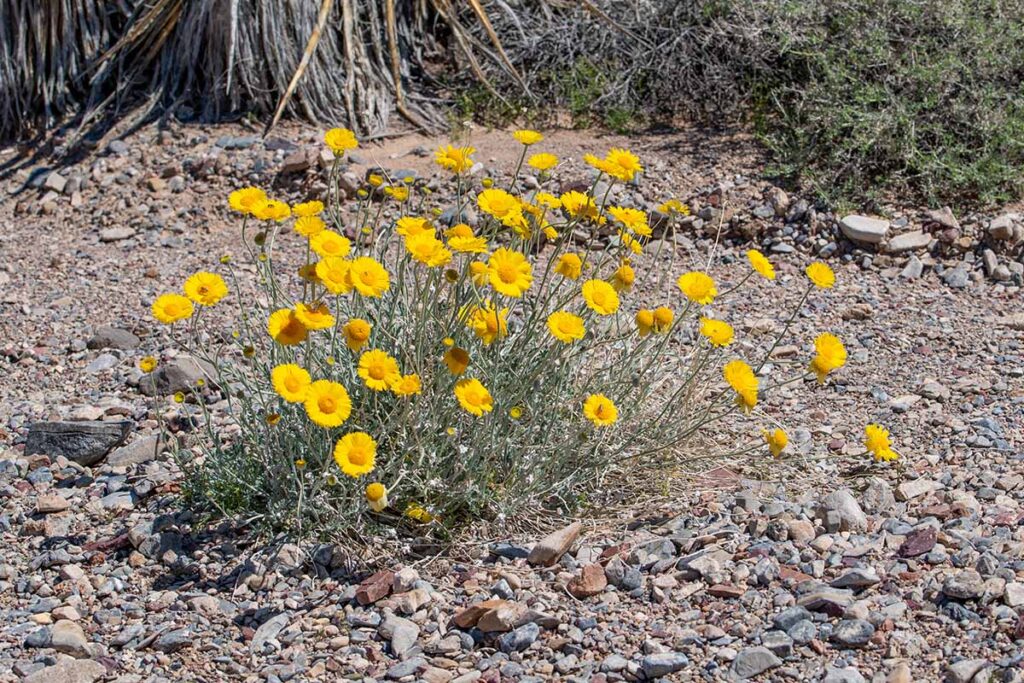
Desert Marigold
Baileya multiradiata
Asteraceae
Perennial
1’-2’
Full sun
Clay, loam or sand
Acid, alkaline or neutral
Yellow
7-10
- Mexico & SW US
MEXICAN HAT (PRAIRIE CONEFLOWER)
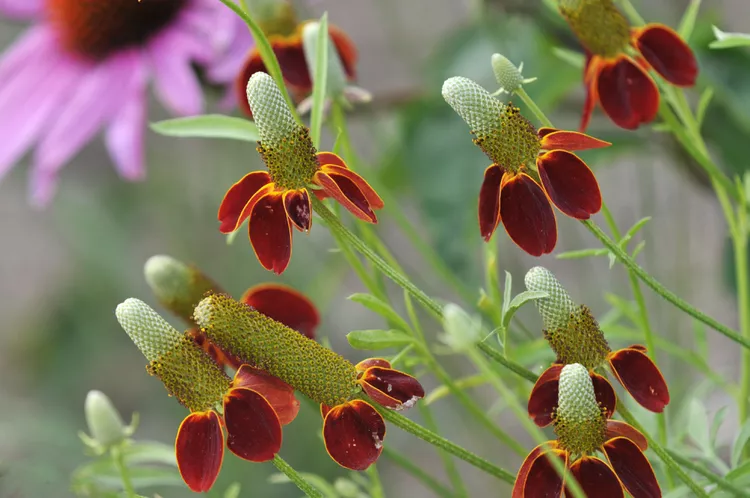
| Common Name | Mexican hat flower, prairie coneflower, thimble flower |
| Botanical Name | Ratibida columnifera |
| Family | Asteraceae |
| Plant Type | Perennial |
| Mature Size | Up to 3 ft. tall, 18 in. wide |
| Sun Exposure | Full |
| Soil Type | Loamy, sandy, well-drained |
| Soil pH | Neutral, alkaline |
| Bloom Time | Spring, summer, fall |
| Flower Color | Orange, yellow, brown |
| Hardiness Zones | 4-9 (USDA) |
| Native Area | North America (Mexico) |
MEXICAN PETUNIA
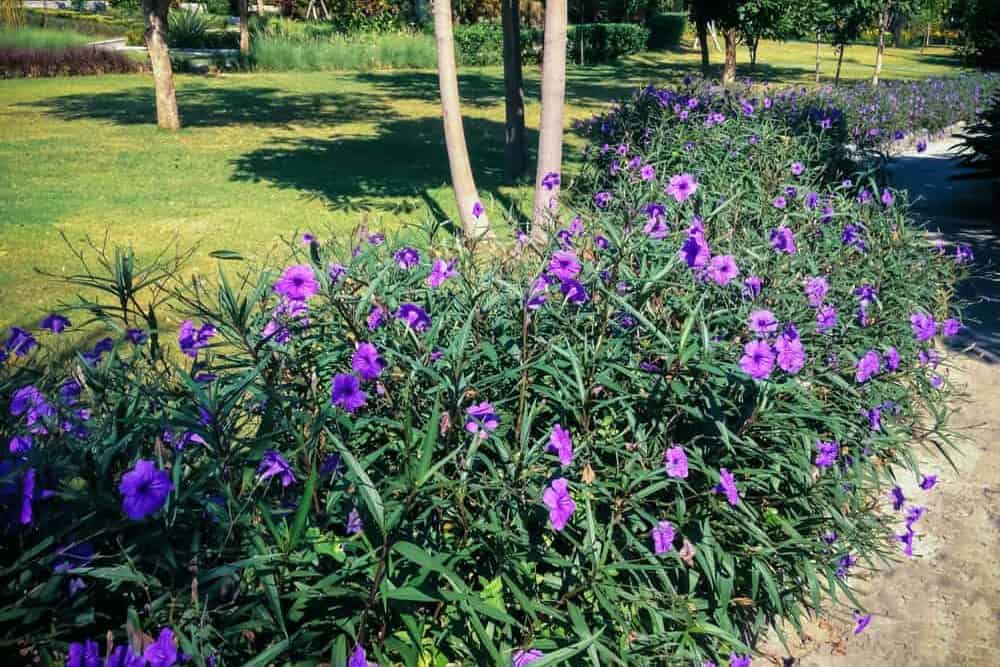
| Common Name | Mexican petunia, Mexican bluebell, Britton’s petunia |
| Botanical Name | Ruellia brittoniana or Ruellia simplex |
| Family | Acanthaceae |
| Plant Type | Perennial, rhizome |
| Mature Size | 1-4 ft. tall, 1-3 ft. long, 1-3 ft. wide |
| Sun Exposure | Full, partial |
| Soil Type | Loamy, sandy, moist but well-drained |
| Soil pH | Acidic, neutral |
| Bloom Time | Summer, fall |
| Flower Color | Purple |
| Hardiness Zones | 8-11, USDA |
| Native Area | North America, South America, Caribbean |
MILKWEED, BALOON PLANT, GREEN HAIRY BALLS
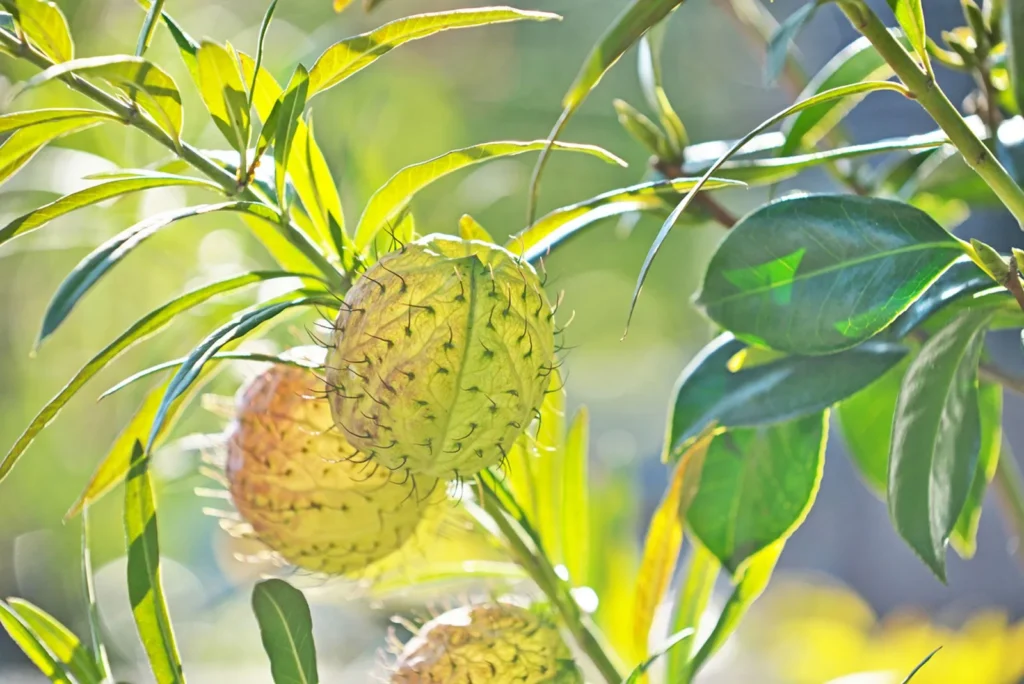
- Fast growing annual Milkweed, hardy in zones 8-10
- Can sustain lots of munching monarch caterpillars late season
- Nectar source for monarch butterflies
- Long stems with pods make beautiful table centerpiece
- Last viable Milkweed species before fall frost
- Start seeds at least 6-8 weeks inside; easy to germinate in about a week
- Flowers aren’t super showy, but still attractive
- Fewer pollinators use this than native Milkweed
- Pinch back the plant to make it bushier and with a stronger stem
- Place in the rear of a border as it can top off at 6 feet and may require staking
- The pods become ripe when they turn a tan color and burst open with the fuzzy seeds
MONDO GRASS, MONKEY GRASS, VARIEGATED
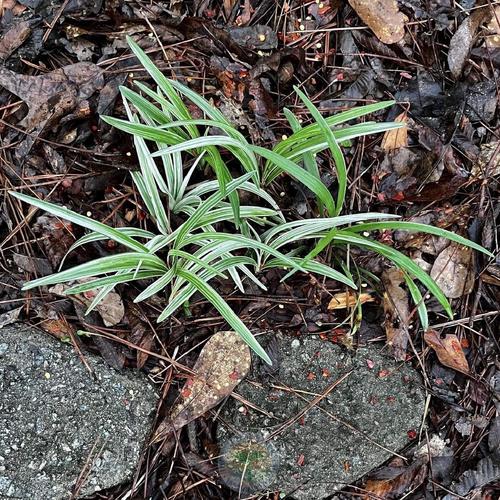
| Plant Habit: | Herb/Forb Grass/Grass-like |
| Life cycle: | Perennial |
| Sun Requirements: | Full Sun to Partial Shade Partial Shade to Full Shade |
| Water Preferences: | In Water Wet Wet Mesic |
| Leaves: | Evergreen |
| Fruit: | Showy |
| Flowers: | Inconspicuous |
| Flower Time: | Summer |
| Underground structures: | Rhizome |
| Uses: | Groundcover Medicinal Herb |
MUGWORT, VARIEGATED
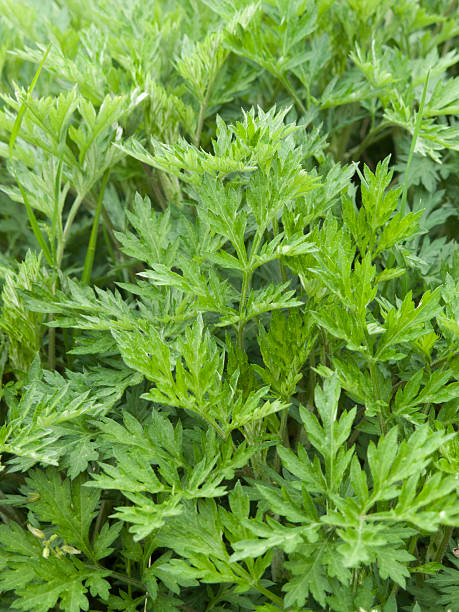
| Plant Habit: | Herb/Forb |
| Life cycle: | Perennial |
| Sun Requirements: | Full Sun to Partial Shade Partial or Dappled Shade |
| Water Preferences: | Mesic Dry Mesic Dry |
| Minimum cold hardiness: | Zone 4a -34.4 °C (-30 °F) to -31.7 °C (-25 °F) |
| Maximum recommended zone: | Zone 8b |
| Plant Height: | 2 to 3 feet (60-90 cm) |
| Leaves: | Variegated |
| Uses: | Will Naturalize |
| Resistances: | Drought tolerant |
| Propagation: Other methods: | Stolons and runners |
PASSION FLOWER, May be bareroot

| Common Names | Passionflower, passion flower vine, maypop, granadilla |
| Botanical Name | Passiflora spp. |
| Family | Passifloraceae |
| Plant Type | Perennial, vine |
| Mature Size | 10–30 ft. tall, 3–6 ft. wide |
| Sun Exposure | Full, partial |
| Soil Type | Moist but well-drained |
| Soil pH | Neutral, acidic |
| Bloom Time | Summer |
| Flower Color | Purple, blue, pink, red, white |
| Hardiness Zones | 7–10 (USDA) |
| Native Area | North America, South America |
| Toxicity | Varies by type1 |
PERIWINKLE VINE, VINCA

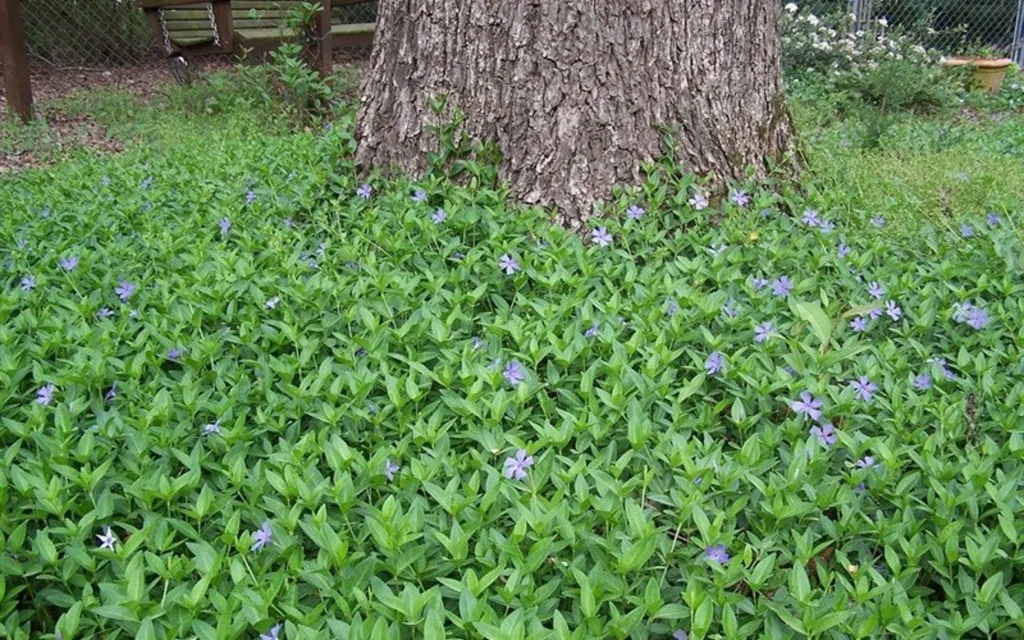
| Common Name | Bigleaf periwinkle, greater periwinkle, blue periwinkle |
| Botanical Name | Vinca major |
| Family | Apocynaceae/dogbane |
| Plant Type | Evergreen perennial |
| Mature Size | 6-8 in. tall |
| Sun Exposure | Full, partial |
| Soil Type | Well-drained, clay, loam |
| Soil pH | Slightly acidic |
| Bloom Time | Mid to late spring |
| Flower Color | Purple, blue |
| Hardiness Zones | 4-9 (USDA) |
| Native Areas | Southern Europe, Northern Africa, Asia |
| Toxicity | Mildly toxic to humans and animals |
PHLOX
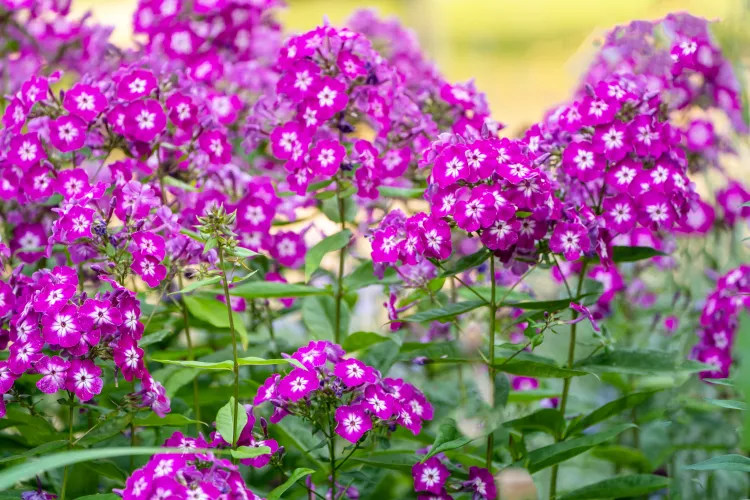
| Botanical Name | Phlox paniculata |
| Common Names | Garden phlox, tall phlox |
| Plant Type | Herbaceous perennial |
| Mature Size | 2 to 4 ft. tall, 2 to 3 ft. wide (but varies by cultivar) |
| Sun Exposure | Full sun to partial sun |
| Soil Type | Moist but well-drained |
| Soil pH | Neutral |
| Bloom Time | Summer |
| Flower Color | Lavender, lilac, pink, purple, salmon, white |
| Hardiness Zones | 4 to 8, USA (but varies by cultivar) |
| Native Area | Eastern United States |
PHLOX

PINK MUHLY GRASS
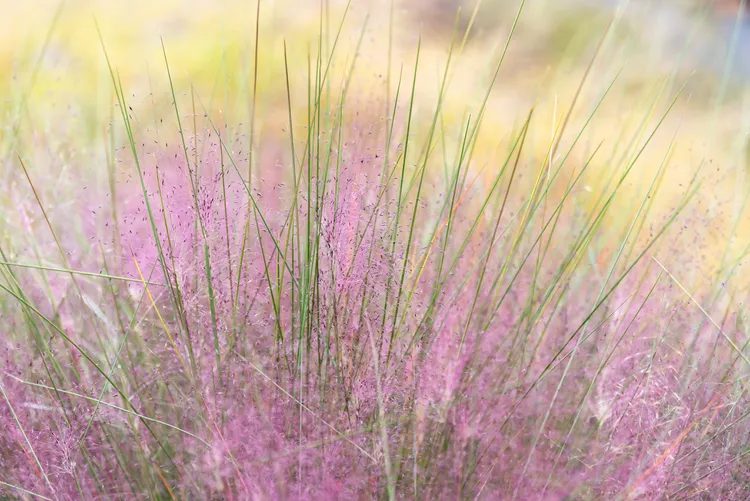
| Common Name | Pink muhly grass, gulf muhly, hairgrass |
| Botanical Name | Muhlenbergia capillaris |
| Family | Poaceae |
| Plant Type | Perennial |
| Mature Size | 2-3 ft. tall, 2-3 ft. wide |
| Sun Exposure | Full |
| Soil Type | Loamy, sandy, clay, silt, moist, well-drained |
| Soil pH | Acidic, neutral, alkaline |
| Bloom Time | Fall |
| Flower Color | Pink, red |
| Hardiness Zones | 5-9 (USDA) |
| Native Area | North America |
PURPLE TOP VERVAIN, VERBENA ON A STICK
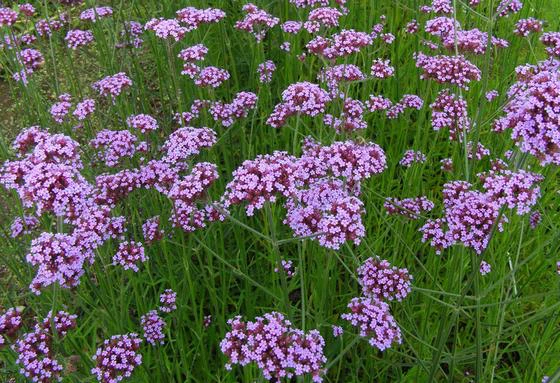
- Plant Characteristics: Features tall, slender stems topped with clusters of small, purple flowers. Its airy and open habit allows it to blend well with other plants, adding height and texture to gardens.
- Growing & Care: Prefers full sun and well-drained soil. Tolerant of poor soils and drought. Deadhead to encourage continuous blooming throughout the summer.
- Tips for New Gardeners: A low-maintenance plant that’s great for attracting butterflies and bees. Can be used in borders, wildflower gardens, or as a filler in mixed beds. Self-seeds readily, so consider its placement.
RICE PAPER PLANT
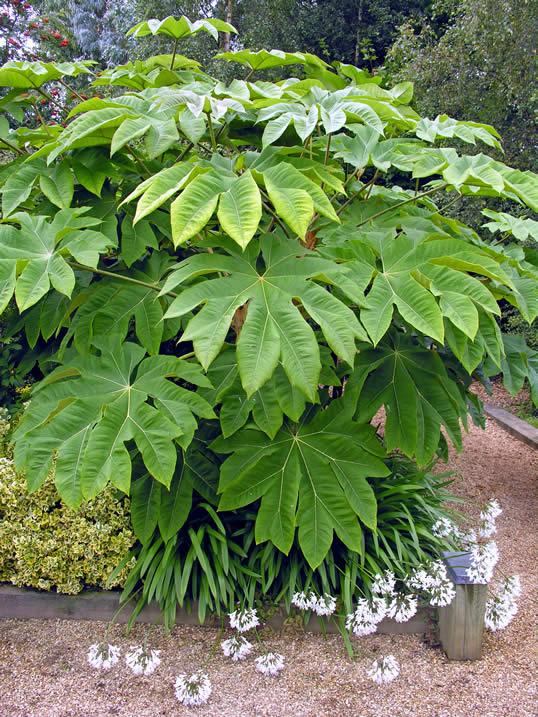
Rice paper plant (Tetrapanax papyrifer) is a shrubby, fast-growing perennial with gigantic, tropical-looking, palmate leaves and clusters of showy white flowers that bloom in summer and fall. This is a super-huge plant that reaches widths of 5 to 8 feet (1.5-2 m.) and heights of up to 12 feet (4 m.). Growing rice paper plants is a piece of cake if you live in a climate with relatively mild winters free of long, hard freezes.
How to Grow a Rice Paper Plant
You can grow rice paper plants year-round with no worries if you live in the warm climates of USDA plant hardiness zone 9 and above. Rice paper plants grow in zone 7 and 8 (and maybe even zone 6) with plenty of mulch to protect the roots during the winter. The top of the plant will freeze, but new shoots will grow back from the rhizomes in spring. Otherwise, rice paper plants grow in full sunlight or light shade. Nearly any type of soil is fine.
Rice Paper Plant Care
SALVIA, BLUE BEDDER

| GENUS NAME | Salvia, Blue Bedder |
| COMMON NAME | Perennial Salvia |
| PLANT TYPE | Perennial |
| LIGHT | Part Sun, Sun |
| HEIGHT | 1 to 3 feet |
| WIDTH | 1 to 3 feet |
| FLOWER COLOR | Blue |
| FOLIAGE COLOR | Blue/Green |
| SEASON FEATURES | Fall Bloom, Spring Bloom, Summer Bloom |
| SPECIAL FEATURES | Attracts Birds, Cut Flowers, Fragrance, Good for Containers, Low Maintenance |
| ZONES | 10, 3, 4, 5, 6, 7, 8, 9 |
| PROPAGATION | Division, Seed, Stem Cuttings |
| PROBLEM SOLVERS | Deer Resistant, Drought Tolerant |
SALVIA, RED and ST. JOHN’S FIRE
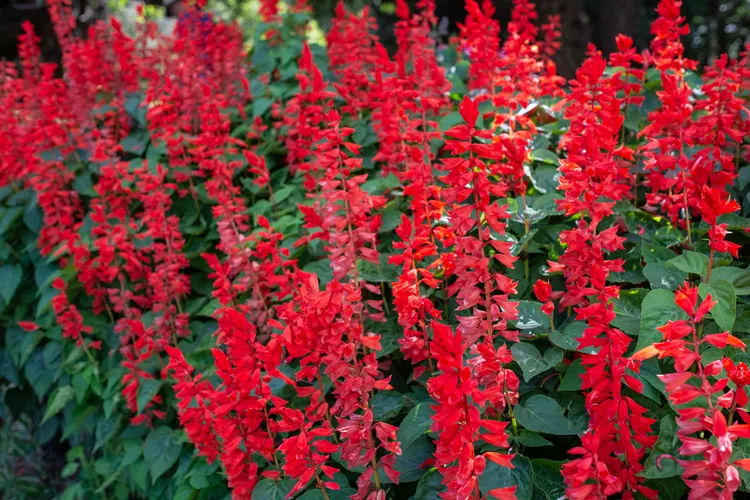
| Common Name | Red salvia, scarlet sage, blood sage |
| Botanical Name | Salvia splendens AND coccinea |
| Family | Lamiaceae |
| Plant Type | Perennial, herbaceous |
| Mature Size | 1–2 ft. tall, 9–18 in. wide |
| Sun Exposure | Full, partial |
| Soil Type | Moist but well-drained |
| Soil pH | Acidic, neutral |
| Bloom Time | Summer, fall |
| Flower Color | Red |
| Hardiness Zones | 10–11 (USDA) |
| Native Area | South America |
SHAMROCKS, PINKS
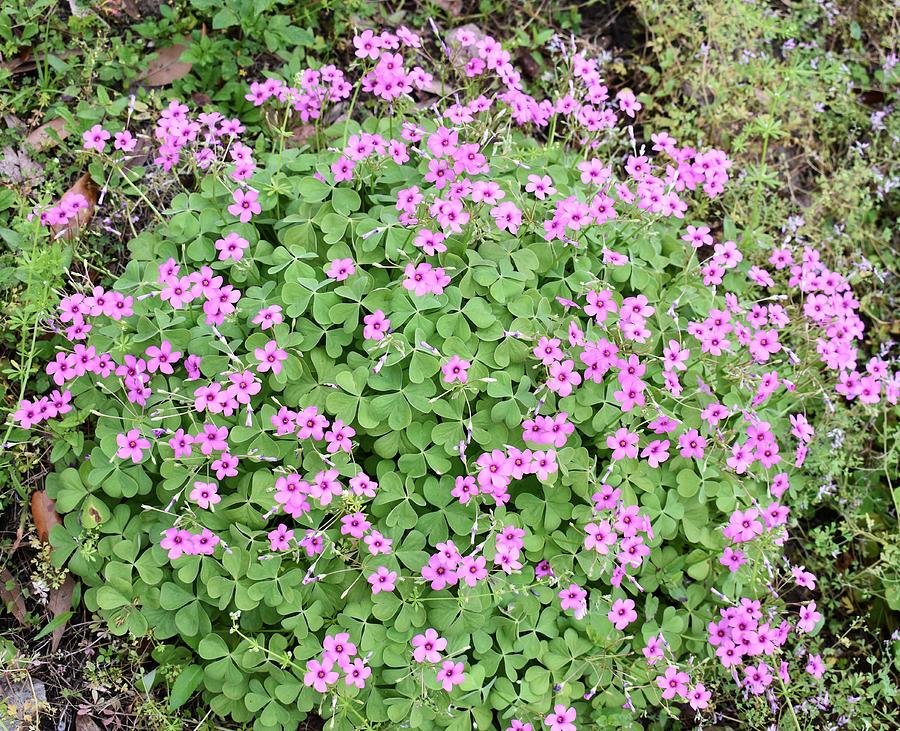
| Common Name | Oxalis, Shamrock, Lucky Clover, Wood Sorrel |
| Botanical Name | Oxalis |
| Family | Oxalidaceae |
| Plant Type | Annual, perennial, corm, or creeping rhizome |
| Mature Size | 2 to 18 inches, species dependent |
| Sun Exposure | Full sun to part shade |
| Soil Type | Well drained loam |
| Soil pH | 6.0 to 8.0 |
| Bloom Time | Summer |
| Flower Color | White, yellow, purple, pink, red, rose |
| Hardiness Zones | 5 to 10 USDA, species dependent |
| Native Area | Worldwide except Antarctica |
SILVER DOLLAR PLANT
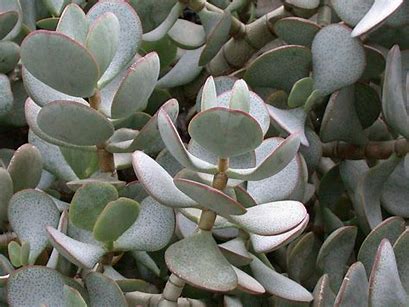
- Thrives in partial to full sun; acclimate to full sun gradually when moving from indoors to outdoors.
- Drought-tolerant; water after soil dries.
- Plant in well-draining succulent soil using a pot with drainage holes to prevent waterlogging.
- Prefers warmer temperatures but will survive down to around freezing; thrives in lower humidity.
- Cut anywhere on the plant to control size; pruning promotes fullness
- Propagate through stem cuttings directly in soil.
SNAP DRAGON, BRONZE
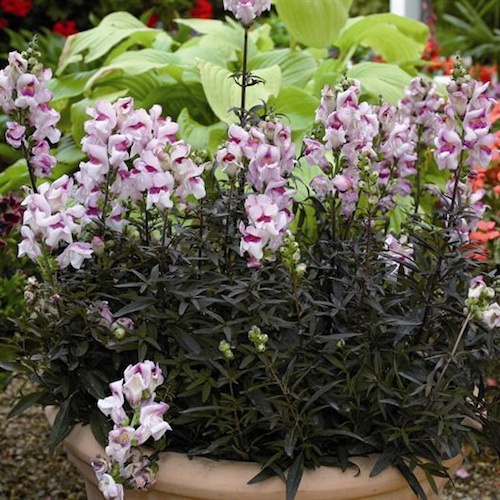
| Common Name | Snapdragon, dog’s mouth, lion’s mouth, toad’s mouth |
| Botanical Name | Antirrhinum majus |
| Family | Plantaginaceae |
| Plant Type | Perennial, annual |
| Mature Size | 6–8 in. tall, 6–12 in. wide |
| Sun Exposure | Full, partial |
| Soil Type | Moist, well-draining |
| Soil pH | Acidic, neutral |
| Bloom Time | Spring, summer, fall |
| Flower Color | White, yellow, pink, red, orange, purple |
| Hardiness Zones | 7–11 (USDA) |
| Native Area | Mediterranean, Europe, Asia |
SNAP DRAGON, MAGIC CARPET
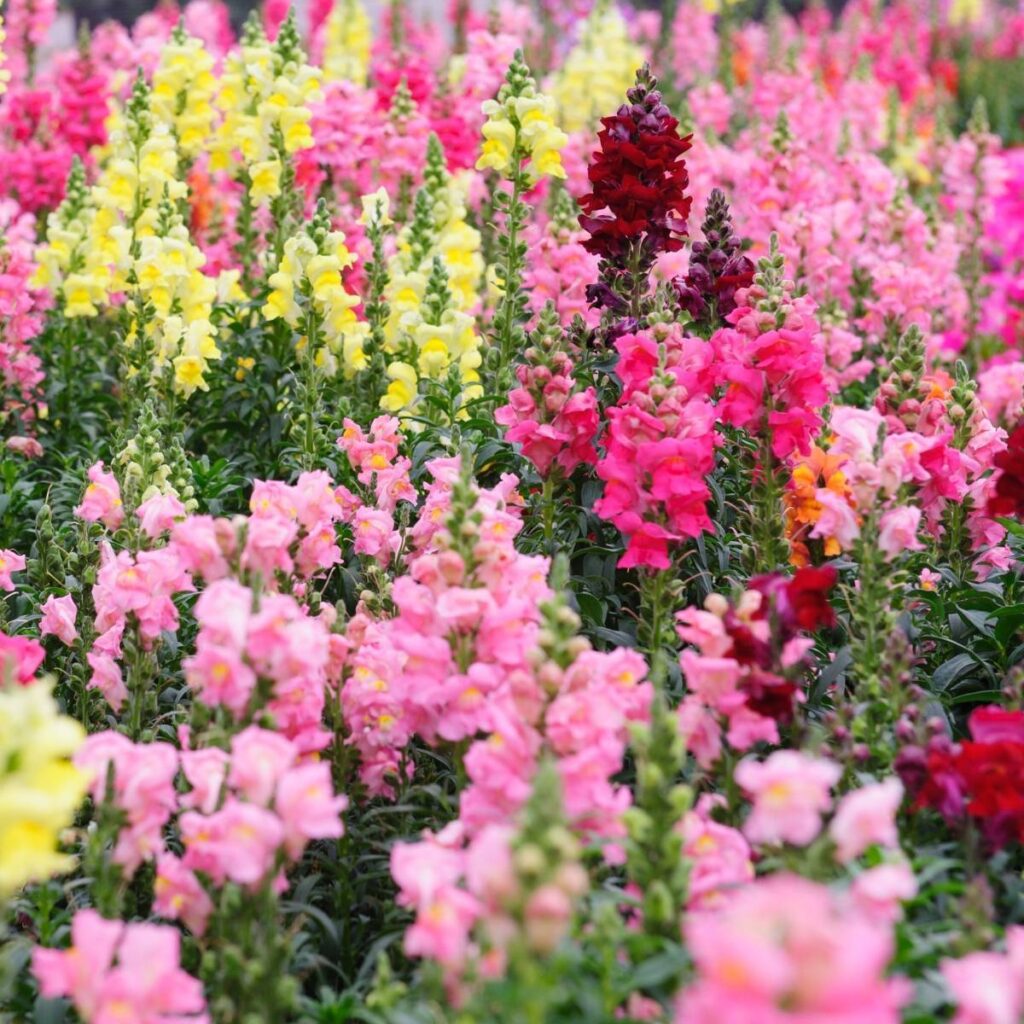
| Common Name | Snapdragon, dog’s mouth, lion’s mouth, toad’s mouth |
| Botanical Name | Antirrhinum majus |
| Family | Plantaginaceae |
| Plant Type | Perennial, annual |
| Mature Size | 6–8 in. tall, 6–12 in. wide |
| Sun Exposure | Full, partial |
| Soil Type | Moist, well-draining |
| Soil pH | Acidic, neutral |
| Bloom Time | Spring, summer, fall |
| Flower Color | White, yellow, pink, red, orange, purple |
| Hardiness Zones | 7–11 (USDA) |
| Native Area | Mediterranean, Europe, Asia |
SNAP DRAGON, MANGO TWIST
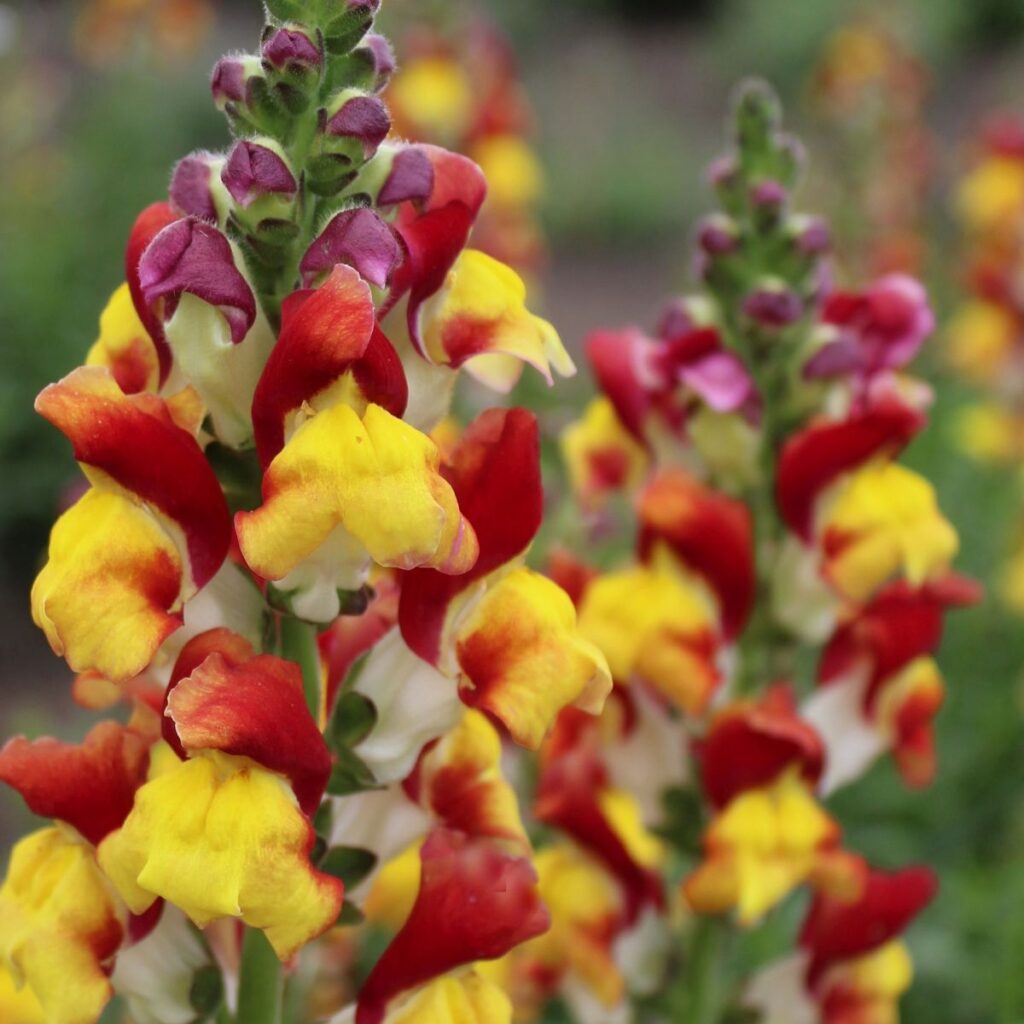
| Common Name | Snapdragon, dog’s mouth, lion’s mouth, toad’s mouth |
| Botanical Name | Antirrhinum majus |
| Family | Plantaginaceae |
| Plant Type | Perennial, annual |
| Mature Size | 6–8 in. tall, 6–12 in. wide |
| Sun Exposure | Full, partial |
| Soil Type | Moist, well-draining |
| Soil pH | Acidic, neutral |
| Bloom Time | Spring, summer, fall |
| Flower Color | White, yellow, pink, red, orange, purple |
| Hardiness Zones | 7–11 (USDA) |
| Native Area | Mediterranean, Europe, Asia |
SPIDERWORT
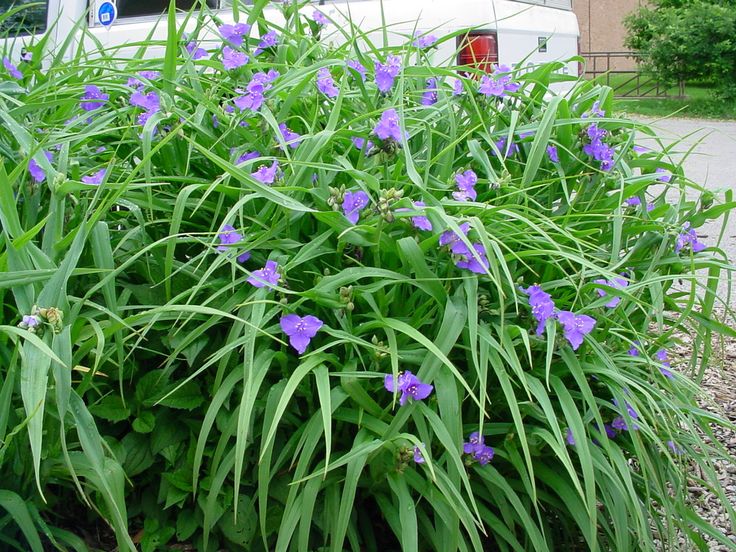
| Common name | Spiderwort, inchplant, dayflower, purple heart |
| Botanical name | Tradescantia spp. |
| Family | Commelinaceae |
| Plant type | Herbaceous, perennial |
| Mature size | 1 ft.–3 ft. tall, 1–1.5 ft. wide |
| Sun exposure | Full, partial, shade |
| Soil type | Moist but well-drained |
| Soil pH | Acidic |
| Bloom time | Spring, summer |
| Flower color | Blue, purple, pink |
| Hardiness zones | 4b-12a (USDA) |
| Native Area | North America, South America. Central America |
STATICE
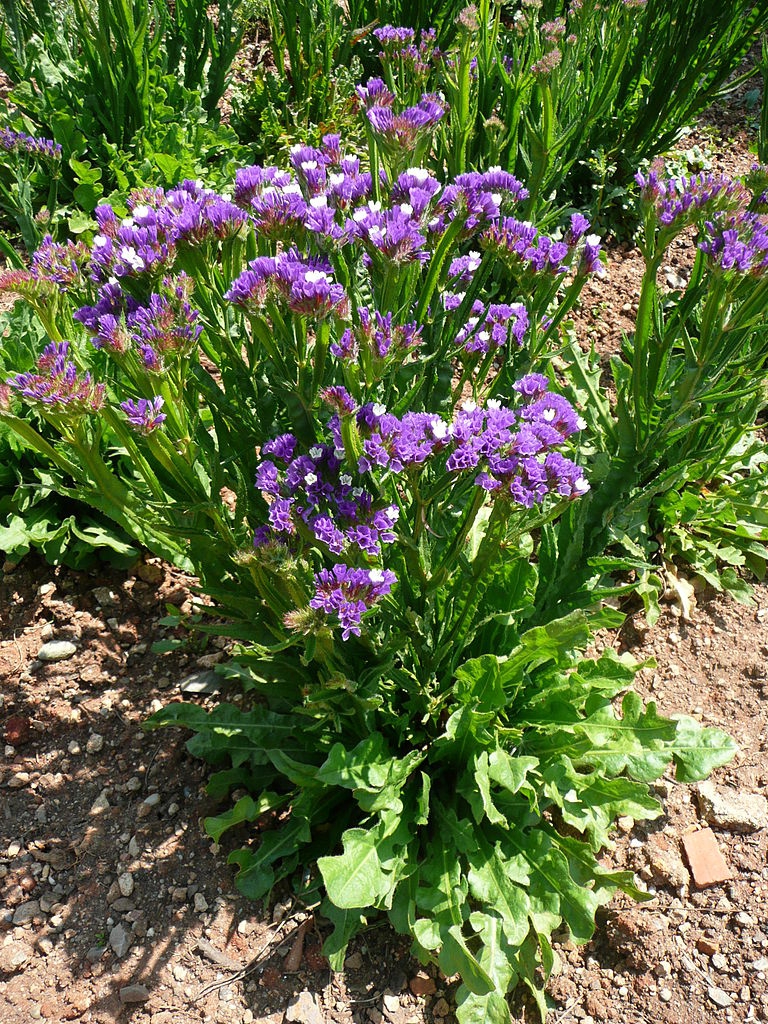
VERBENA, FLORIST MIXED COLORS

| Genus Name | Verbena |
| Common Name | Verbena |
| Plant Type | Annual, Perennial |
| Light | Sun |
| Height | 6 to 12 inches |
| Width | 12 to 20 inches |
| Flower Color | Blue, Pink, Purple, Red, White |
| Foliage Color | Blue/Green |
| Season Features | Fall Bloom, Summer Bloom |
| Special Features | Good for Containers |
| Zones | 7, 8, 9 |
| Propagation | Seed, Stem Cuttings |
| Problem Solvers | Deer Resistant |
VERBENA, HOMESTEAD PURPLE
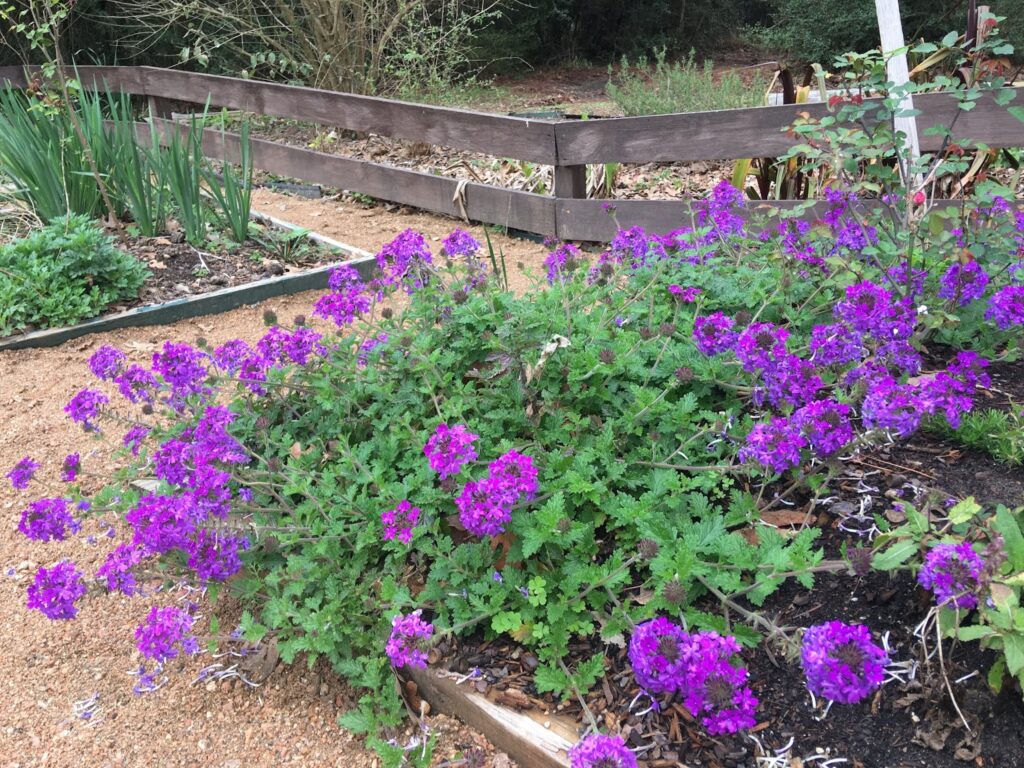
| Common Name | Verbena, annual verbena |
| Botanical Name | Verbena x hybrida |
| Family | Verbenaceae |
| Plant Type | Annual, perennial |
| Mature Size | 9–12 in. tall, 12–18 in. wide |
| Sun Exposure | Full |
| Soil Type | Moist, well-drained |
| Soil pH | Acidic, neutral |
| Bloom Time | Spring, summer, fall |
| Flower Color | Purple |
| Hardiness Zones | 8–11 (USDA) |
| Native Area | Europe |
YARROW, White or Red
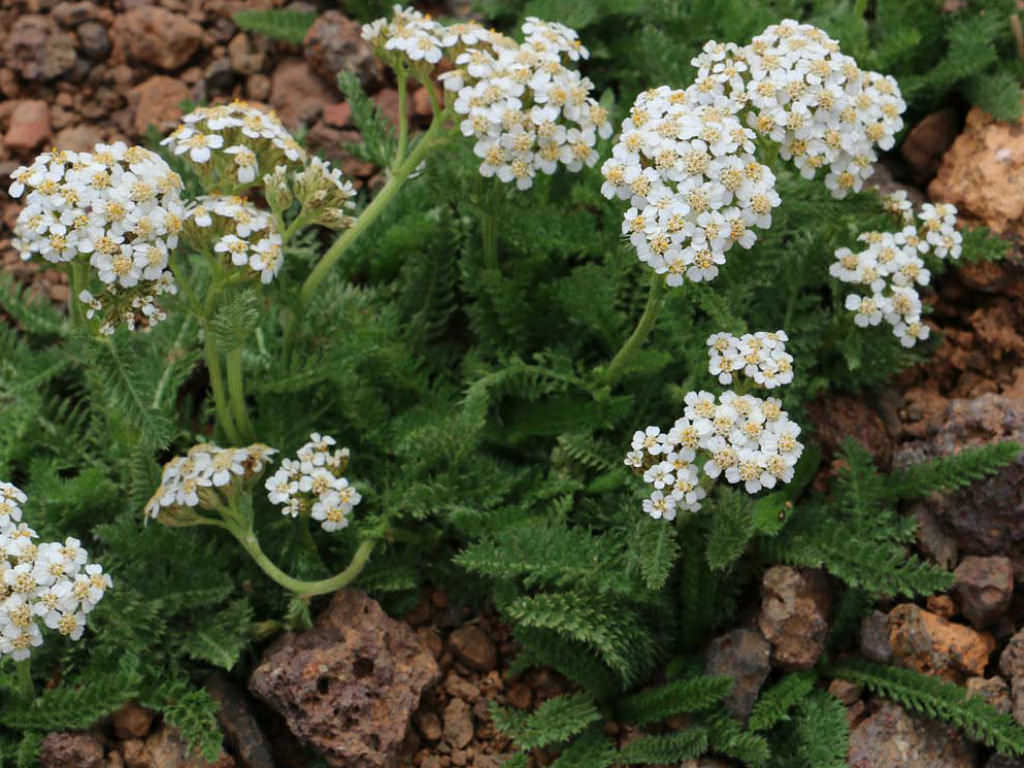
| GENUS NAME | Achillea |
| COMMON NAME | Yarrow |
| PLANT TYPE | Herb, Perennial |
| LIGHT | Sun |
| HEIGHT | 6 to 24 inches |
| WIDTH | 2 to 3 feet |
| FLOWER COLOR | Orange, Pink, Red, White, Yellow |
| FOLIAGE COLOR | Blue/Green, Gray/Silver |
| SEASON FEATURES | Fall Bloom, Spring Bloom, Summer Bloom, Winter Interest |
| SPECIAL FEATURES | Attracts Birds, Good for Containers, Low Maintenance |
| ZONES | 10, 3, 4, 5, 6, 7, 8, 9 |
| PROPAGATION | Division, Seed |
| PROBLEM SOLVERS | Deer Resistant, Drought Tolerant, Groundcover, Slope/Erosion Control |
HERBS
BASIL, CARDINAL

(Ocimum basilicum). A delicious, fragrant culinary basil that produces huge, rich purple flower heads! These are fantastic in flower arrangements. Try the spicy-sweet leaves in your favorite recipes. They are perfect for salads, soups, and curries, and the leaves go well in many Mexican and Asian foods. A magnificent and grand variety for your garden and kitchen. Amazing flavor! Developed in Israel.
BASIL, CINNAMON
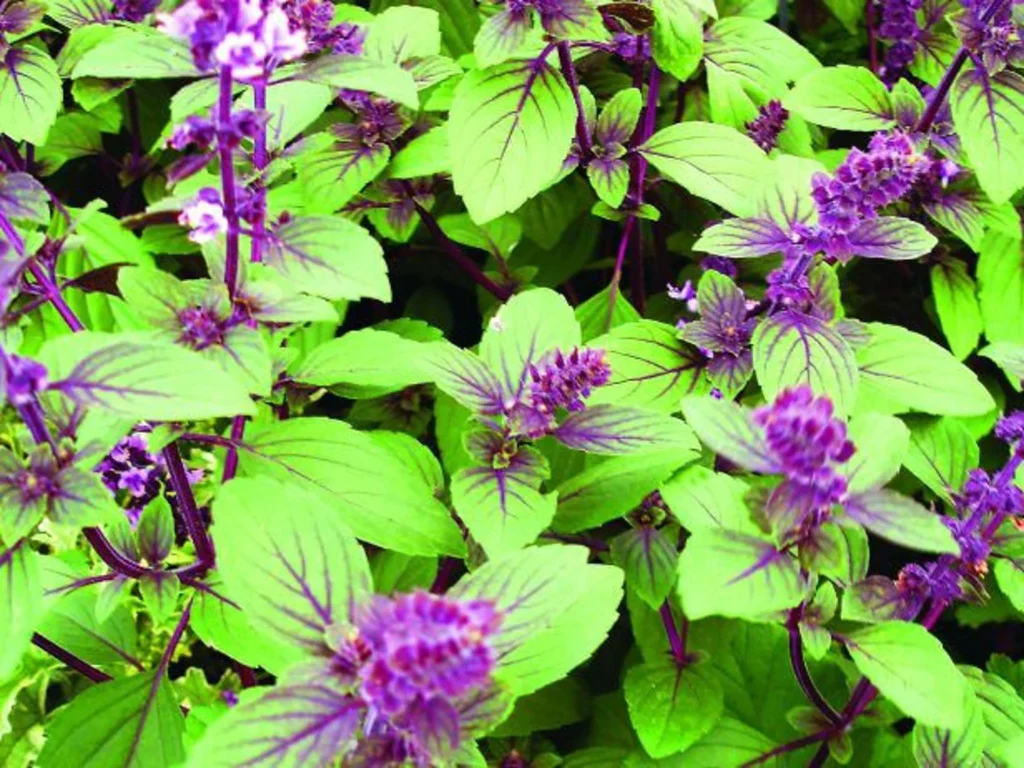
| Common Name | Cinnamon basil, Mexican spice basil |
| Botanical Name | Ocimum basilicum ‘Cinnamon’ |
| Family | Lamiaceae |
| Plant Type | Annual, herb |
| Size | 18-36 in. tall, 12-18 in. wide |
| Sun Exposure | Full sun |
| Soil Type | Loamy, well-drained |
| Soil pH | Acidic, neutral |
| Hardiness Zones | 9-11 (USDA) |
| Native Area | North America |
BASIL, DARK OPAL
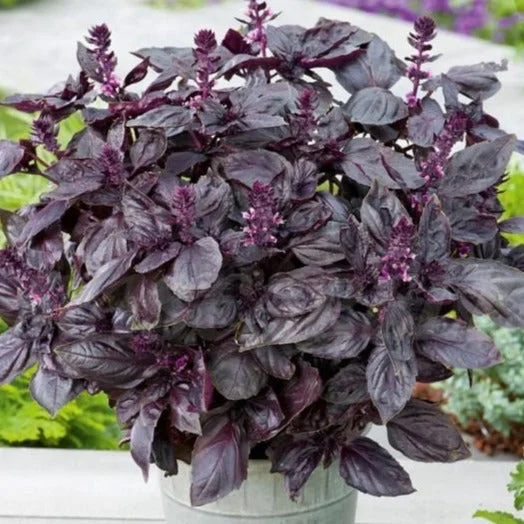
| Common Name | Basil, dark opal |
| Botanical Name | Ocimum basilicum var. app. |
| Family | Lamiaceae |
| Plant Type | Annual, herb |
| Size | 12-24 in. tall, 12-20 in. wide |
| Soil Type | Full sun |
| Soil pH | Moist but well-drained |
| Hardiness Zones | 10–11 (USDA) |
| Native Area | Africa, Asia |
BASIL, LEMON
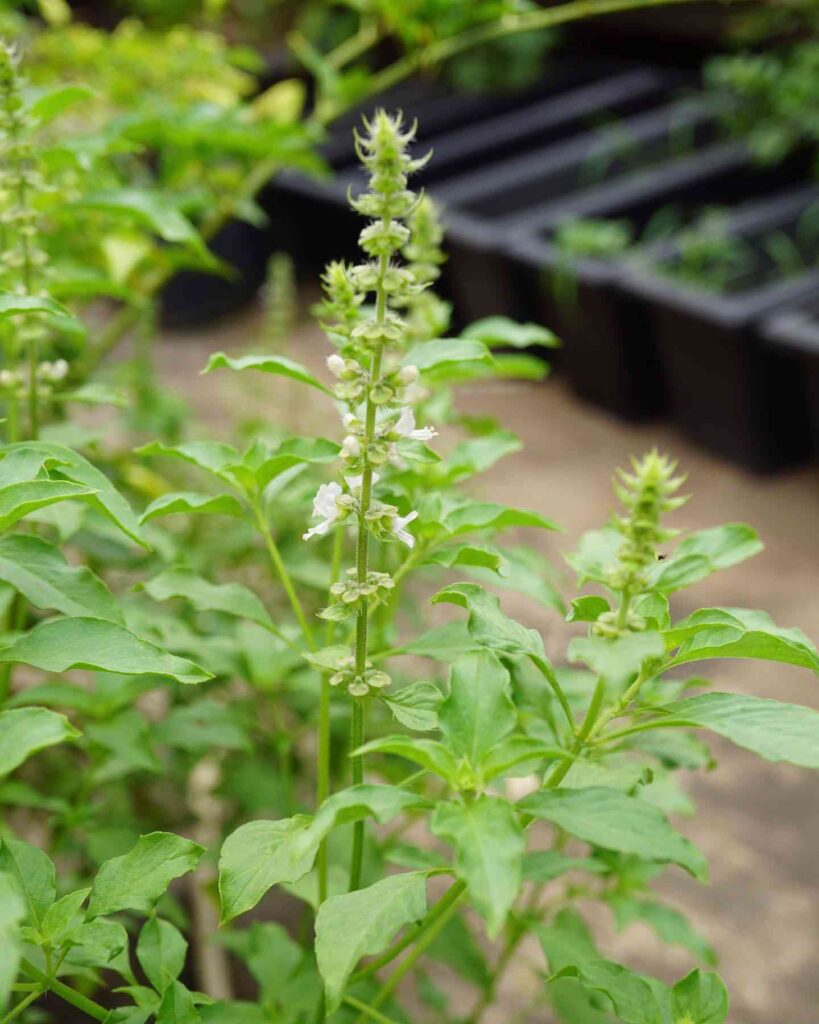
| Description | Bushy plants suitable for garden beds or containers. of flavorful foliage in shades of green, purple, or bronze. |
| Genus Name | Ocimum basilicum |
| Common Name | Basil |
| Plant Type | Annual, Herb |
| Light | Part Sun, Sun |
| Height | 1 to 3 feet |
| Width | 1 to 3 feet |
| Flower Color | White |
| Season Features | Fall Bloom, Summer Bloom |
| Special Features | Good for Containers, Low Maintenance |
| Propagation | Seed |
| Problem Solvers | Deer Resistant |
BASIL, SWEET

| Description | Bushy plants suitable for garden beds or containers. of flavorful foliage in shades of green, purple, or bronze. |
| Genus Name | Ocimum basilicum |
| Common Name | Basil |
| Plant Type | Annual, Herb |
| Light | Part Sun, Sun |
| Height | 1 to 3 feet |
| Width | 1 to 3 feet |
| Flower Color | White |
| Season Features | Fall Bloom, Summer Bloom |
| Special Features | Good for Containers, Low Maintenance |
| Propagation | Seed |
| Problem Solvers | Deer Resistant |
BASIL, THAI

| Common Name: | Thai basil, horapha (Thailand), hun que (Vietnam) |
| Botanical Name: | Ocimum basilicum var. thyrsiflora |
| Family: | Lamiaceae |
| Plant Type: | Herbaceous, Perennial, Annual |
| Size: | 12-18 in. tall, 12 in. wide |
| Sun Exposure: | Full, Partial |
| Soil Type: | Moist, Well-drained |
| Soil pH: | 6.5 to 7.5 |
| Bloom Time: | Summer |
| Hardiness Zones: | 10-11 (USDA) |
CALENDULA, POOR MAN’S SAFFRON

| Common Name | Calendula, pot marigold, common marigold |
| Botanical Name | Calendula officinalis |
| Family | Asteraceae |
| Plant Type | Perennial, annual |
| Mature Size | 1-2 ft. tall, 1-2 ft. wide |
| Sun Exposure | Full, partial |
| Soil Type | Well-drained |
| Soil pH | Neutral |
| Bloom Time | Spring, summer, fall |
| Flower Color | Yellow, orange, red, white, pink |
| Hardiness Zones | 2a-11b (USDA) |
| Native Area | Mediterranean |
CAT GRASS

What Is Cat Grass?
Cat grass is a mixture of grasses typically grown from barley, oat, wheat, or rye seeds. The most common types of cat grass are wheatgrass, barley grass, oat grass, and ryegrass. Cat grass is a popular digestive aid among cats and other animals. While cats enjoy both cat grass and catnip, the two are not interchangeable: catnip is a perennial plant from the mint (Lamiaceae) family that produces a behavioral reaction when consumed.
CATNIP

| Common Name | Catnip, catmint |
| Botanical Name | Nepeta cataria |
| Family | Lamiaceae |
| Plant Type | Perennial, herb |
| Size | 2–3 ft. tall, 2–3 ft. wide |
| Sun Exposure | Full sun |
| Soil Type | Loamy, sandy, well-drained |
| Soil pH | Acidic, neutral, alkaline |
| Bloom Time | Spring, summer, fall |
| Hardiness Zones | 3–7 (USDA) |
| Native Area | Europe, Asia |
| Toxicity | Toxic to cats |
CATMINT

| Genus Name | Nepeta |
| Common Name | Catmint |
| Plant Type | Perennial |
| Light | Part Sun, Sun |
| Height | 6 to 12 inches |
| Width | 12 to 36 inches |
| Flower Color | Blue, Pink, Purple, White, Yellow |
| Foliage Color | Blue/Green, Gray/Silver |
| Season Features | Fall Bloom, Summer Bloom |
| Zones | 3, 4, 5, 6, 7, 8 |
| Propagation | Division, Seed, Stem Cuttings |
| Problem Solvers | Deer Resistant, Drought Tolerant |
CILANTRO, SLOW BOLT
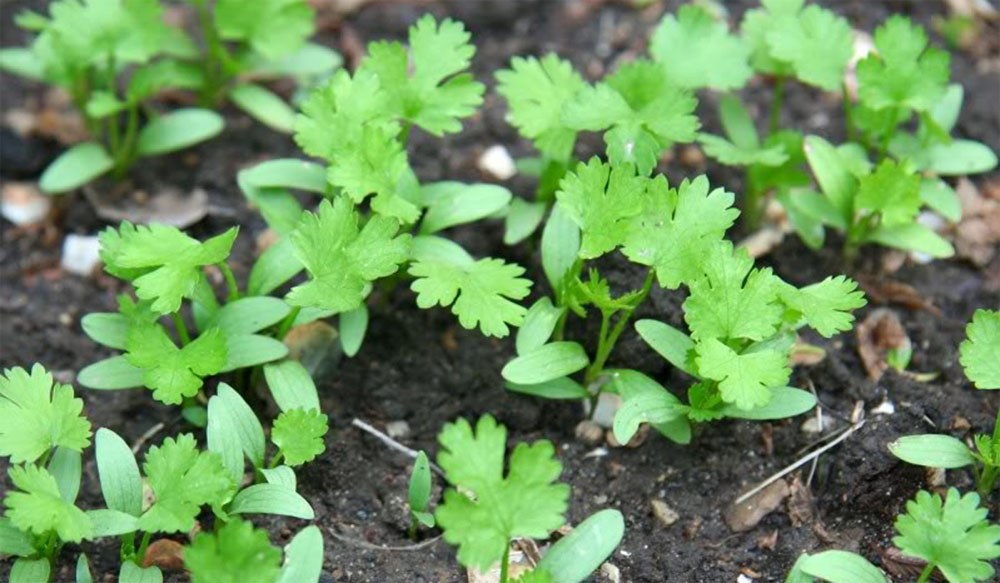
| Common Name | Cilantro, coriander, Chinese parsley |
| Botanical Name | Coriandrum sativum |
| Family | Apiaceae |
| Plant Type | Annual, herb |
| Size | 1–2 ft. tall, 1–1.5 ft. wide |
| Sun Exposure | Full sun, partial sun |
| Soil Type | Loamy, moist, well-drained |
| Soil pH | Acidic (6.2 to 6.8) |
| Bloom Time | Spring, summer, fall |
| Hardiness Zones | Annual, thrives in 2–11 (USDA) |
| Native Area | Asia, Europe, Africa |
DILL, MAMMOTH, GIANT and BOUQUET varieties
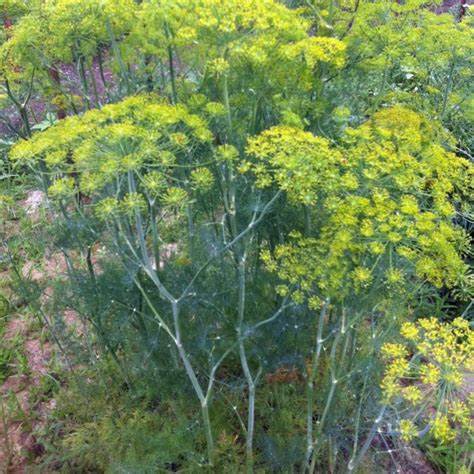
| Botanical Name | Anethum graveolens |
| Common Name | Dill, Mammoth |
| Plant Type | Annual |
| Mature Size | 3 to 6 ft. tall, 2 to 3 ft. wide |
| Sun Exposure | Full sun |
| Soil Type | Rich, well-drained |
| Soil pH | 6.5 (slightly acidic) |
| Bloom Time | Late summer, early fall |
| Flower Color | Yellow |
| Hardiness Zones | 2–11 (USDA) |
| Native Area | Europe, Asia |
FENNEL
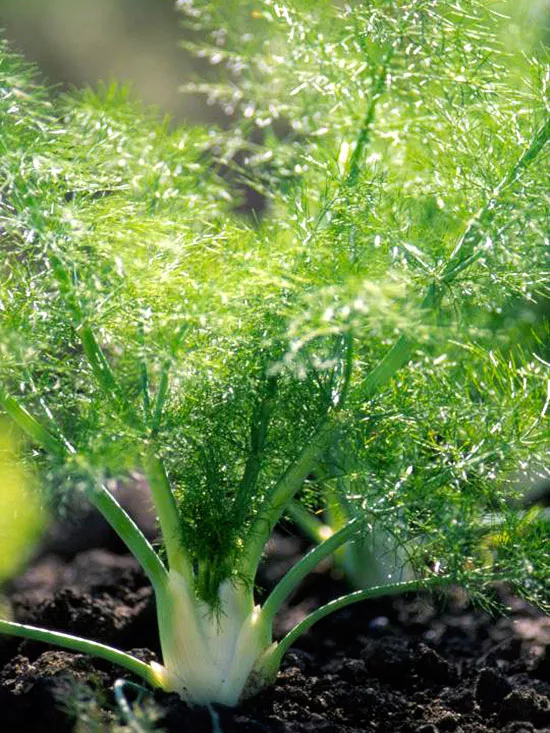
| Genus Name | Foeniculum vulgare |
| Common Name | Fennel |
| Plant Type | Herb, Vegetable |
| Light | Part Sun, Sun |
| Height | 1 to 5 feet |
| Width | 1 to 2 feet |
| Foliage Color | Blue/Green |
| Zones | 4, 5, 6, 7, 8, 9 |
| Propagation | Seed |
FENUGREEK
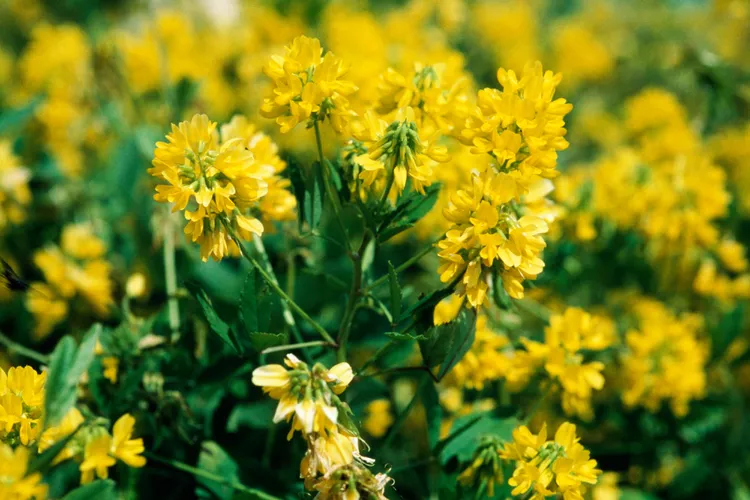
| Genus Name | Trigonella foenum-graecum |
| Common Name | Fenugreek |
| Plant Type | Annual, Herb |
| Light | Part Sun, Sun |
| Height | null to 2 Feet |
| Width | 3 to 6 Inches |
| Flower Color | Purple, White, Yellow |
| Foliage Color | Blue/Green |
| Propagation | Seed |
GARLIC CHIVES

| DESCRIPTION | Boasting culinary value in the kitchen and good looks in the landscape, garlic chives make a great garden perennial. Exceptionally hardy, garlic chives thrive in Zones 3 through 9. These plants form slow-expanding clumps of gray-green foliage that stand 1 to 2 feet tall. The leaves feature a mild garlic flavor that is perfect for dishes that need a flavor kick without the boldness of garlic. Harvest leaves anytime they are green. Garlic chives can also be grown inside during winter for culinary use in cold weather months. |
| GENUS NAME | Allium tuberosum |
| COMMON NAME | Garlic Chives |
| PLANT TYPE | Herb, Perennial |
| LIGHT | Sun |
| HEIGHT | 6 to 6 inches |
| WIDTH | null to 2 feet |
| FLOWER COLOR | White |
| SEASON FEATURES | Fall Bloom |
| SPECIAL FEATURES | Attracts Birds, Cut Flowers, Fragrance, Good for Containers, Low Maintenance |
| ZONES | 3, 4, 5, 6, 7, 8, 9 |
| PROPAGATION | Division, Seed |
| PROBLEM SOLVERS | Deer Resistant, Drought Tolerant |
LEMON BALM
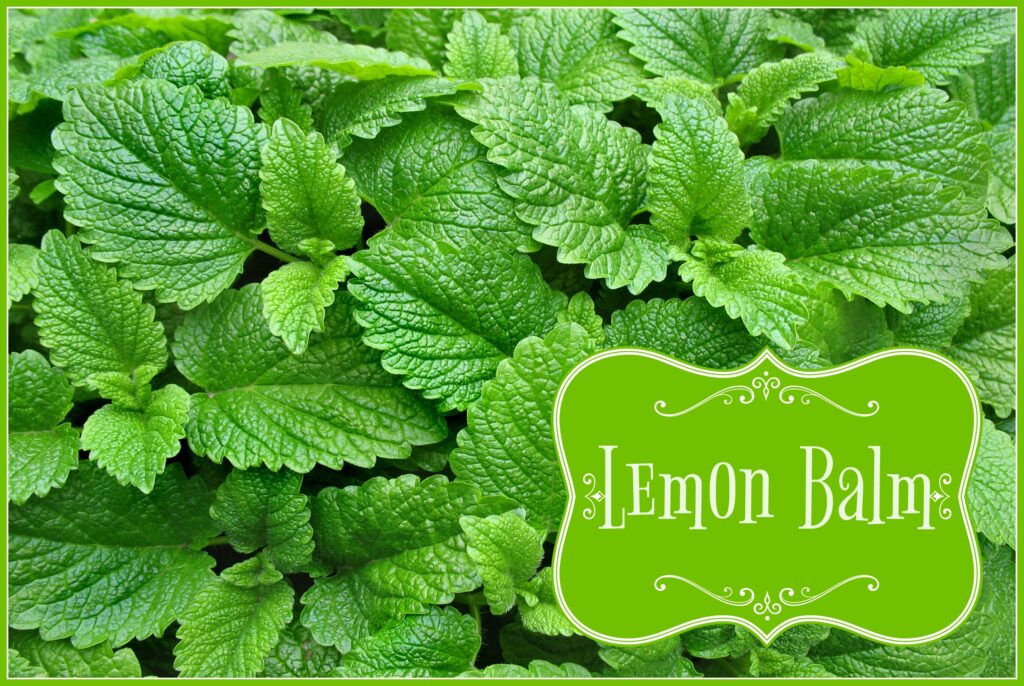
| Botanical name | Melissa officinalis |
| Common name | Lemon balm |
| Plant type | Herbaceous perennial |
| Mature size | 1.5–2 ft. tall, 1.5–3 ft. wide |
| Sun exposure | Full sun, partial shade |
| Soil type | Well-drained |
| Soil pH | Neutral to acidic |
| Bloom time | Summer |
| Flower color | White, pale yellow |
| Hardiness zones | 3–7 (USDA) |
| Native area | Europe |
LEMON GRASS
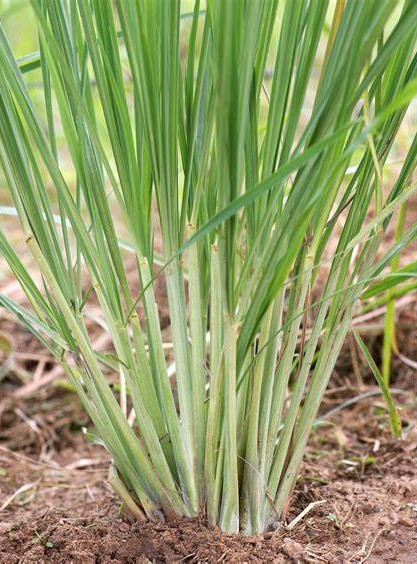
| GENUS NAME | Cymbopogon spp. |
| COMMON NAME | Lemongrass |
| PLANT TYPE | Herb, Perennial |
| LIGHT | Sun |
| HEIGHT | 2 to 4 feet |
| WIDTH | 2 to 3 feet |
| FOLIAGE COLOR | Blue/Green |
| SPECIAL FEATURES | Fragrance, Good for Containers, Low Maintenance |
| ZONES | 10, 11, 9 |
| PROPAGATION | Division, Seed, Stem Cuttings |
MARJORAM, WILD
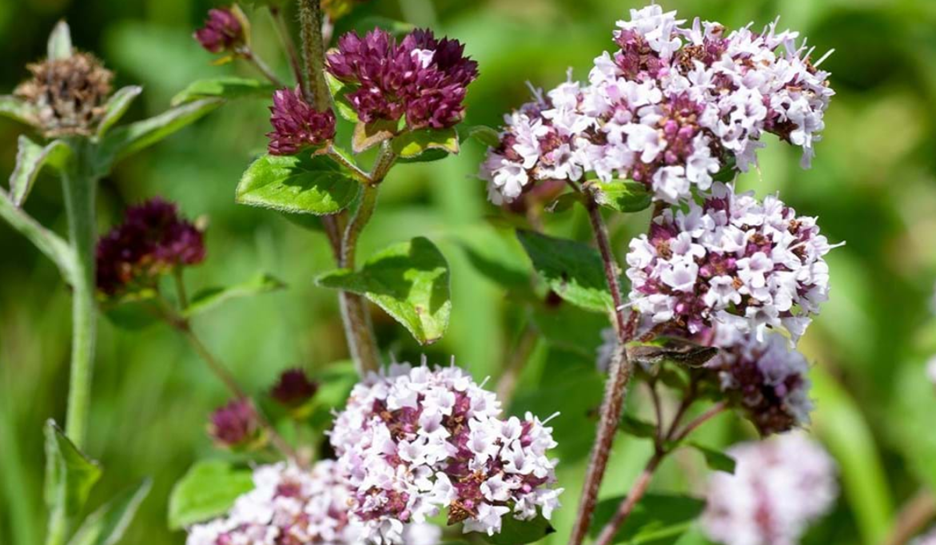
Leaves: it has aromatic leaves that are spade-shaped and wider at the base than the tip. They’re 10-40mm long and 5-25mm wide, arranged opposite to each other on stems. The edges of the leaves are smooth or very shallowly toothed and are covered in fine hairs.
Flowers: its tiny white to purplish-pink flowers are clustered on flowering stems, called inflorescences, from summer to early autumn. Each little flower has four stamens (male parts), though they’ll probably be too small to see without a hand lens.
Fruits: each fruit is made up of four single-seeded units, known as nutlets.
OREGANO
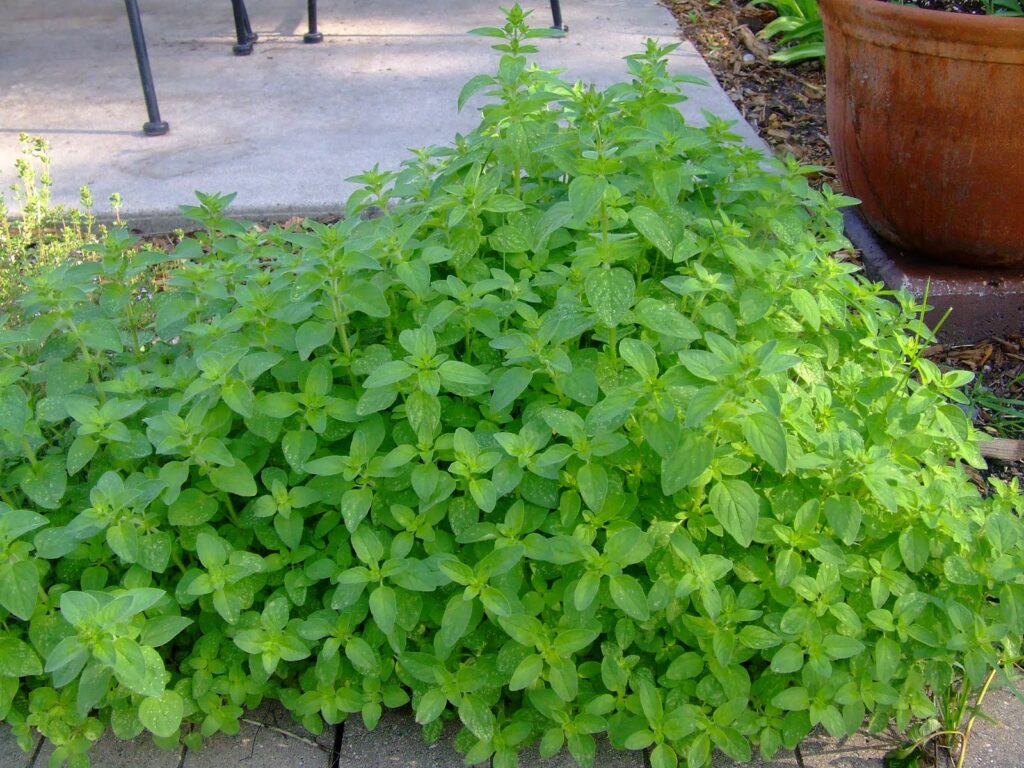
| Common Name | Oregano |
| Botanical Name | Origanum vulgare |
| Family | Lamiaceae |
| Plant Type | Perennial, herb |
| Size | 1–2 ft. tall, 1.5 ft. wide |
| Sun Exposure | Full sun |
| Soil Type | Well-drained |
| Soil pH | Acidic, neutral |
| Bloom Time | Summer |
| Hardiness Zones | 4–10 (USDA) |
| Native Area | Europe, Asia, Mediterranean |
PARLSEY, CURLY AND ITALIAN FLAT LEAF
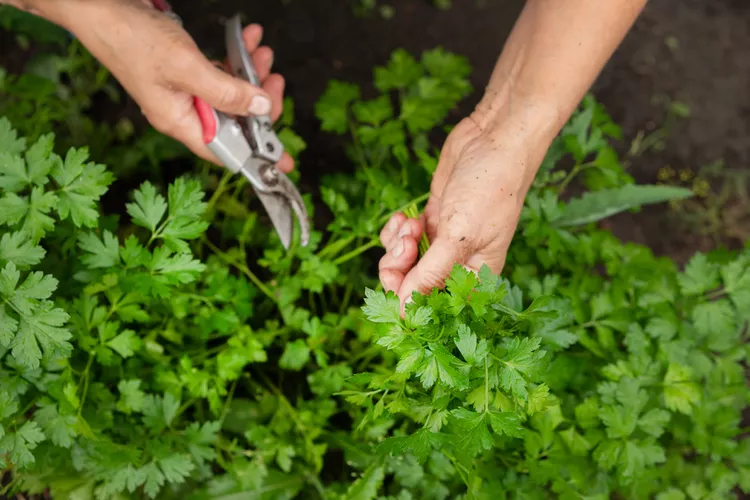
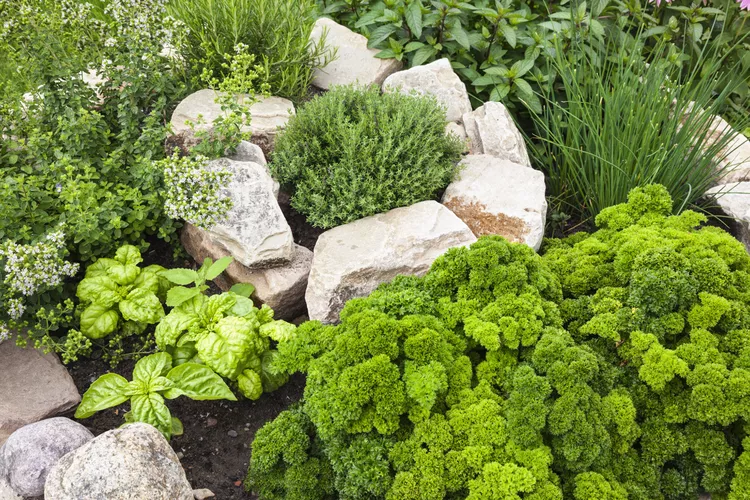
| Genus Name | Petroselinum |
| Common Name | Parsley |
| Plant Type | Annual, Herb |
| Light | Sun |
| Height | 6 to 12 inches |
| Width | 8 to 24 inches |
| Flower Color | White |
| Season Features | Summer Bloom |
| Special Features | Good for Containers |
| Propagation | Seed |
ROSEMARY

| Common Name | Rosemary |
| Botanical Name | Salvia rosmarinus |
| Family | Lamiaceae |
| Plant Type | Herb, perennial |
| Size | 2–6 ft. tall, 2–4 ft. wide |
| Sun Exposure | Full sun |
| Soil Type | Sandy, loamy, well-drained |
| Soil pH | Acidic, neutral |
| Bloom Time | Spring, summer |
| Hardiness Zones | 8–10 (USDA) |
| Native Area | Mediterranean |
SAGE, BROADLEAF
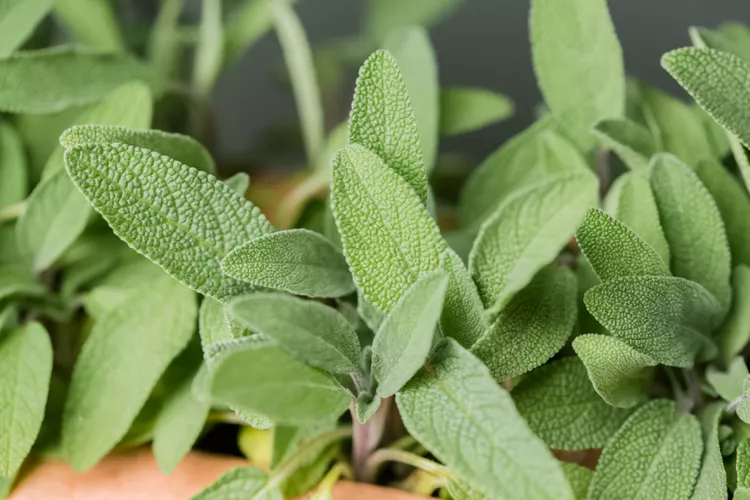
| Common Name | Sage, common sage, culinary sage, garden sage |
| Botanical Name | Salvia officinalis |
| Family | Lamiaceae |
| Plant Type | Herb, perennial |
| Size | 2–2.5 ft. tall, 2–3 ft. wide |
| Sun Exposure | Full sun |
| Soil Type | Loamy, sandy, well-drained |
| Soil pH | Acidic, neutral (6–7) |
| Bloom Time | Summer |
| Hardiness Zones | 4–10 (USDA) |
| Native Area | Mediterranean |
SPEARMINT
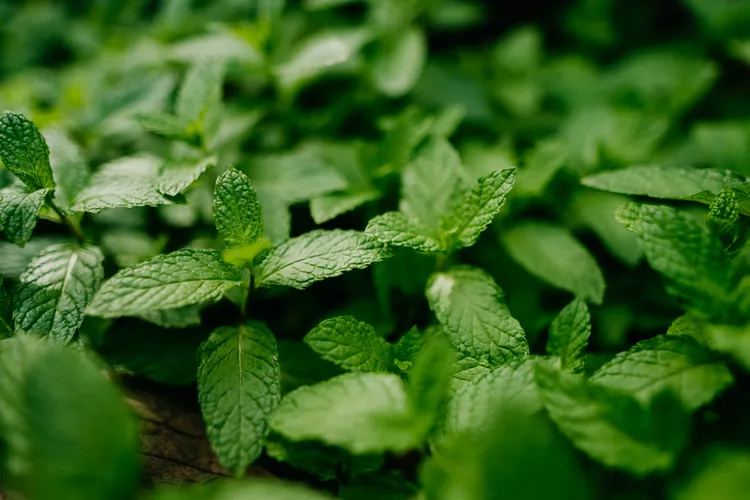
| Common Name | Mint |
| Botanical Name | Mentha spp. |
| Family | Lamiaceae |
| Plant Type | Perennial, Herb |
| Size | 12–18 in. tall, 18–24 in. wide |
| Sun Exposure | Full sun, Partial sun |
| Soil Type | Loamy, Moist, Well-drained |
| Soil pH | Acidic, Neutral |
| Bloom Time | Summer |
| Hardiness Zones | 3–11 (USDA) |
| Native Area | North America, Africa, Australia |
THYME
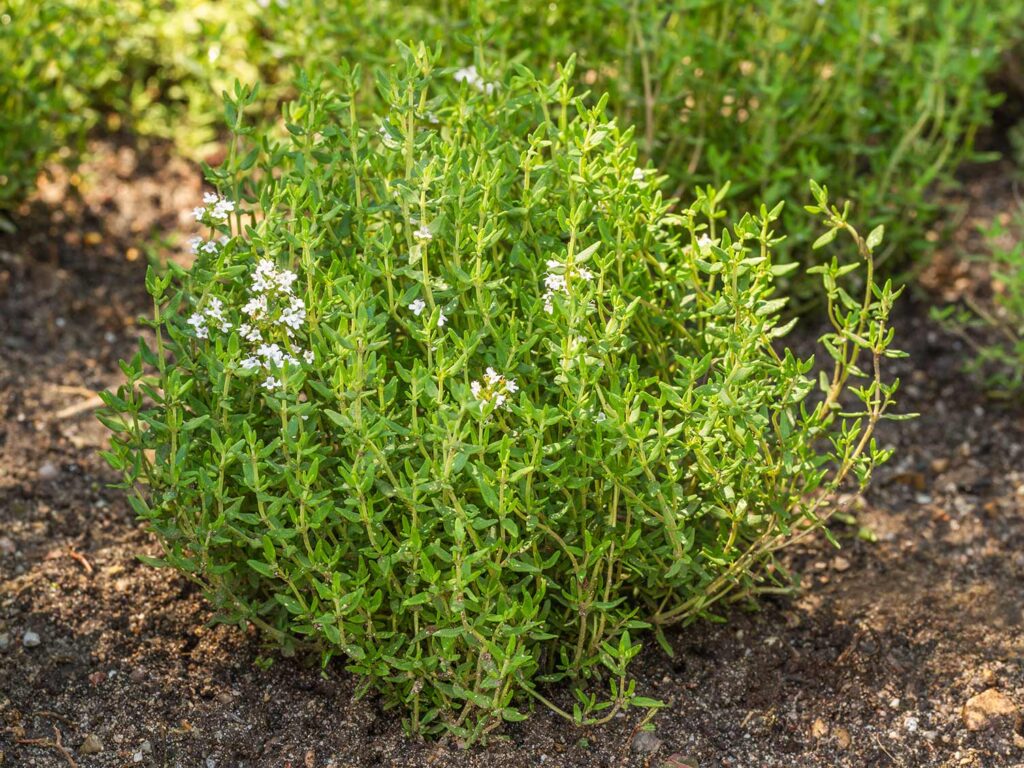
| Common Name | Thyme, Common Thyme, Garden Thyme, English Thyme |
| Botanical Name | Thymus vulgaris |
| Family | Lamiaceae |
| Plant Type | Herbaceous, perennial |
| Mature Size | 6-12 in. tall, 6-12-in. wide |
| Sun Exposure | Full |
| Soil Type | Loamy, sandy |
| Soil pH | Acidic, neutral, alkaline |
| Bloom Time | Spring, Summer |
| Flower Color | Pink, Purple, White |
| Hardiness Zones | 5–9 (USDA) |
| Native Area | Mediterranean |
THYME, Creeping
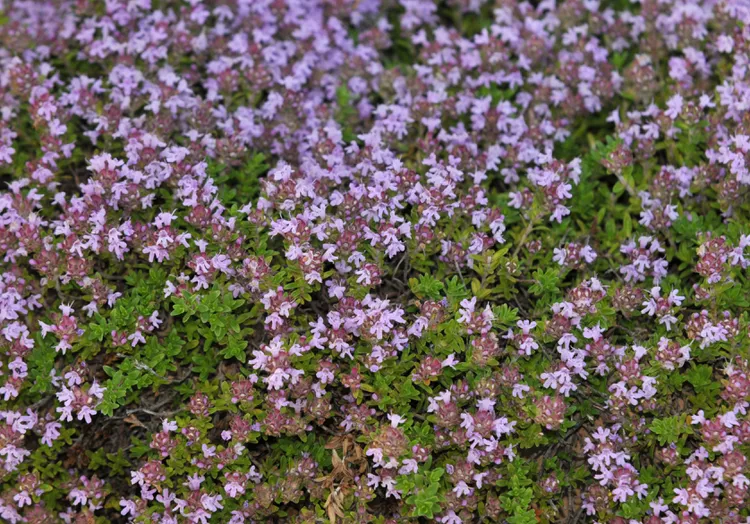
| Common Name | Creeping thyme |
| Botanical Name | Thymus spp. |
| Family | Lamiaceae |
| Plant Type | Herbaceous, perennial |
| Mature Size | 2-6 in. tall, 6-18 in. wide |
| Sun Exposure | Full |
| Soil Type | Well-drained, sandy |
| Soil pH | Neutral, alkaline |
| Bloom Time | Summer |
| Flower Color | Pink, white, purple |
| Hardiness Zones | 2–9 (USDA) |
| Native Area | Europe |
VEGETABLES
MELON, BANANA
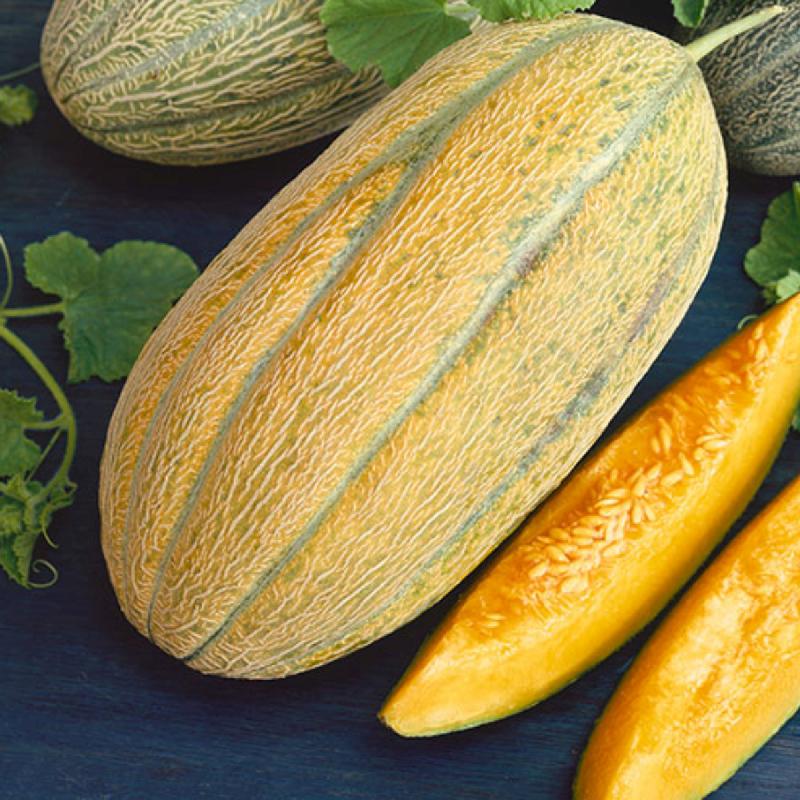
| Common Name | Cantaloupe, muskmelon |
| Botanical Name | Cucumis. melo var. reticulatus |
| Family | Cucurbitaceae |
| Plant Type | Fruit, annual |
| Size | 15–18 in. tall, 6 ft. wide |
| Sun Exposure | Full sun |
| Soil Type | Loamy, sandy, well-drained |
| Soil pH | Acidic, neutral |
| Bloom Time | Summer |
| Hardiness Zones | 5-11 (USDA) |
| Native Area | Asia, Africa |
EGGPLANT, BLACK BEAUTY
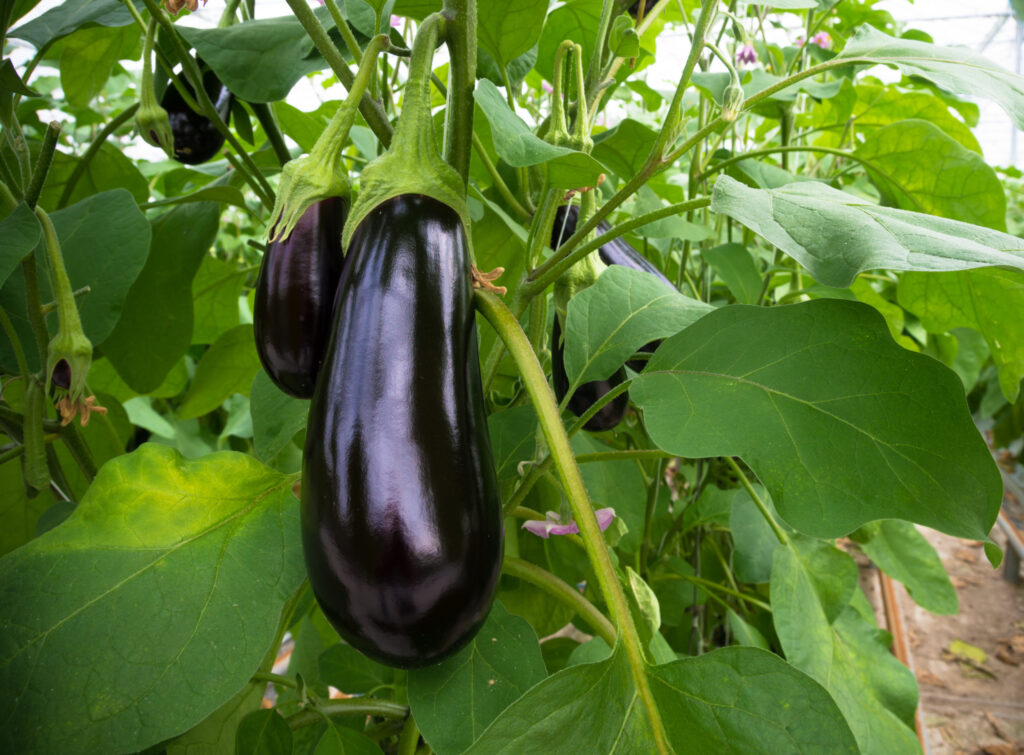
| Common Name | Eggplant |
| Botanical Name | Solanum melongena |
| Family | Solanaceae |
| Plant Type | Perennial, vegetable |
| Size | 2–4 ft. tall, 1–3 ft. wide |
| Sun Exposure | Full sun |
| Soil Type | Loamy, well-drained |
| Soil pH | Acidic, neutral, alkaline (5.5 to 7.5) |
| Bloom Time | Summer |
| Hardiness Zones | 9b–12a (USDA) |
| Native Area | Asia |
LUFFA GOURD

| Common Name | Luffa, loofah, loofa, sponge gourd, gourd luffa, luffa sponge, smooth luffa, dishrag gourd, Egyptian luffa |
| Botanical Name | Luffa aegyptiaca, Luffa cylindrica |
| Family | Cucurbitaceae |
| Plant Type | Annual, vegetable |
| Size | 2-3 ft. tall, 8-12 ft. wide |
| Sun Exposure | Full |
| Soil Type | Well-drained |
| Soil pH | Acidic |
| Hardiness Zones | 7-13 (USDA) |
| Native Area | Asia |
MELON, KAJARI
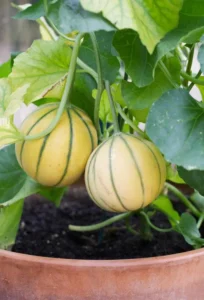
Easy to grow, early and so productive. The flavor is world class. The perfect variety for most gardens, the best overall melon we carry! This amazing classic Indian melon was collected by Joseph Simcox. The fruit is a brilliant copper red and is striped in green and cream, making this an extremely unusual and beautiful melon. The pale green flesh is sweet, aromatic and slightly musky in taste. Joe believes that this melon originated in the Punjab, and he spent more than 8 years trying to find seeds of this extremely interesting variety. Vine produces lots of 2-lb fruit. Customer favorite!
OKRA, CLEMSON SPINELESS
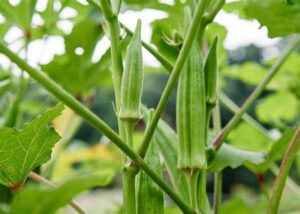
| Common name | Okra, gumbo, lady’s finger |
| Botanical Name | Abelmoschus esculentus |
| Family | Malvaceae |
| Plant Type | Annual, vegetable |
| Mature Size | 6-8 ft. tall, 3 ft. wide |
| Sun Exposure | Full sun |
| Soil Type | Moist but well-drained |
| Soil pH | Acidic |
| Bloom Time | Summer |
| Hardiness Zones | 2–11 (USDA) |
| Native Area | Africa, Asia |
PEPPER, BANANA

- Name: Banana pepper (Capiscum annuum)
- USDA Hardiness Zones: 9-11
- Light: Full sun
- Soil Needs: Rich, loamy, well-drained soil
- Days to Maturity: 60-80 from transplant
- Scoville Heat Units: 0-500
PEPPER, CALIFORNIA WONDER BELL
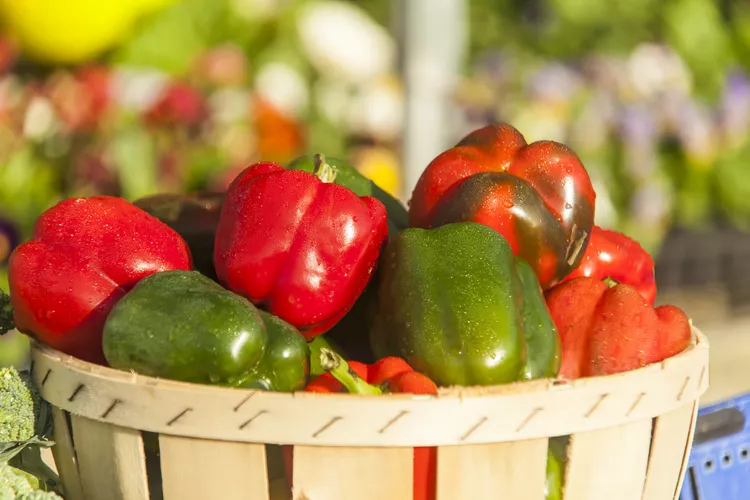
| Common Name | Bell Pepper, Sweet Pepper |
| Botanical Name | Capsicum annuum |
| Family | Solanaceae |
| Plant Type | Fruit, annual |
| Size | 18 in. to 3 feet tall |
| Sun Exposure | Full sun |
| Soil Type | Fertile loam |
| Soil pH | Neutral 6.5-7 |
| Bloom Time | Summer |
| Hardiness Zones | 9-11 (USDA) |
| Native Area | Mexico, Central and South America |
PEPPER, JALAPENO MILD

| Common Name | Jalapeño |
| Botanical Name | Capiscum annuum ‘Jalapeño’ |
| Family | Solanaceae |
| Plant Type | Perennial (commonly grown as annual), vegetable |
| Size | 1–3.5 ft. tall, 0.5–1 ft. wide |
| Sun Exposure | Full sun |
| Soil Type | Loamy, moist, well-drained |
| Soil pH | Acidic to neutral (5.8 to 6.8) |
| Bloom Time | Summer |
| Hardiness Zones | 11 (USDA) |
| Native Area | Central America, South America |
PUMPKIN, FLAT WHITE

| Common Name | Pumpkin |
| Botanical Name | Cucurbita spp. |
| Family | Cucurbitaceae |
| Plant Type | Annual, fruit |
| Size | 9-18 in. tall, 20-30 ft. long, 10-15 ft. spread |
| Sun Exposure | Full sun |
| Soil Type | Moist, loamy |
| Soil pH | Acidic |
| Bloom Time | Summer |
| Hardiness Zones | 3-9 (USDA) |
| Native Area | North America |
SPINACH, BABY LEAF
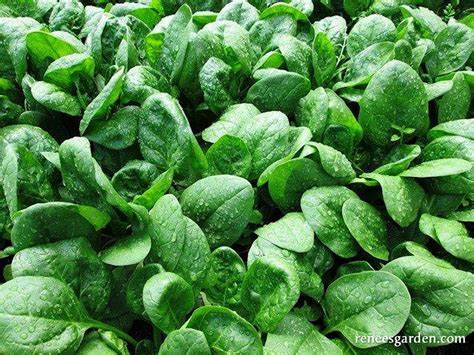
| Common Name | Spinach |
| Botanical Name | Spinacia oleracea |
| Family | Amaranthaceae |
| Plant Type | Annual, vegetable |
| Size | 6–12 in. tall and wide |
| Sun Exposure | Full sun, partial sun |
| Soil Type | Loamy, moist, well-drained |
| Soil pH | Neutral, alkaline |
| Bloom Time | Summer |
| Hardiness Zones | 2–11 (USDA) |
| Native Area | North America, Central America, South America, Asia |
SQUASH, CROOKNECK

| Genus Name | Cucurbita pepo |
| Common Name | Summer Squash |
| Plant Type | Annual, Vegetable |
| Light | Sun |
| Height | 1 to 3 feet |
| Width | 3 to 10 feet |
| Propagation | Seed |
TOMATOES, ROMA
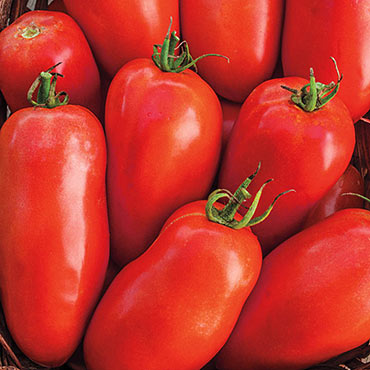
| Common Name: | Roma tomato, paste tomato |
| Botanical Name: | Solanum lycopersicum |
| Family: | Solanaceae |
| Plant Type: | Annual, vegetable |
| Size: | 3-5 ft. tall, 2-4 ft. spread |
| Sun Exposure: | Full |
| Soil Type: | Loamy, well-drained |
| Soil pH: | Acidic |
| Hardiness Zones: | 3-11 (USDA) |
| Native Area: | South America |
| Toxicity: | Toxic to humans1, toxic to pets2 (non-fruit parts) |
TOMATOES: Bodacious Hybrid, Super Beafsteak, Super Sweet 100
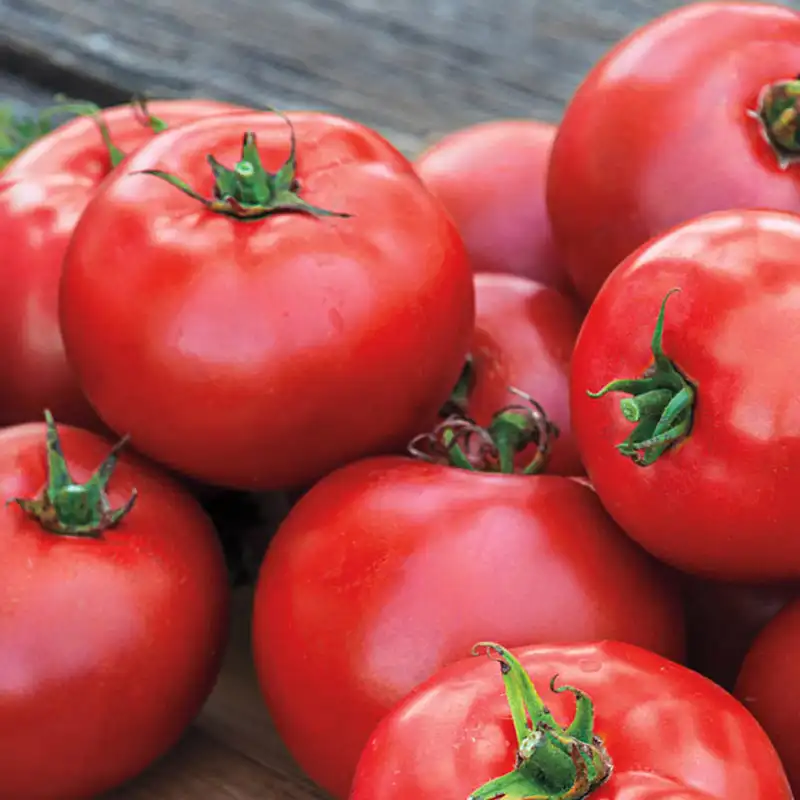
| Common Name: | Various |
| Botanical Name: | Solanum lycopersicum |
| Family: | Solanaceae |
| Plant Type: | Annual, vegetable |
| Size: | |
| Sun Exposure: | Full |
| Soil Type: | Loamy, well-drained |
| Soil pH: | Acidic |
| Hardiness Zones: | 3-11 (USDA) |
| Native Area: | South America |
| Toxicity: | Toxic to humans1, toxic to pets2 (non-fruit parts) |
ZUCCHINI
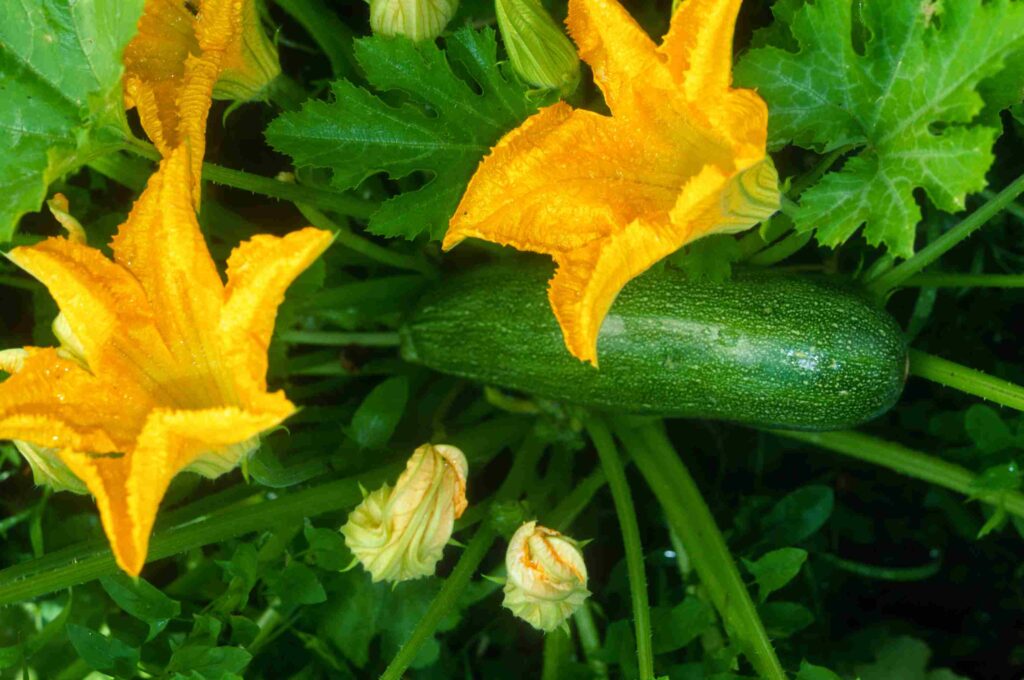
| Genus Name | Cucurbita pepo |
| Common Name | Summer Squash |
| Plant Type | Annual, Vegetable |
| Light | Sun |
| Height | 1 to 3 feet |
| Width | 3 to 10 feet |
| Propagation | Seed |
BULBS
DAFFODIL BULBS
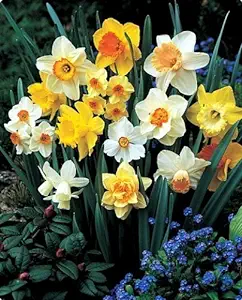

| Common Name | Daffodil, narcissus |
| Botanical Name | Narcissus spp. |
| Family | Amaryllidaceae |
| Plant Type | Bulb, perennial |
| Mature Size | 6–30 in. tall, 6–12 in. wide |
| Sun Exposure | Full, partial |
| Soil Type | Rich, moist but well-drained |
| Soil pH | Neutral, acidic |
| Bloom Time | Late Winter, Spring |
| Flower Color | Yellow, white, orange, pink |
| Hardiness Zones | 4–8 (USDA) |
| Native Area | Europe, North Africa |
DAYLILIES
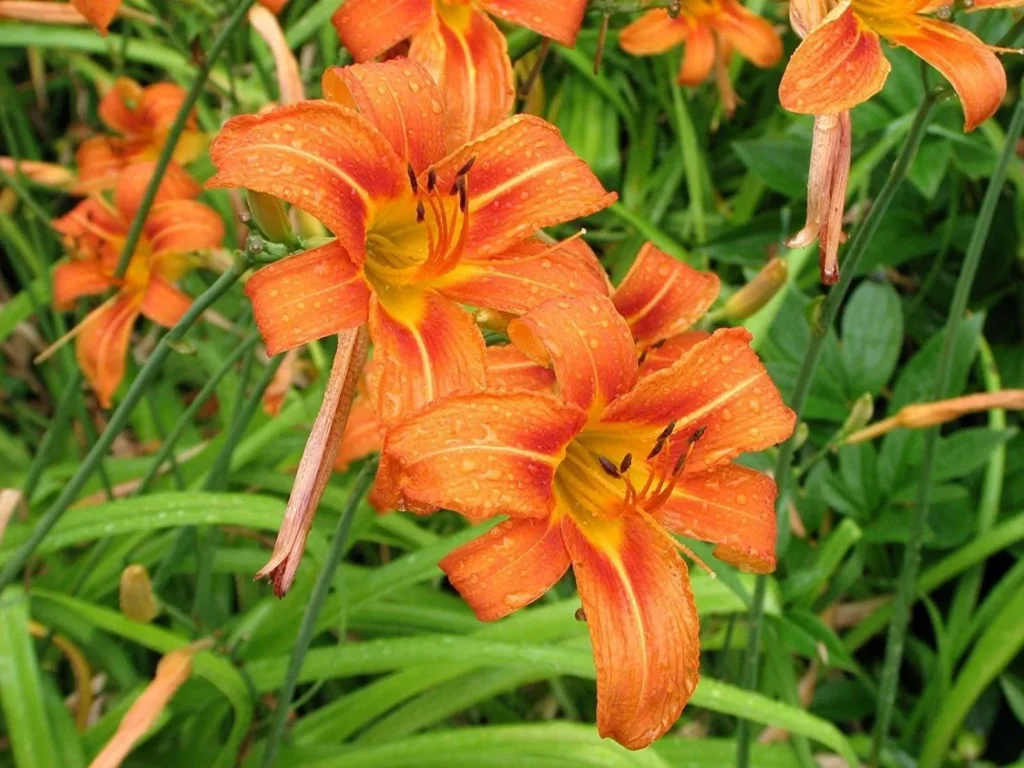
| Common Name | Orange daylily, common daylily, tawny daylily |
| Botanical Name | Hemerocallis fulva |
| Family | Asphodelaceae |
| Plant Type | Perennial |
| Mature Size | 2–2.5 ft. tall, 2–2.5 ft. wide |
| Sun Exposure | Full |
| Soil Type | Moist, well-drained |
| Soil pH | Acidic, neutral |
| Bloom Time | Summer |
| Flower Color | Orange |
| Hardiness Zones | 3–9 (USDA) |
| Native Area | Asia |
SPIDER LILIES
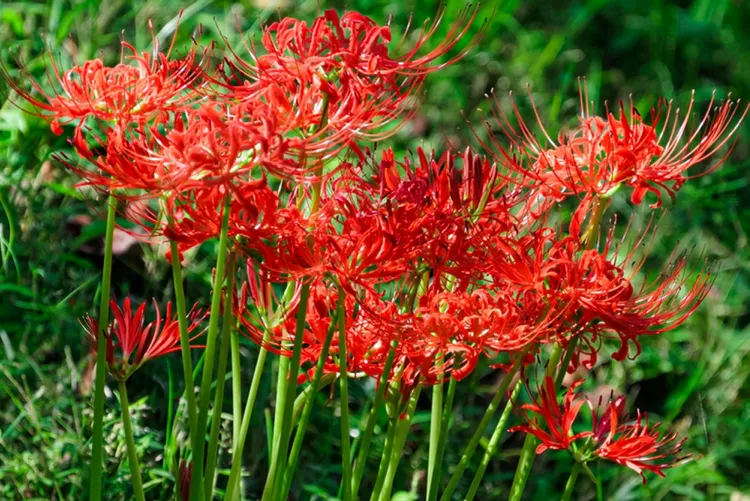
| Common Name | Spider lily, hurricane lily, cluster amaryllis, naked lily, surprise lily |
| Botanical Name | Lycoris spp. |
| Family | Amaryllidaceae |
| Plant Type | Perennial, bulb |
| Mature Size | 1–2 ft. tall, 1–1.5 ft. wide |
| Sun Exposure | Full, partial |
| Soil Type | Well-drained |
| Soil pH | Acidic, neutral, alkaline |
| Bloom Time | Summer, fall |
| Flower Color | Red, orange, pink, white, yellow |
| Hardiness Zones | 6–10 (USDA) |
| Native Area | Asia |
TIGER LILLY

| Common Name | Orange daylily, common daylily, tawny daylily |
| Botanical Name | Hemerocallis fulva |
| Family | Asphodelaceae |
| Plant Type | Perennial |
| Mature Size | 2–2.5 ft. tall, 2–2.5 ft. wide |
| Sun Exposure | Full |
| Soil Type | Moist, well-drained |
| Soil pH | Acidic, neutral |
| Bloom Time | Summer |
| Flower Color | Orange |
| Hardiness Zones | 3–9 (USDA) |
| Native Area | Asia |
| Toxicity | Toxic to cats2 |
SUCCULENTS & TROPICALS & HOUSEPLANTS
AIRPLANE PLANT/SPIDER PLANT
Variegated and Standard

| Common Names | Spider plant, spider ivy, ribbon plant |
| Botanical Name | Chlorophytum comosum |
| Family | Asparagaceae |
| Plant Type | Herbaceous, perennial |
| Mature Size | 1–2 ft. tall and wide |
| Sun Exposure | Partial, shade |
| Soil Type | Loamy, well-drained |
| Soil pH | Neutral |
| Bloom Time | Flowers regularly |
| Flower Color | White |
| Hardiness Zones | 9–11 (USDA) |
| Native Area | Central and Southern Africa |
ALOE VERA
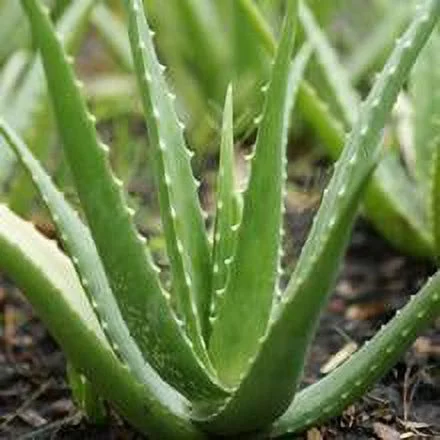
| Common Name | Aloe vera |
| Botanical Name | Aloe barbadensis miller |
| Family | Asphodelaceae |
| Plant Type | Succulent, herb, perennial |
| Mature Size | 12-36 in. tall, 6-12 in. wide |
| Sun Exposure | Full, partial |
| Soil Type | Sandy |
| Soil pH | Acidic |
| Bloom Time | Summer |
| Flower Color | Yellow, red, orange |
| Hardiness Zones | 10-12 (USDA) |
| Native Area | Africa |
BEGONIA, ANGEL WING
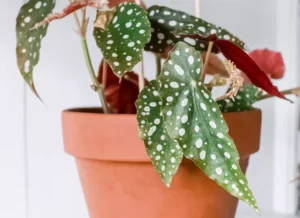
| Botanical Name | Begonia x corallina |
| Common Name | Angel wing begonia |
| Plant Type | Perennial shrub |
| Mature Size | 12-30 in. tall, 12-24 in. wide |
| Sun Exposure | Partial shade |
| Soil Type | Moist but well-drained |
| Soil pH | Neutral to acidic |
| Bloom Time | Summer, early fall |
| Flower Color | Pink, red, white, orange |
| Hardiness Zone | 10-11 (USDA) |
| Native Area | South America |
| Toxicity | Toxic to dogs and cats |
BOTTLE CACTUS, Hatiora salicornioides
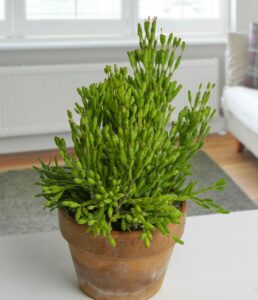
BURRO TAIL, DONKEY TAIL SEDUM
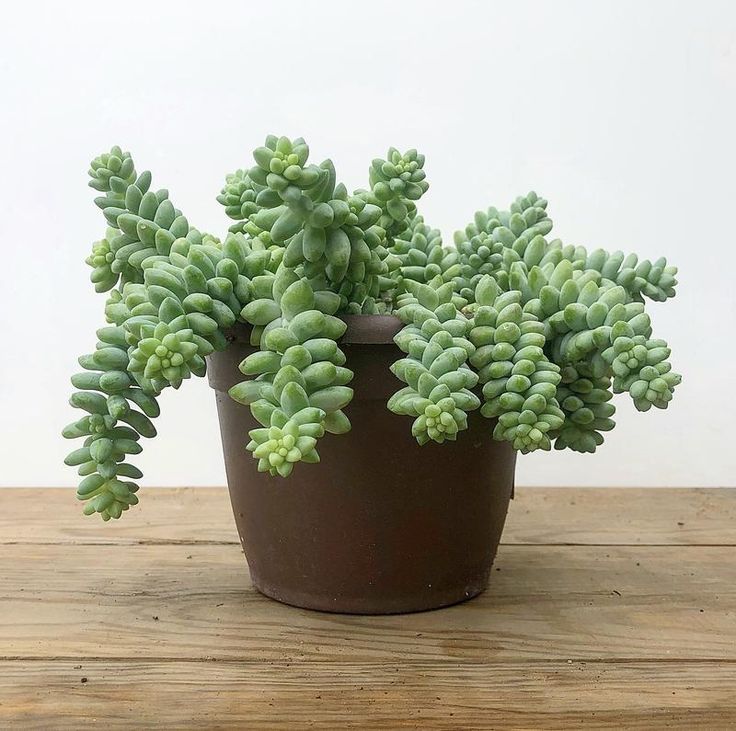
| Common Name | Donkey’s tail, donkey tail, burro’s tail, lamb’s tail |
| Botanical Name | Sedum morganianum |
| Family | Crassulaceae |
| Plant Type | Perennial, succulent |
| Mature Size | 1–4 ft. long, 1–2 ft. wide |
| Sun Exposure | Full, partial |
| Soil Type | Loamy, sandy |
| Soil pH | Neutral, alkaline 3 |
| Bloom Time | Summer |
| Flower Color | Red, white, yellow |
| Hardiness Zones | 10–11 (USDA) |
| Native Area | North America, Central America |
CHINESE EVERGREEN, ALGLAONEMA

| Common Name | Chinese evergreen, Philippine evergreen, Poison Dart Plant |
| Botanical Name | Aglaonema modesto |
| Family | Araceae |
| Plant Type | Herbaceous, perennial |
| Mature Size | 1–3 ft. tall, 1–3 ft. wide |
| Sun Exposure | Partial, full |
| Soil Type | Well-drained |
| Soil pH | Acidic |
| Bloom Time | Spring, summer |
| Flower Color | White |
| Hardiness Zones | 10–12 (USDA) |
| Native Area | Asia |
CHINESE EVERGREEN, ALGLAONEMA
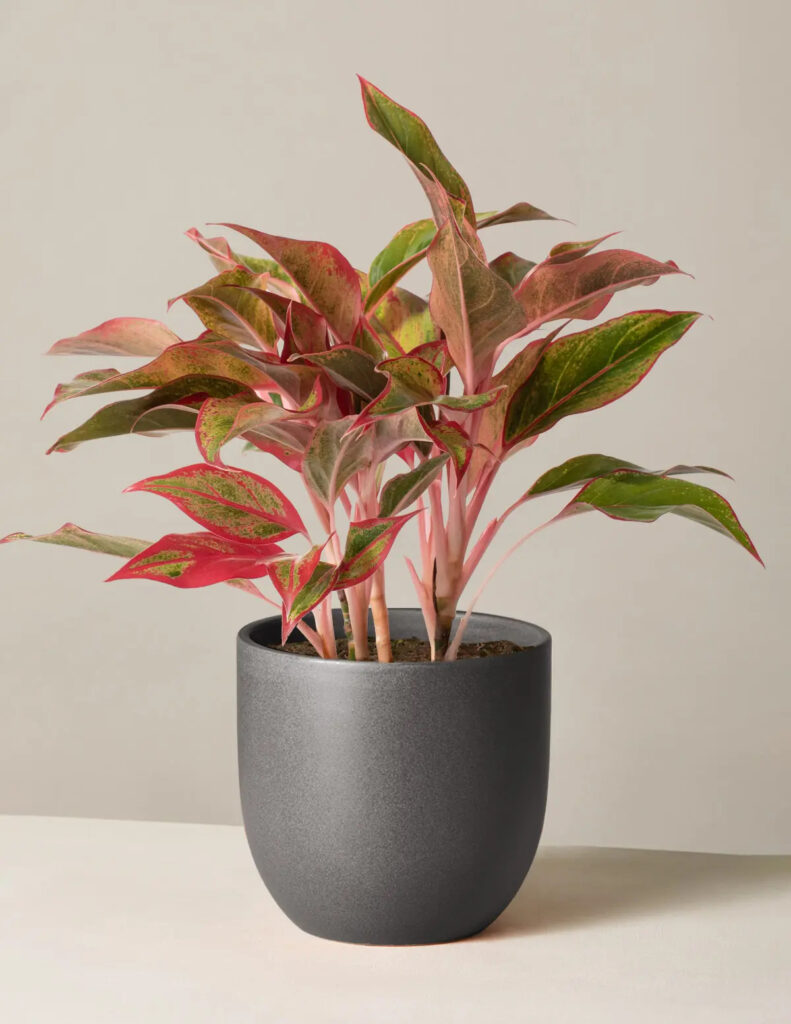
| Common Name | Chinese evergreen, Philippine evergreen, Poison Dart Plant |
| Botanical Name | Aglaonema commutatum |
| Family | Araceae |
| Plant Type | Herbaceous, perennial |
| Mature Size | 1–3 ft. tall, 1–3 ft. wide |
| Sun Exposure | Partial, full |
| Soil Type | Well-drained |
| Soil pH | Acidic |
| Bloom Time | Spring, summer |
| Flower Color | White |
| Hardiness Zones | 10–12 (USDA) |
| Native Area | Asia |
FLAMINGO FLOWER
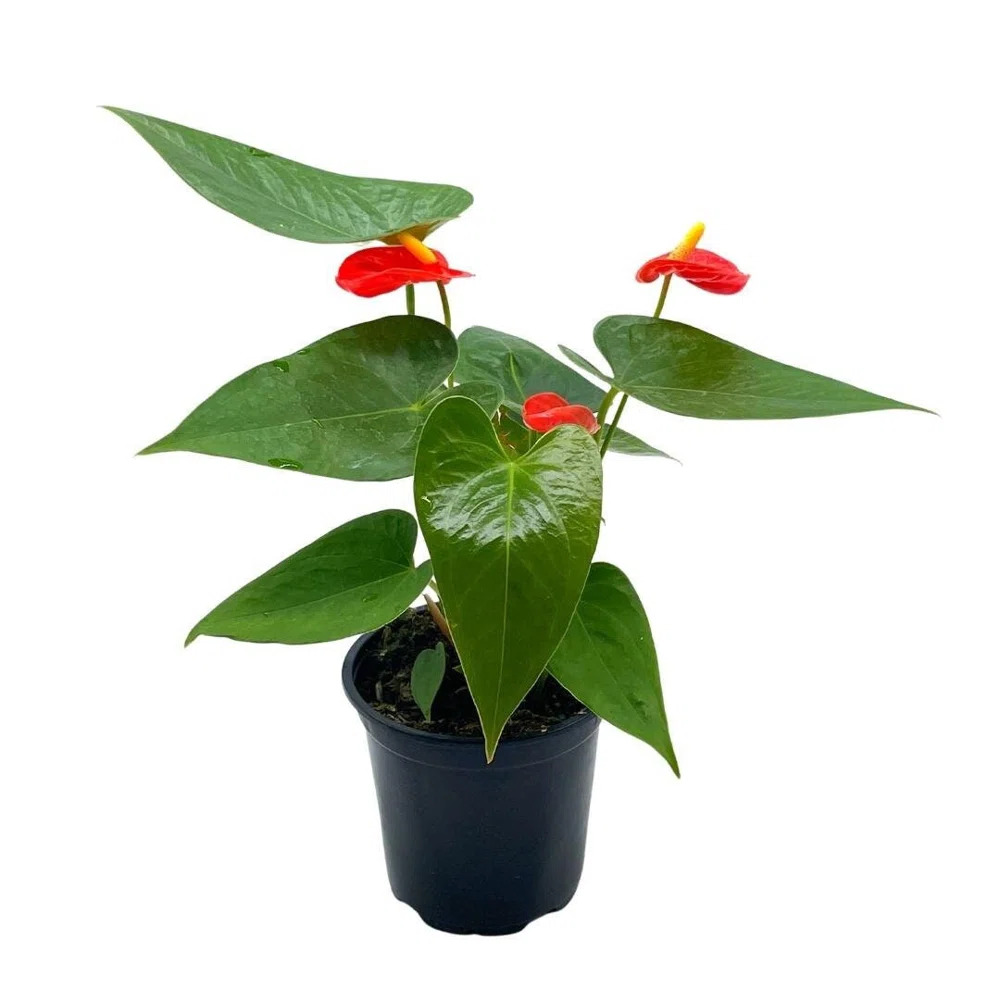
| Common Names | Anthurium, tailflower, flamingo flower, laceleaf |
| Botanical Name | Anthurium spp. |
| Family | Araceae |
| Plant Type | Herbaceous, perennial |
| Mature Size | 12-18 in. tall, 9- to 12-inch wide |
| Sun Exposure | Partial |
| Soil Type | Well-drained |
| Soil pH | Acidic |
| Bloom Time | Spring, summer, fall, winter |
| Flower Color | Red, pink, white |
| Hardiness Zones | 11-12 (USDA) |
| Native Area | Central America, South America, Caribbean |
GHOST PLANT SUCCULENT
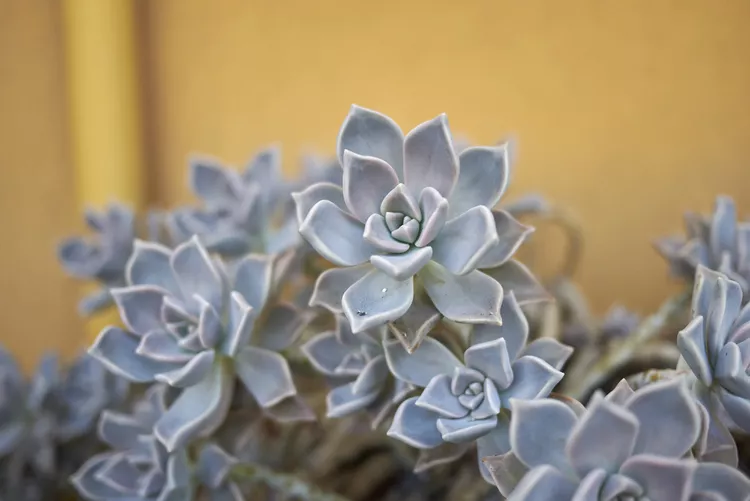
| Common Name | Ghost plant, mother-of-pearl plant |
| Botanical Name | Graptopetalum paraguayense |
| Family | Crassulaceae |
| Plant Type | Perennial, succulent |
| Mature Size | 6-12 in. tall, 2-3 ft. wide |
| Sun Exposure | Full, partial |
| Soil Type | Sandy |
| Soil pH | Acidic, neutral |
| Bloom Time | Spring |
| Flower Color | White, yellow, pink, orange |
| Hardiness Zones | 9-11 (USDA) |
| Native Area | North America |
HEN AND CHICKS
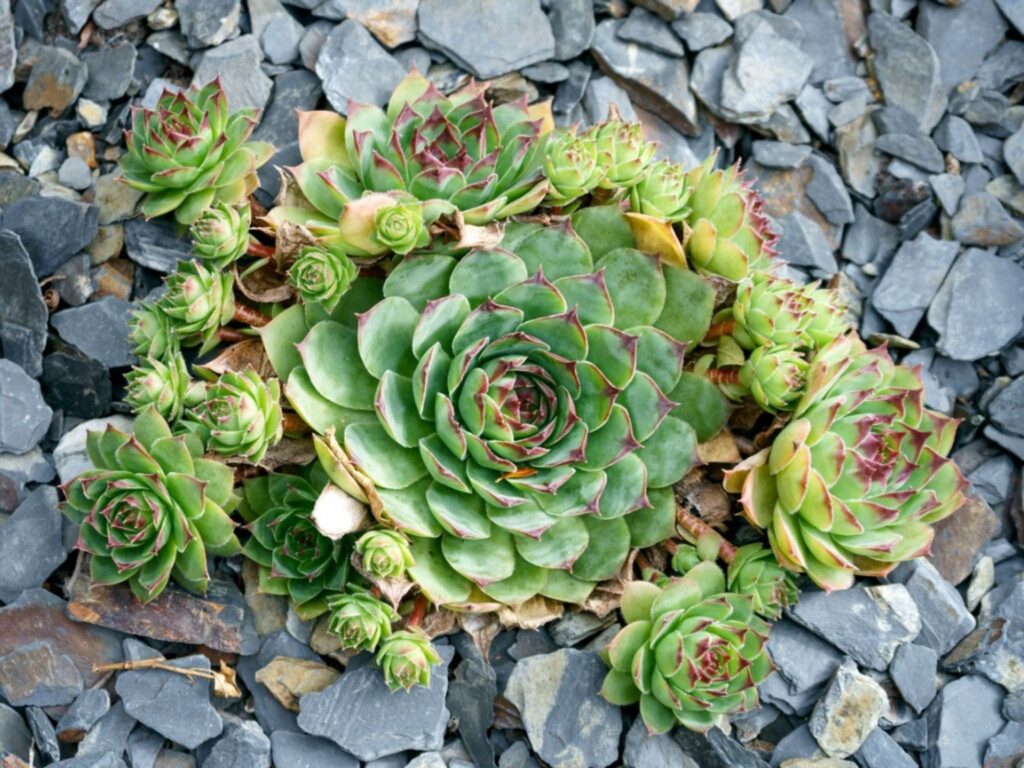
| Common Name | Hens and chicks, hen and chicks, house leek |
| Botanical Name | Sempervivum tectorum |
| Family | Crassulaceae |
| Plant Type | Succulent, evergreen perennial |
| Mature Size | 6–12 in. tall, 6–18 in. wide |
| Sun Exposure | Full |
| Soil Type | Sandy, well-drained |
| Soil pH | Neutral |
| Bloom Time | Summer |
| Flower Color | Light pink, reddish-purple |
| Hardiness Zones | 3–11 (USDA) |
| Native Area | Europe, Africa |
IVY, ALGERIAN
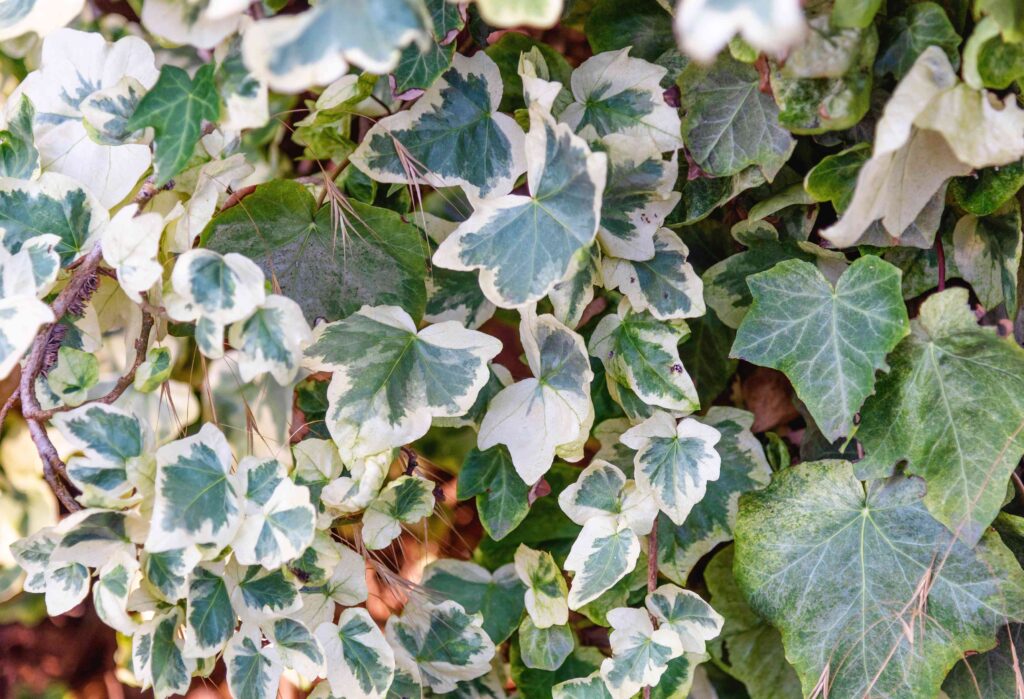
Best grown in pots or controlled settings. Can climb up to 80 feet.
| Common Name | Algerian Ivy, Canary Island ivy, Canary ivy, or Madeira ivy |
| Botanical Name | Hedera algeriensis or Hedera canariensis |
| Family | Araliaceae |
| Plant Type | Perennial, evergreen climbing vine |
| Mature Size | N/A; climbs and spreads as much as possible |
| Sun Exposure | Part shade to full shade |
| Soil Type | Fertile and moist |
| Soil pH | Neutral to slightly alkaline |
| Bloom Time | Fall |
| Flower Color | Greenish-white, greenish-yellow |
| Hardiness Zones | 4-13 (USDA) |
| Native Area | Europe, Scandinavia, Russia |
| Toxicity | Toxic to people and pets |
IVY, INGRID LIZ

| Scientific Name | Hedera helix |
| Common Name | Ingrid Liz Ivy |
| Plant Type | Evergreen vine |
| Family | Araliaceae |
| Native Range | Europe, western Asia, and northern Africa |
| Height | Can grow up to 10 feet long |
| Foliage | Deep green leaves with splashes of white or yellow |
| Flowering | Small, greenish-yellow blooms |
JADE PLANT

| Common Name | Jade plant |
| Botanical Name | Crassula ovata |
| Family | Crassulaceae |
| Plant Type | Succulent, perennial |
| Mature Size | 3–6 ft. tall, 2–3 ft. wide |
| Sun Exposure | Full sun |
| Soil Type | Well-drained |
| Soil pH | Neutral, acidic |
| Bloom Time | Spring |
| Flower Color | White |
| Hardiness Zones | 11–12 (USDA) |
| Native Area | Africa |
JASMINE, WHITE
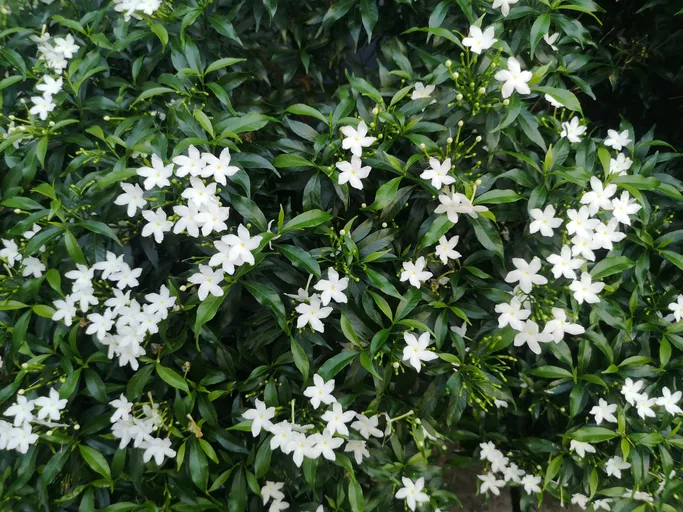
| Common Name | Jasmine, jessamine |
| Botanical Name | Jasminum |
| Family | Oleaceae |
| Plant Type | Perennial, vine, shrub |
| Mature Size | Vines up to 20 ft., shrubs 2 ft. tall and 5 ft. wide |
| Sun Exposure | Full sun, partial shade |
| Soil Type | Rich, loam, well-draining |
| Soil pH | Neutral |
| Bloom Time | Spring |
| Flower Color | Gold, yellow, white, pink |
| Hardiness Zones | 7-10 (USDA) |
| Native Area | Africa, Asia, Australia |
MOTHER OF MILLIONS
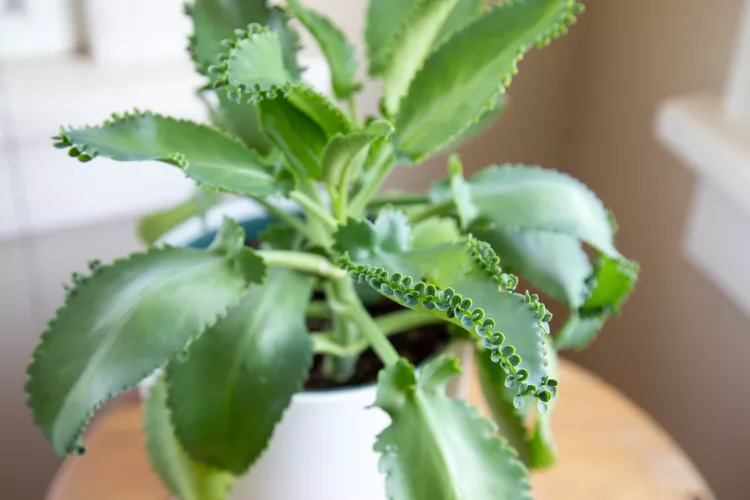
| Common Name | Mother of thousands, mother of millions, devil’s backbone |
| Botanical Name | Kalanchoe spp. |
| Family | Crassulaceae |
| Plant Type | Succulent |
| Mature Size | 3 ft. tall, 3 ft. wide |
| Sun Exposure | Full, partial |
| Soil Type | Well-drained |
| Soil pH | Acid, neutral, alkaline |
| Flower Color | Many |
| Hardiness Zones | 10-12 (USDA) |
| Native Area | Africa, Asia |
NERVE PLANT
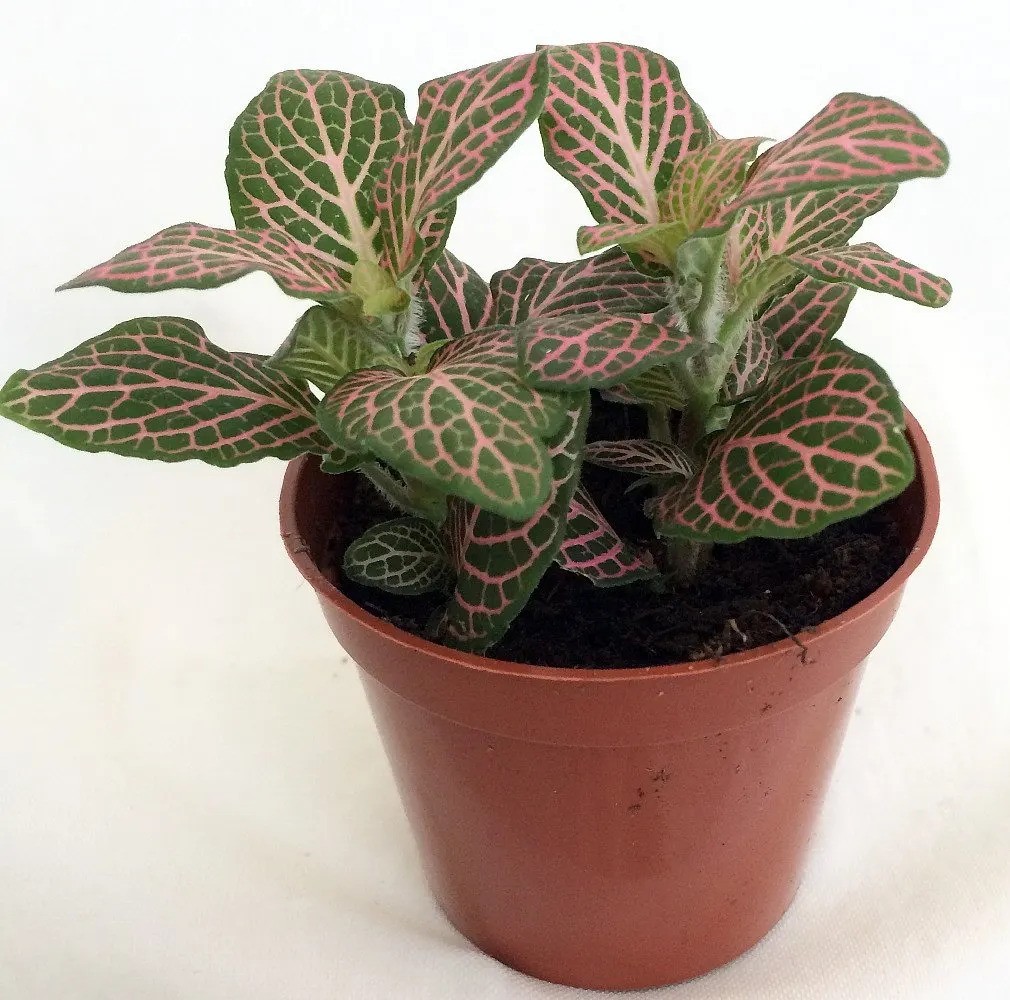
| Common Names | Nerve plant, mosaic plant, fittonia, painted net leaf |
| Botanical Name | Fittonia albivenis |
| Family | Acanthaceae |
| Plant Type | Perennial |
| Mature Size | 3–6 in. tall, 12-18 in. spread |
| Sun Exposure | Partial |
| Soil Type | Moist but well-drained |
| Soil pH | Acidic |
| Bloom Time | Summer |
| Flower Color | White, red |
| Hardiness Zones | 11 (USDA) |
| Native Area | South America |
PHILODENDRUM, HEARTLEAF
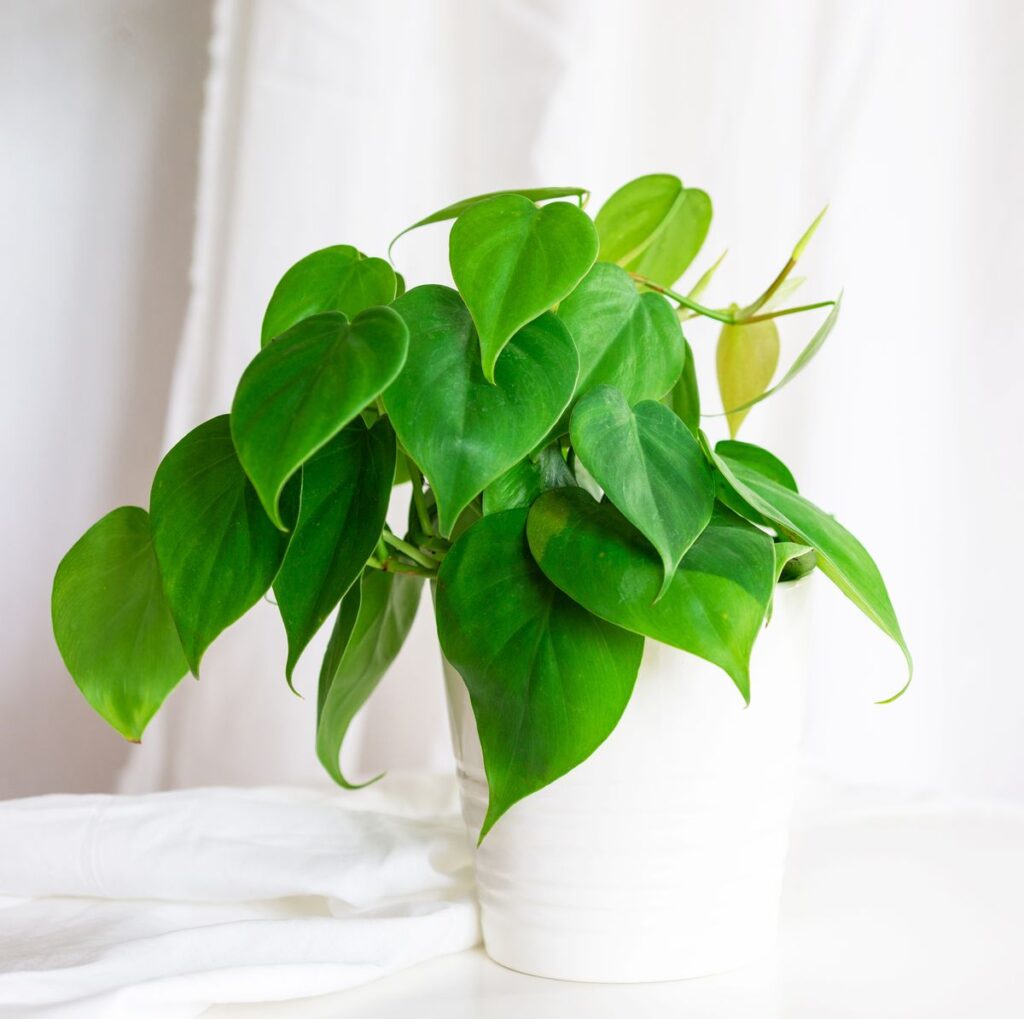
| Common Name | Pothos, Golden Pothos, Devil’s Vine, Devil’s Ivy |
| Botanical Name | Epipremnum aureum |
| Family | Araceae |
| Plant Type | Vine |
| Mature Size | 20–40 ft. long, 3–6 ft. wide |
| Sun Exposure | Full sun, partial shade |
| Soil Type | Moist but well-drained |
| Soil pH | Neutral to slightly acidic |
| Bloom Time | Rarely flowers |
| Flower Color | Gold/Yellow, Purple/Lavender |
| Hardiness Zones | 10–12 (USDA) |
| Native Areas | Asia |
PILEA, DARK MYSTERY
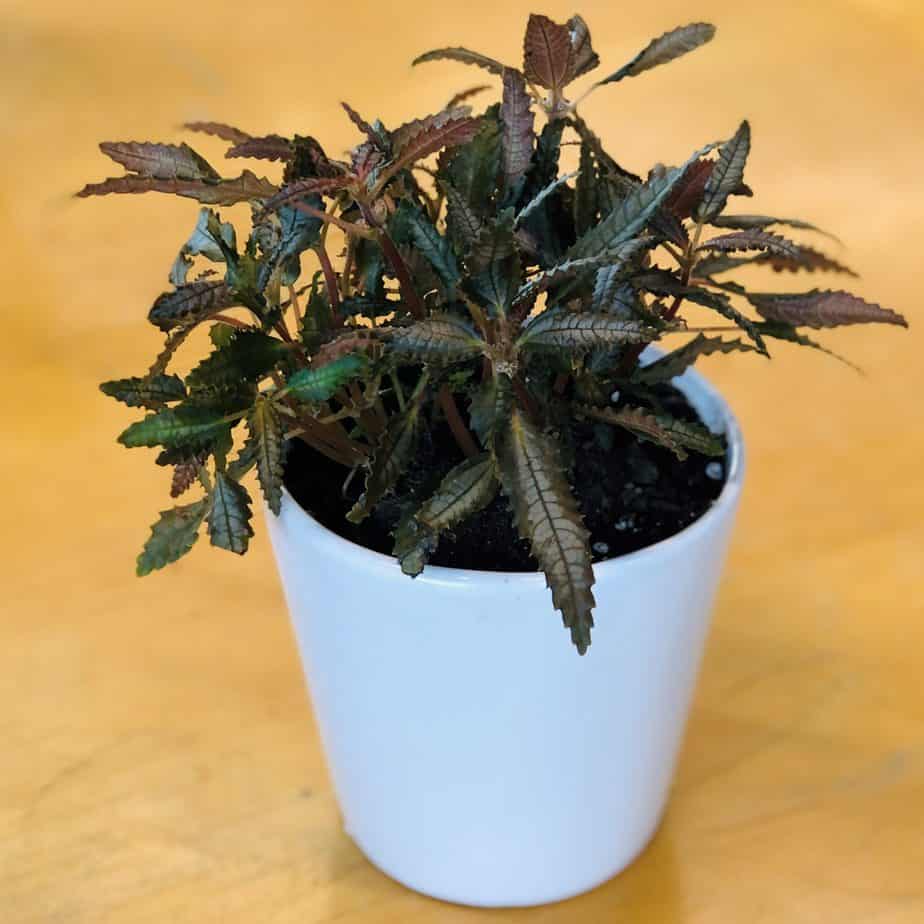
| Common Name | Pilea, Dark Mystery |
| Botanical Name | Pilea … |
| Family | Urticaceae |
| Plant Type | Perennial |
| Mature Size | 6-12 in. tall, 6-12 in. wide |
| Sun Exposure | Partial |
| Soil Type | Loamy, Moist but Well-drained |
| Soil pH | Acidic, Neutral |
| Bloom Time | Spring |
| Flower Color | |
| Hardiness Zones | 11-12, USA |
| Native Area | South America, Central America |
POLKA DOT PLANT
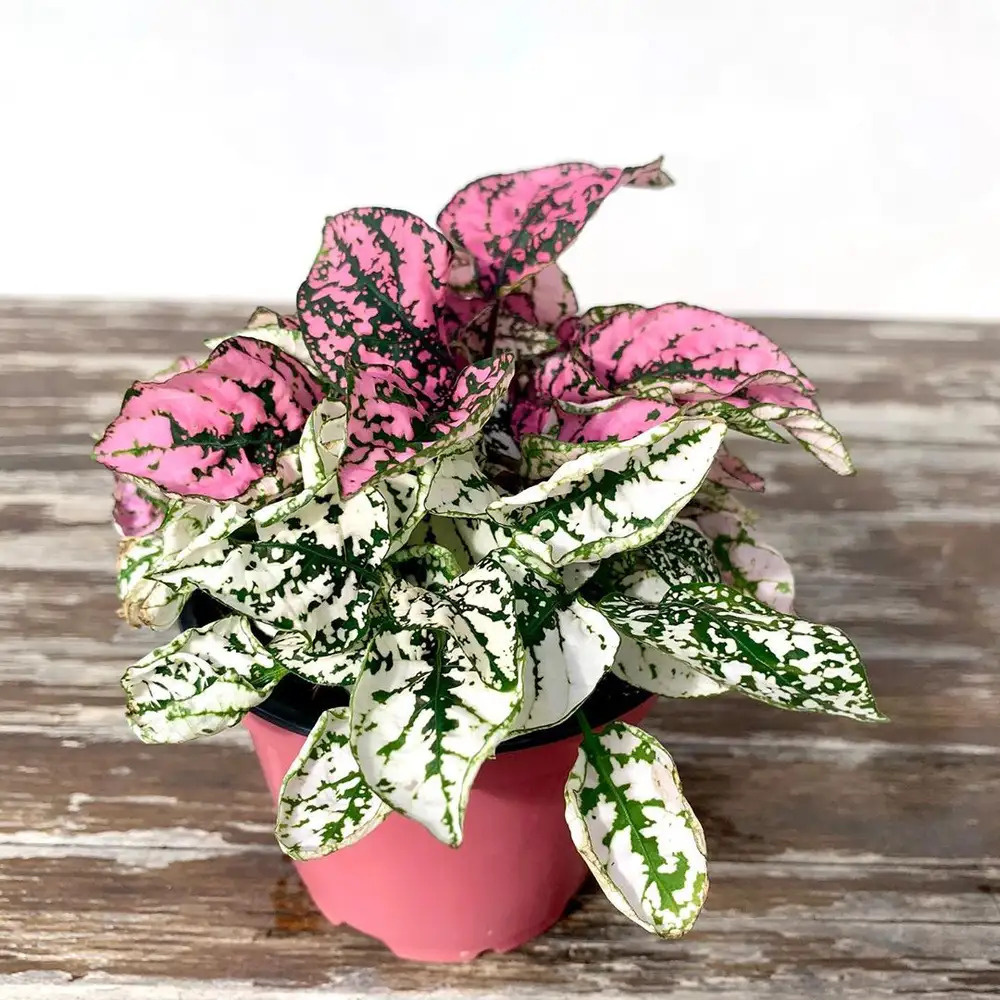
| Common Names | Polka dot plant, flamingo plant, freckle face, measles plant, pink dot |
| Botanical Name | Hypoestes phyllostachya |
| Family | Acanthaceae |
| Plant Type | Herbaceous perennial in its hardiness zone; annual or houseplant elsewhere |
| Mature Size | 1-2 ft. tall, 1-2 ft. wide |
| Sun Exposure | Partial |
| Soil Type | Moist, well-drained |
| Soil pH | Neutral |
| Bloom Time | Summer or early fall |
| Flower Color | Lilac or pink |
| Hardiness Zones | 10 to 11, USDA |
| Native Area | Madagascar |
POTHOS, GOLDEN
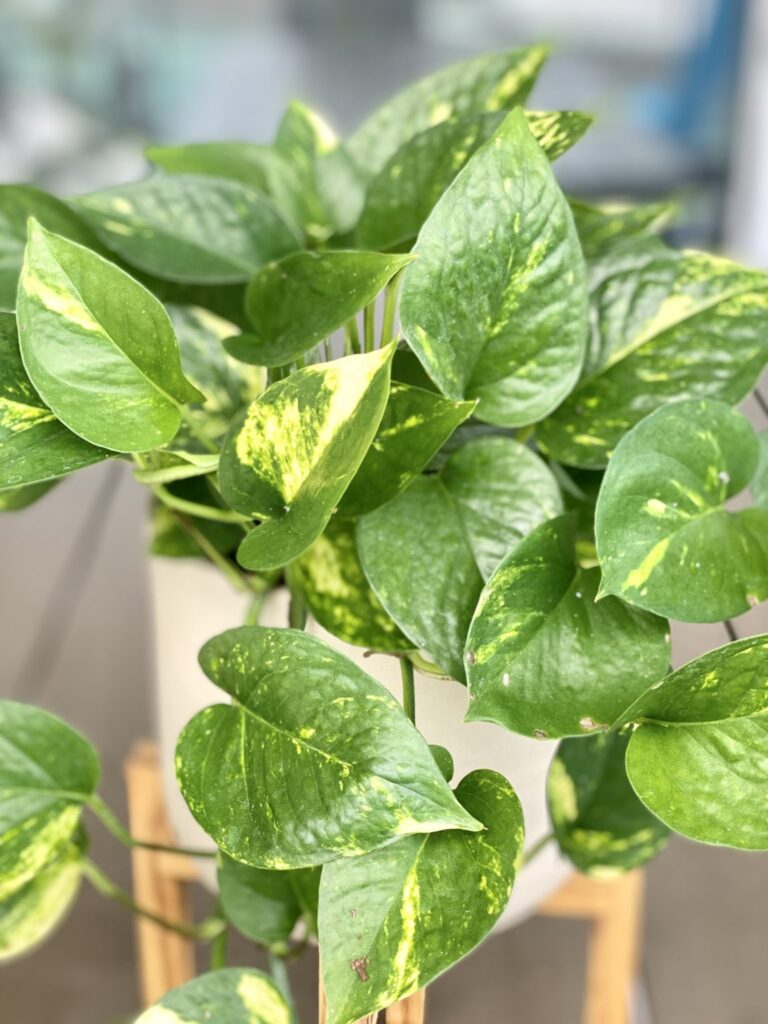
| Common Name | Pothos, Golden Pothos, Devil’s Vine, Devil’s Ivy |
| Botanical Name | Epipremnum aureum |
| Family | Araceae |
| Plant Type | Vine |
| Mature Size | 20–40 ft. long, 3–6 ft. wide |
| Sun Exposure | Full sun, partial shade |
| Soil Type | Moist but well-drained |
| Soil pH | Neutral to slightly acidic |
| Bloom Time | Rarely flowers |
| Flower Color | Gold/Yellow, Purple/Lavender |
| Hardiness Zones | 10–12 (USDA) |
| Native Areas | Asia |
PROTEA, PINCUSHION

| Common Name | Protea plant |
| Botanical Name | Protea spp. |
| Family | Proteaceae |
| Plant Type | Shrub, tree |
| Mature Size | 6-26 ft. tall, 2-10 ft. wide |
| Sun Exposure | Full |
| Soil Type | Sandy, loamy, well-drained |
| Soil pH | Acidic |
| Bloom Time | Winter, spring |
| Flower Color | Pink, white |
| Hardiness Zones | 9-12 (USDA) |
| Native Area | Africa |
PROTEA, WOOLEY BEARDED QUEEN

| Common Name | Protea plant |
| Botanical Name | Protea spp. |
| Family | Proteaceae |
| Plant Type | Shrub, tree |
| Mature Size | 6-26 ft. tall, 2-10 ft. wide |
| Sun Exposure | Full |
| Soil Type | Sandy, loamy, well-drained |
| Soil pH | Acidic |
| Bloom Time | Winter, spring |
| Flower Color | Pink, white |
| Hardiness Zones | 9-12 (USDA) |
| Native Area | Africa |
REX BEGONIA
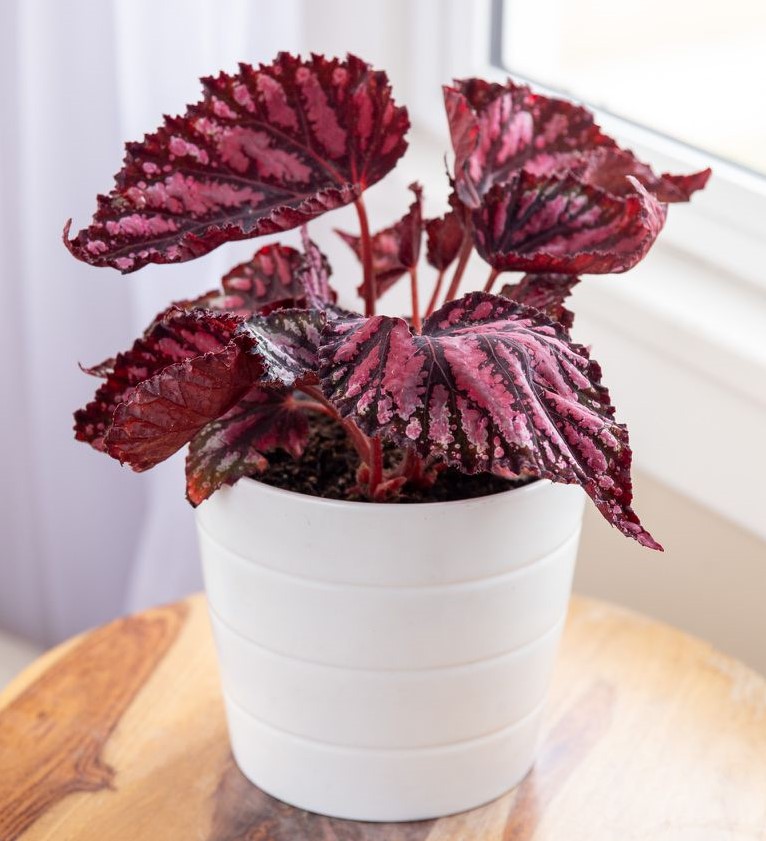
| Common Name | Rex begonia |
| Botanical Name | Begonia rex-cultorum |
| Family | Begoniaceae |
| Plant Type | Herbaceous, perennial |
| Mature Size | 12-18 in. tall, similar spread |
| Sun Exposure | Partial, shade |
| Soil Type | Well drained |
| Soil pH | Acidic |
| Hardiness Zones | 10-12 (USDA) |
| Native Area | Asia |
SEDUM, ADOLPHI
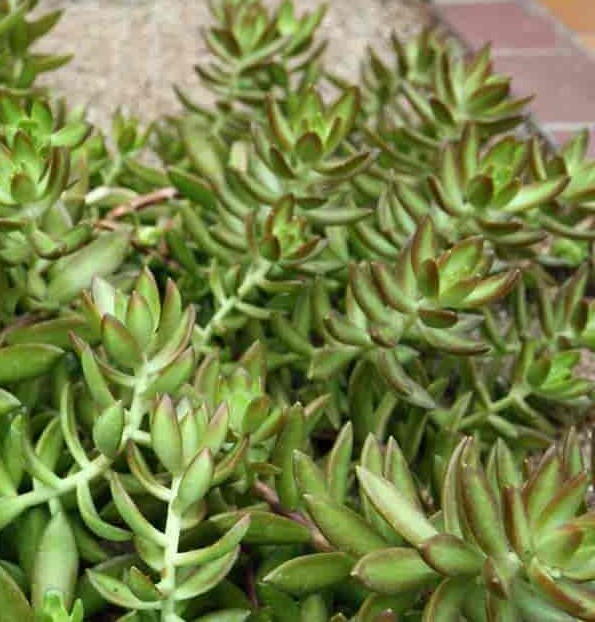
- Botanical Name: Sedum adolphii
- Common Name(s): Golden Sedum, Coppertone stonecrop
- Synonyms: Sedum nussbaumerianum, Sedum adolphi
- Pronunciation: SEE-dum ad-OL-fee-eye
- Family & Origin: Crassulaceae family, native to Mexico and Honduras
- Growability: Easy to grow and care for
- Grow Zone: USDA zones 8-11
- Size: Grows up to 10″-12″ inches tall and 2′ feet wide
- Flowering: Produces star-shaped white and yellow flowers during late winter
- Light: Full sun to partial shade
- Humidity: Does well in 40-60% humidity levels
- Temperature: Thrives in temperatures between 65° to 75° degrees Fahrenheit
- Soil: Porous, well-draining, sandy mixture
- Water: Water thoroughly when the soil is dry to the touch, but avoid overwatering
- Fertilizer: Fertilize once a month during the growing season with a diluted fertilizer at ¼ strength
- Pests & Diseases: Can be susceptible to mealybugs but generally not prone to diseases
- Propagation: Can be propagated through stem cuttings or leaf cuttings
- Plant Uses: Makes a great addition to succulent gardens, rock gardens, or as a houseplant. Can also be used in hanging baskets or as ground cover.
SEDUM, AUTUMN JOY

| Botanical Names | Hylotelephium telephium ‘Herbstfreude’ (‘Autumn Joy’), formerly Sedum telephium ‘Autumn Joy’ |
| Common Names | Autumn Joy, Autumn Joy stonecrop, stonecrop, sedum, rock moss, gold chain |
| Family | Crassulaceae |
| Plant Type | Herbaceous, perennial |
| Mature Size | 1.5–2 ft. tall and wide |
| Sun Exposure | Full |
| Soil Type | Sandy, well-drained |
| Soil pH | Acidic, neutral, alkaline |
| Bloom Time | Summer, fall |
| Flower Color | Pink, red |
| Hardiness Zones | 3-9 (USDA) |
| Native Areas | Europe, Asia |
SEDUM, GOLDEN CREEPING

Scientific Name: Sedum adolphi R.-Hamet
Common Name(s): Adolph’s Sedum, Golden Glow, Golden Glow Sedum, Golden Sedum
Scientific Classification
Family: Crassulaceae
Subfamily: Sempervivoideae
Tribe: Sedeae
Genus: Sedum
Origin: Sedum adolphi is native to Mexico. It grows in rocky terrain and on cliff faces in Veracruz.
Description: Sedum adolphi, also known as Sedum nussbaumerianum, is a lovely, much-branched succulent shrub with spreading, sprawling, or ascending stems and yellow-green leaves that take on the orange-red highlights in full sun. It grows up to 12 inches (30 cm) tall. Leaves are broadly lanceolate to obovate and up to 1.2 inches (3 cm) long. As stems age, they produce new leaves, shedding the oldest.
SEDUM, VARIEGATED

| Common Names | Sedum, stonecrop, showy stonecrop, border stonecrop |
| Botanical Name | Sedum spp. |
| Family | Crassulaceae |
| Plant Type | Perennial |
| Mature Size | 6–24 in. tall, 12–24 in. wide |
| Sun Exposure | Full, partial |
| Soil Type | Sandy, loamy, well-drained |
| Soil pH | Acidic, neutral |
| Bloom Time | Summer, fall |
| Flower Color | White |
| Hardiness Zones | 3–10 (USDA) |
| Native Area | North America, South America, Central America, Europe, Asia, Africa, Mediterranean |
SILVER TEASPOONS

Silver teaspoons is a slow-growing, compact shrubby succulent that is native to Madagascar. It is a member of the stonecrop or orpine family (Crassulaceae). The specific epithet, bracteata, refers to the floral bracts of this species. Its silvery, pubescent, and spoon-shaped leaves reference its common names, silver spoons and silver teaspoons.
This plant prefers bright, indirect light and well-drained soil. It can tolerate some direct sun, but it is best to avoid the hot afternoon sun. It prefers warm climates and does well in USDA hardiness zones 9 to 11. In colder climates, it can be used as a houseplant. The soil should be high in organic matter. For indoor plants, a succulent or cactus potting mix is recommended. Avoid overwatering. It is best to let the soil to dry out between waterings. The plant is dormant during the winter and watering should be further reduced during that time. Propagation can be completed through stem cuttings.
SWISS CHEESE PLANT

| Common Name | Swiss cheese plant, Swiss cheese vine, five holes plant, cheese plant |
| Botanical Name | Monstera adansonii |
| Family | Araceae |
| Plant Type | Perennial |
| Mature Size | 10–13 ft. tall (outdoors), 3–8 ft. tall (indoors), 1–3 ft. wide |
| Sun Exposure | Partial |
| Soil Type | Moist, well-drained |
| Soil pH | Acidic, neutral |
| Bloom Time | Spring (does not bloom indoors) |
| Flower Color | White |
| Hardiness Zones | 10–12 (USDA) |
| Native Area | Central America, South America |
STINGING STONECROP

Scientific Name
Sedum sarmentosum Bunge
Common Name(s)
Gold Moss, Gold Moss Sedum, Gold Moss Stonecrop, Graveyard Moss, Star Sedum, Stringy Stonecrop, Trailing Stonecrop, Yellow Moss
Synonym(s)
Sedum sarmentosum var. sarmentosum
Scientific Classification
Family: Crassulaceae
Subfamily: Sempervivoideae
Tribe: Sedeae
Genus: Sedum
Etymology
The specific epithet “sarmentosum (sar-men-TOH-sum)” means “full of runners” and refers to the stems that send out long filiform runners.
Origin
Sedum sarmentosum is native to China, Japan, and Korea.
Description
Sedum sarmentosum is a mat-forming succulent with branched, creeping or ascending stems that can grow up to 10 inches (25 cm) long, rooting at the nodes. The leaves are thick, fleshy, yellowish-green, and arranged in whorls of 3. They are lance-shaped, measuring up to 1 inch (2.5 cm) long and 0.25 inches (0.6 cm) wide.
The star-shaped flowers are yellow and appear on branched inflorescences in summer.
STINGY STONECROP
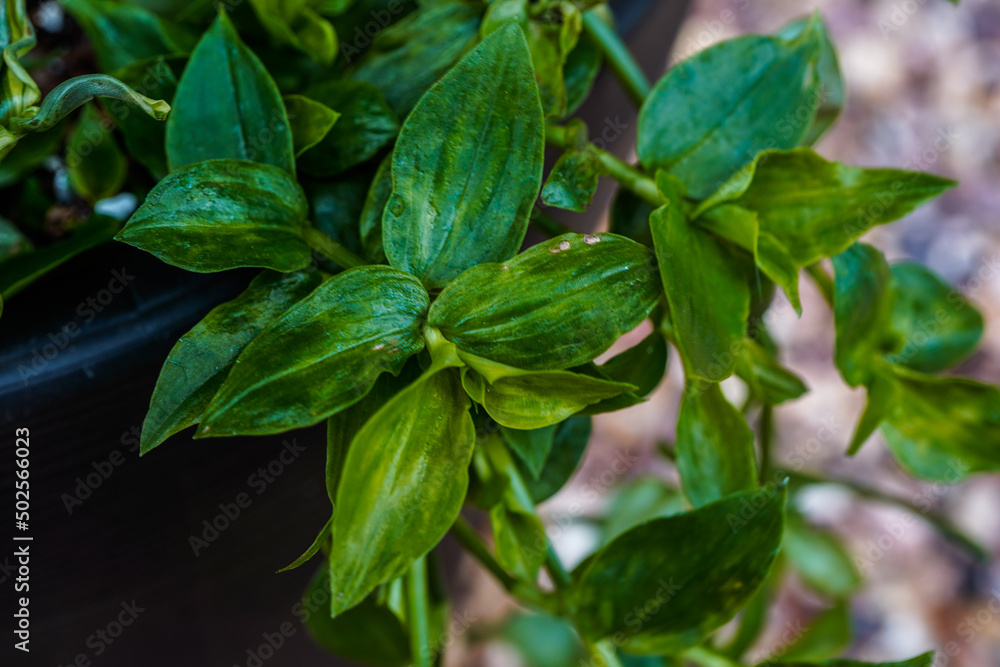
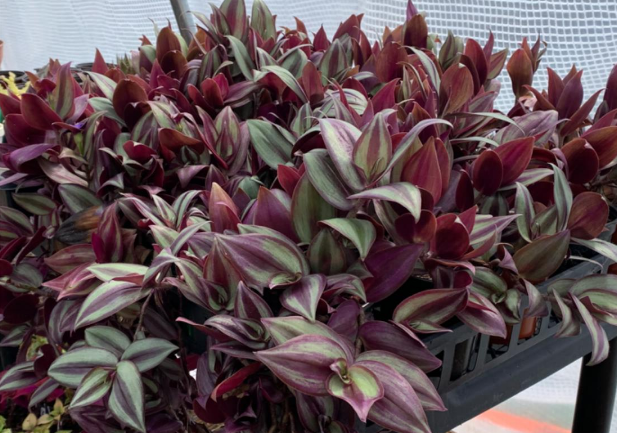
| Common Name | Spiderwort, inch plant |
| Botanical Name | Tradescantia |
| Family | Commelinaceae |
| Plant Type | Herbaceous perennial |
| Mature Size | N/A (vining species) |
| Sun Exposure | Full sun, partial shade |
| Soil Type | Moist but well-drained |
| Soil pH | Neutral to acidic |
| Bloom Time | Year-round |
| Flower Color | White, purple, pink |
| Hardiness Zones | 4b to 12a |
| Native Area | Mexico, South America, Caribbean |
SHRUBS & TREES
ALTHEA, ROSE OF SHARON

| Common Name | Rose of Sharon, shrub althea, rose mallow, Syrian mallow, Syrian hibiscus |
| Botanical Name | Hibiscus syriacus |
| Family | Malvaceae |
| Plant Type | Shrub |
| Mature Size | 8–12 ft. tall, 6–10 ft. wide |
| Sun Exposure | Full, partial |
| Soil Type | Moist, well-drained |
| Soil pH | Acidic, neutral |
| Bloom Time | Summer, fall |
| Flower Color | Pink, purple, lavender, red, blue, white; often with dark throats |
| Hardiness Zones | 5–8, USDA |
| Native Area | Asia |
DOGWOOD, RED OSIER, RED TWIG
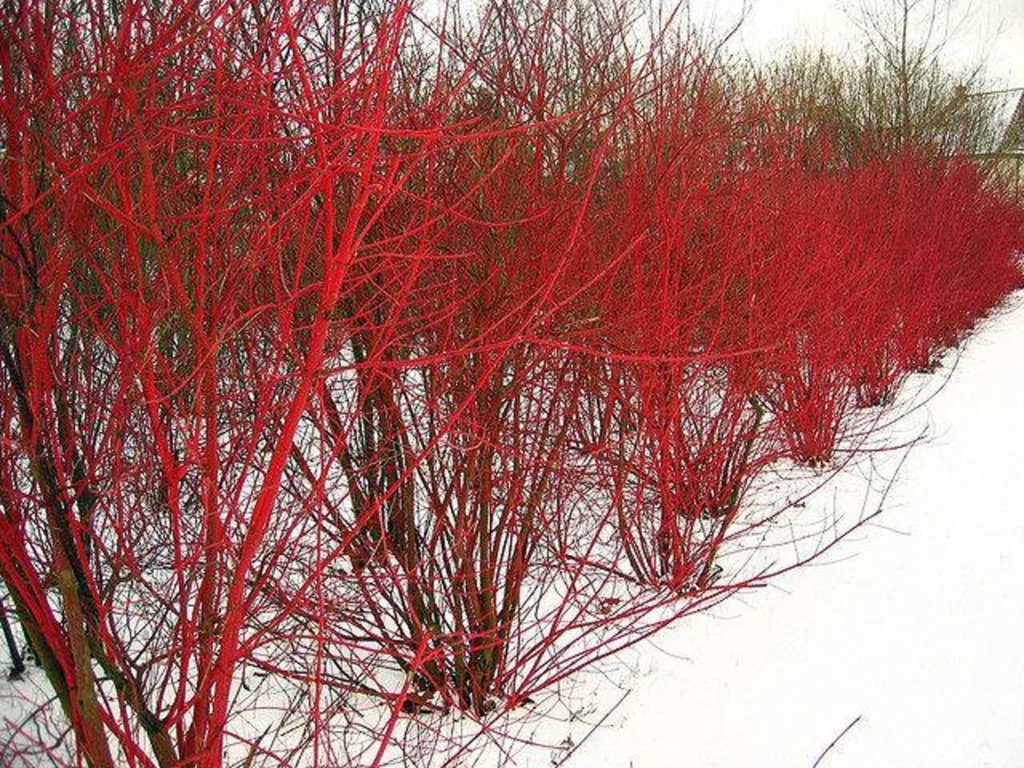
| Common Names | Red-twig dogwood, red osier dogwood, Tatarian dogwood |
| Botanical Name | Cornus servicea, Cornus alba, or Cornus sanguinea |
| Family | Cornaceae |
| Plant Type | Shrub |
| Mature Size | 6–9 ft. tall, 8–12 ft. wide |
| Sun Exposure | Full, partial |
| Soil Type | Moist |
| Soil pH | Acidic |
| Bloom Time | Spring |
| Flower Color | White |
| Hardiness Zones | 3–8 (USDA) |
| Native Area | North America |
NANDINA
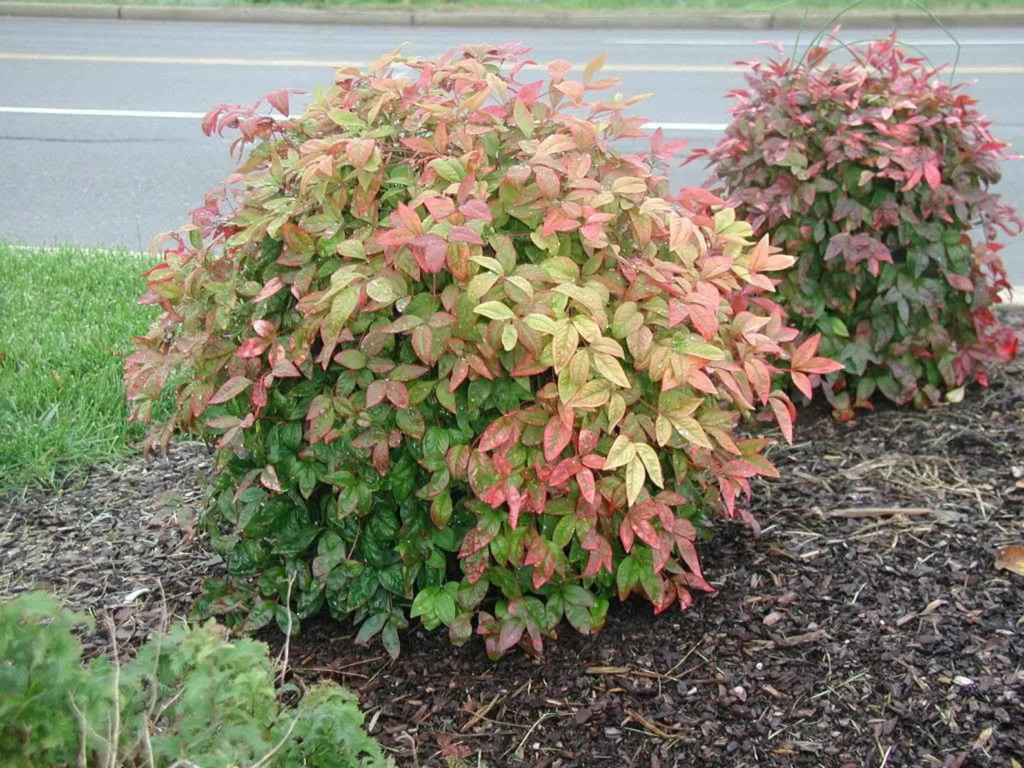
| Plant Habit: | Shrub |
| Sun Requirements: | Full Sun to Partial Shade |
| Water Preferences: | Mesic |
| Minimum cold hardiness: | Zone 6a -23.3 °C (-10 °F) to -20.6 °C (-5 °F) |
| Plant Height: | 6-8 ft. |
| Plant Spread: | 4-6 ft. |
| Leaves: | Good fall color Unusual foliage color Evergreen Semi-evergreen Broadleaf |
| Fruit: | Showy Edible to birds |
| Flowers: | Showy |
| Flower Color: | White |
PUSSY WILLOW
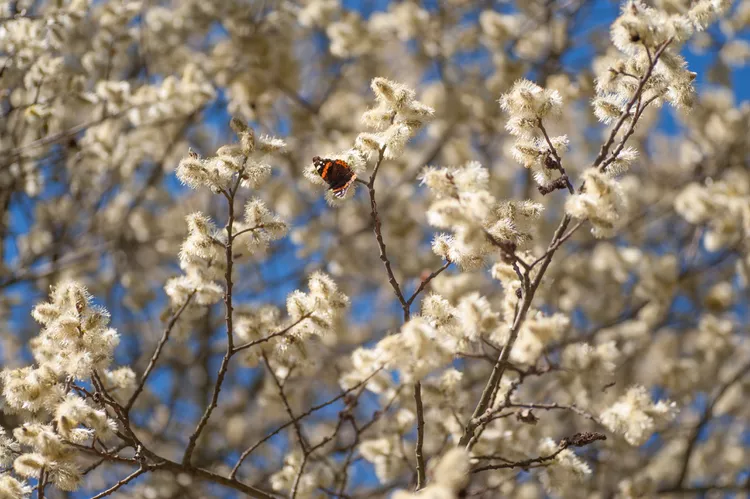
| Common Name | Pussy willow, glaucous willow |
| Botanical Name | Salix spp. |
| Family | Salicaceae |
| Plant Type | Shrub |
| Mature Size | 6–25 ft. tall, 4–15 ft. wide |
| Sun Exposure | Full, partial |
| Soil Type | Loamy |
| Soil pH | Neutral |
| Bloom Time | Spring |
| Flower Color | White |
| Hardiness Zones | 4–8 (USDA) |
| Native Area | North America, Europe, Asia |
WAX MYRTLE
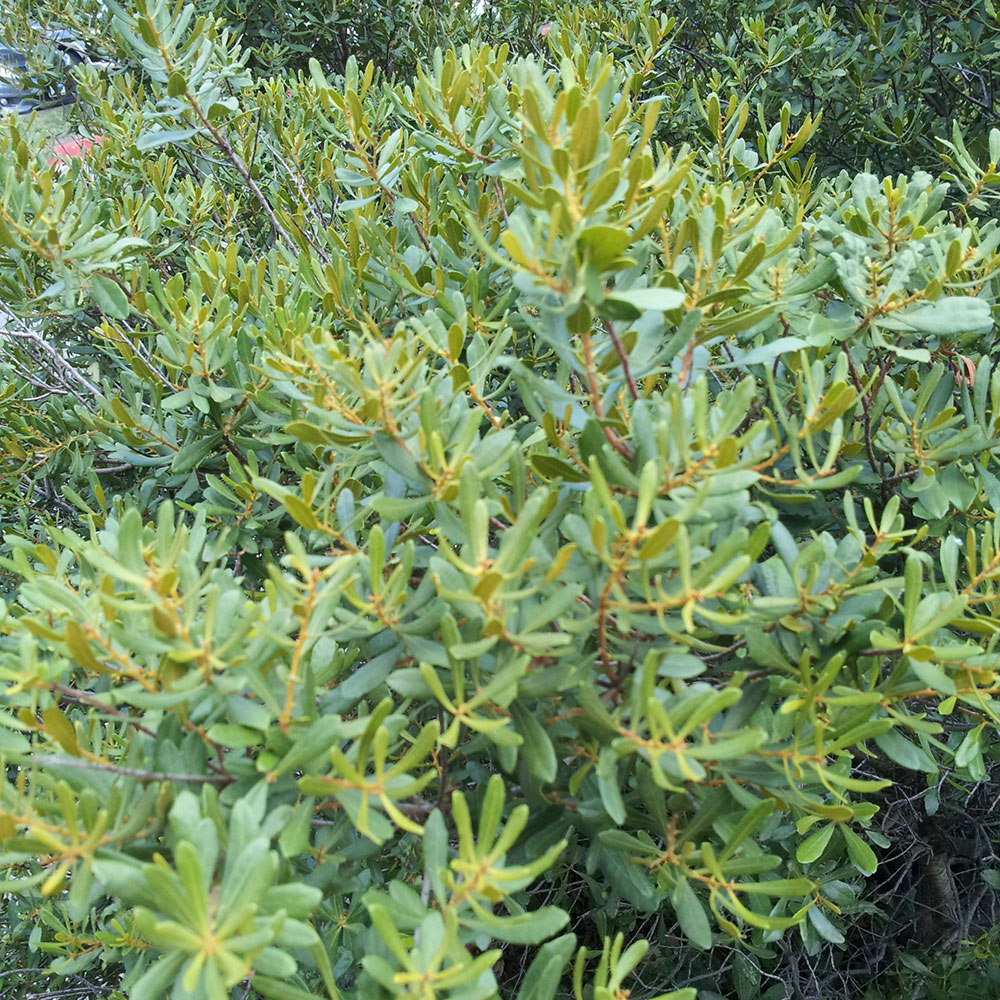
Wax myrtle (Myrica cerifera) is a small, broadleaf evergreen shrub that makes an excellent addition to almost any landscape. In the South they’re popular grown as hedges, but these attractive trees can also be used as specimens. Read here about growing tips for wax myrtle trees and shrubs.
- Botanical name: Morella cerifera; formerly Myrica cerifera
- Height: to 20 feet but often smaller
- Spread: to 20 feet but often smaller
- Sun exposure: partial shade to full sun
- Soil requirements: good drainage and slightly acidic soils.
- Hardiness zones: 7-10
- When to plant: transplant in spring or fall

WILLOW CORKSCREW

| Common Name | Corkscrew willow, Pekin willow, Hankow willow, twisted-twig willow, contorted willow, curly willow |
| Botanical Name | Salix matsudana ‘Tortuosa’, S. matsudana ‘Koidzumi’ |
| Family | Salicaceae |
| Plant Type | Tree |
| Mature Size | 30-40 ft. tall, 15-20 ft. wide |
| Sun Exposure | Full, partial |
| Soil Type | Loamy, sandy, clay, moist |
| Soil pH | Acidic, neutral, alkaline |
| Bloom Time | Spring |
| Flower Color | Yellow, green |
| Hardiness Zones | 4-8 (USDA) |
| Native Area | Asia |
YAUPON HOLLY
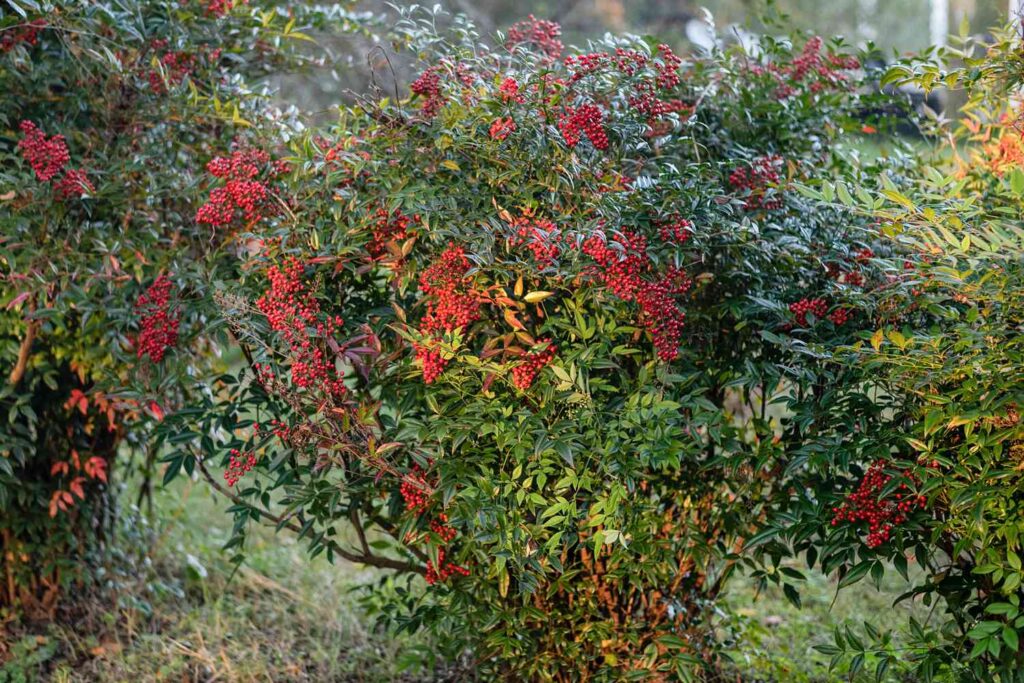
| Common Name | Yaupon holly, yaupon |
| Botanical Name | Ilex vomitoria |
| Family | Aquifoliaceae |
| Plant Type | Shrub, tree |
| Mature Size | 10-20 ft. tall, 8-12 ft. width |
| Sun Exposure | Full, partial, shade |
| Soil Type | Loamy, sandy, clay, silt, moist but well-drained |
| Soil pH | Acidic, neutral, alkaline |
| Bloom Time | Spring |
| Flower Color | Green, white |
| Hardiness Zones | 7-9 (USDA) |
| Native Area | North America |
Contact us at [email protected]
Developed by McLean Advertising
Designed by J.McDowell
